The best art museums in the world for art lovers offer a unique experience to learn about art history and humanity as we can study art masterpieces in the context of socio-economic and political changes rather than from a technical point of view. Top art museums for art lovers offer visitors a chance to appreciate the beauty, cultural significance, creativity, and history of different people from across the world regardless of current views on culture appropriation or colonialism issues. While we can argue which must-see museums are the best ones because art is always subjective, I list the 15 best art museums in the world based on the art collection variety, size, and overall museum experience. Every art collector and art enthusiast is going to be inspired by these top art museums in Europe and the US.
#1 The Vatican Museums, Vatican City, Italy
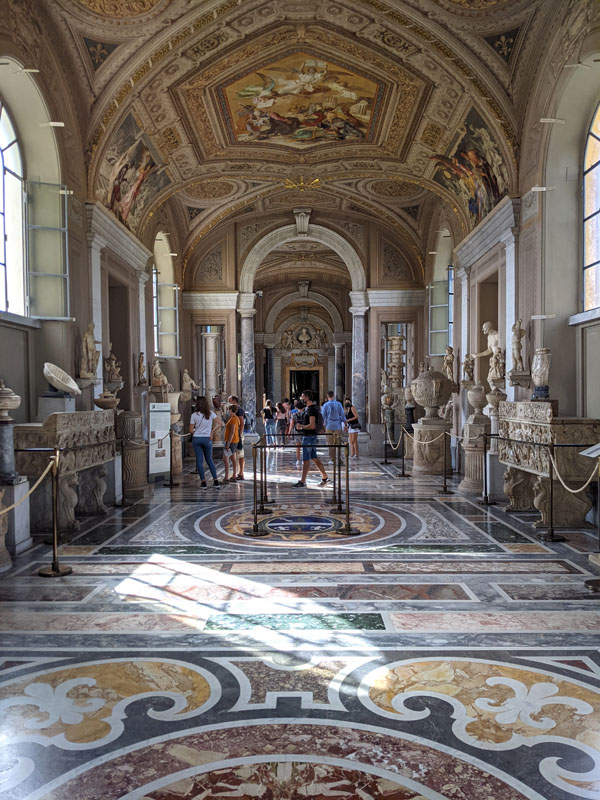
The Vatican Museums house an extraordinary art collection of the most famous ancient Greco-Roman art, Egyptian art, Italian Renaissance art, and Baroque art. The Vatican City has a maze of rooms, hallways, museums, chapels, pavilions, and apartments, including the Ethnological Museum and the Pio Clementino Museum as well as beautiful gardens and St. Peter’s Basilica. The Vatican Library houses an incredible collection of books, manuscripts, and other documents. Plan to spend a day on the grounds of the Vatican City. You must see:
The Sistine Chapel Ceiling by Michelangelo: This masterpiece is one of the most famous artworks in the world, depicting scenes from the book of Genesis. The ceiling, completed in the early 16th century, is renowned for its monumental beauty and complexity of figures placed in space. Figures twist, turn and stare, carrying Michelangelo’s sculptural quality in painted form. No photography or talking is allowed in the chapel.
The School of Athens by Raphael: This fresco is one of the most famous paintings of High Renaissance art significant as a reflection of Renaissance humanism, depicting a group of ancient Greek philosophers and thinkers. Located in the Vatican Palace, The Raphael Rooms are a series of 4 rooms that include The Transfiguration mural. Just like Leonardo and Michelangelo, Raphael showed thorough planning designing the figures in space with correct perspective and balanced composition.
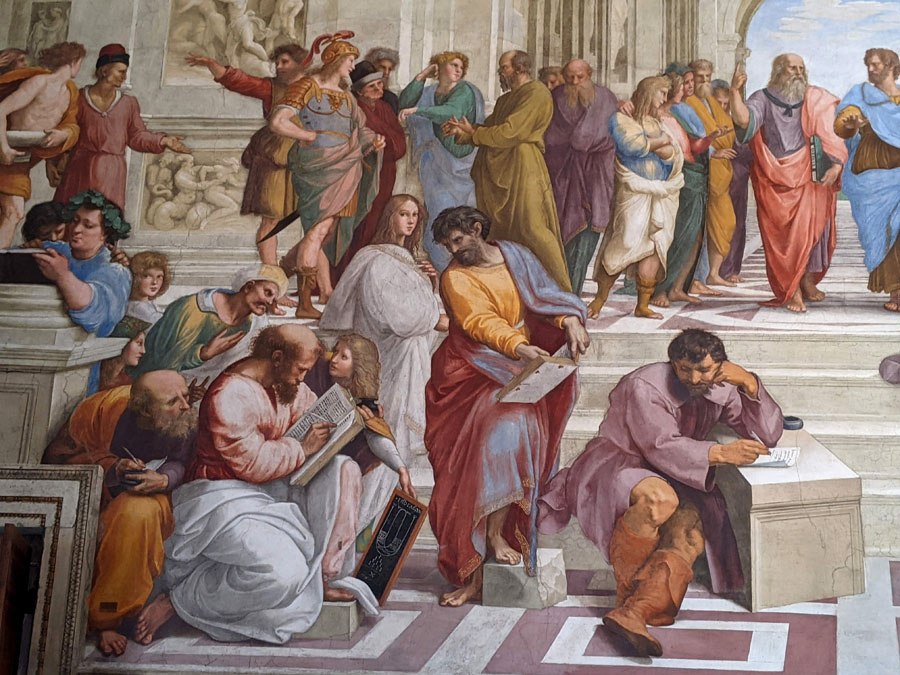
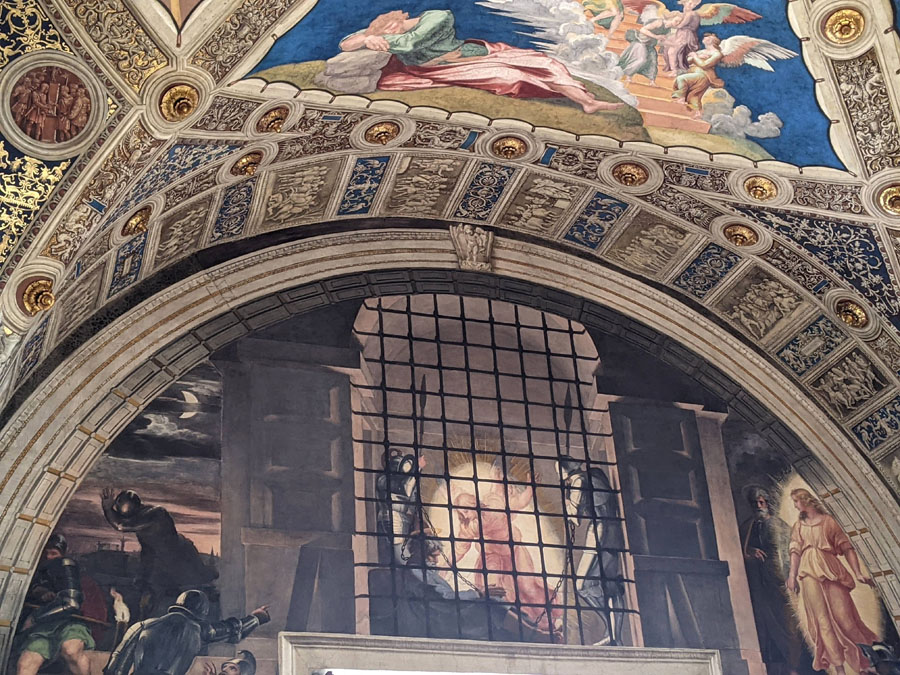
The Laocoön Group: Found in 1506, a Hellenistic sculpture from ancient Greece dating from around 40-30 B.C., depicts a priest of Apollo in the city of Troy, Laocoön, and his sons being strangled by sea serpents.
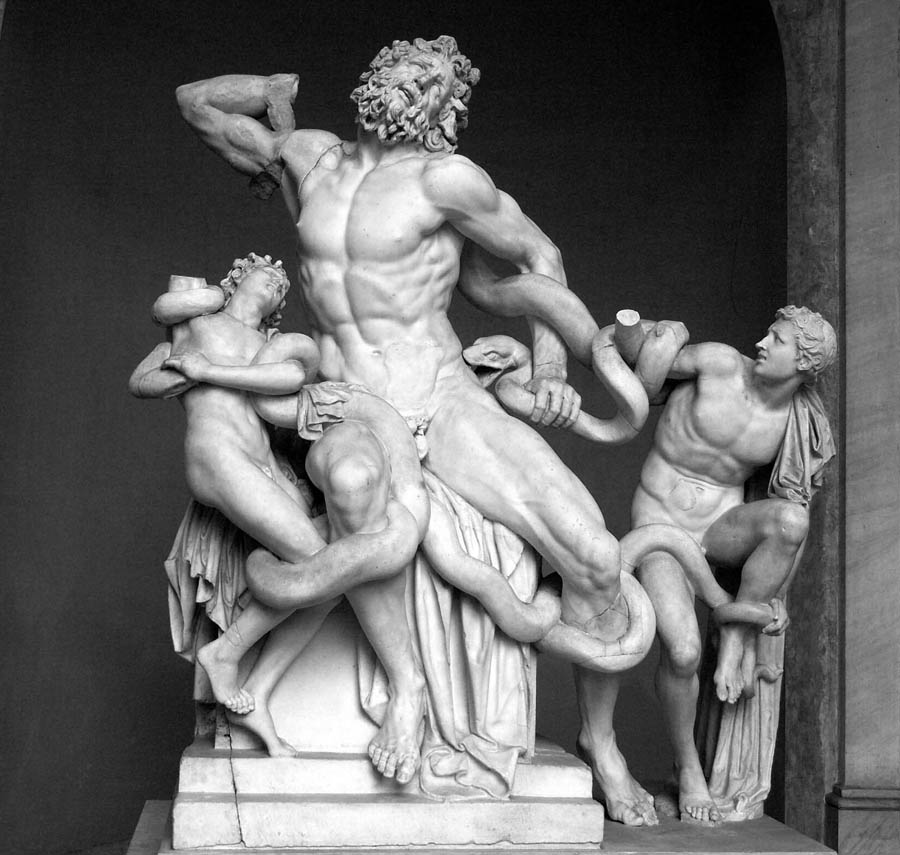
- The Apollo Belvedere: This ancient Roman sculpture depicts the god Apollo, and is considered one of the greatest works of antiquity because it captures the perfection or the highest ideal of art in the human figure. ‘Belvedere’ roughly translates as a ‘beautiful view’ in Italian. A youthful, nude man has just released an arrow from his bow allowing viewers to admire his lifelike beauty made of marble. According to the museum, the sculpture has been dated to the 2nd century A.D. and is considered to be a copy of an original bronze statue of 330-320 B.C.
- The Gallery of Maps – a long corridor lined with colorful maps of Italy, commissioned by Pope Gregory XIII in the late 16th century. But to be honest, any hallway or corridor in the Vatican is an amazing work of art that beats the gallery of maps.
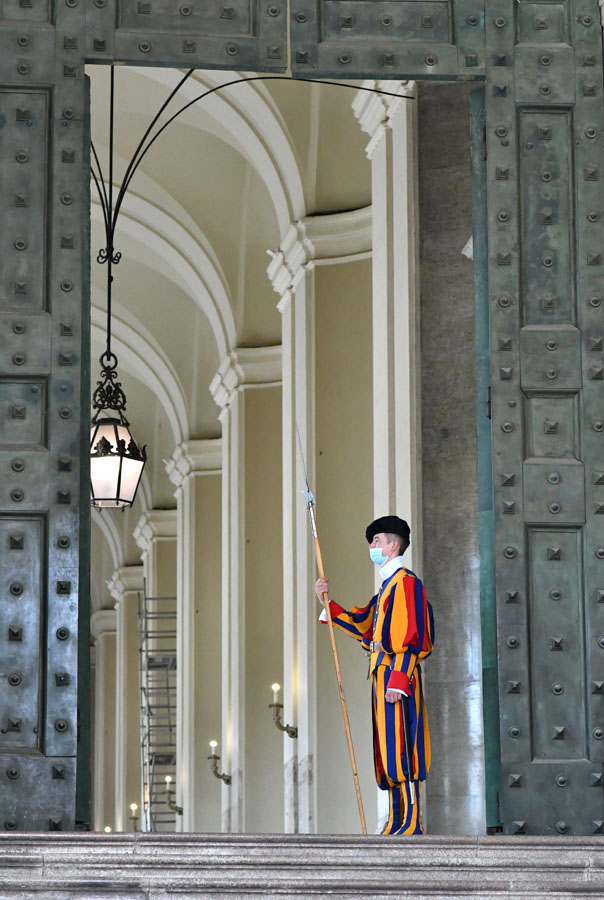
The Belvedere Torso is the marble torso with the identity of the figure being open to interpretation for centuries! It’s a beautiful fragment of a Hellenistic statue from ancient Greece. This fragmented statue was found in Rome at the end of the 15th century. “Current hypothesis identifies the male marble sculpture as the Greek hero Ajax, contemplating his suicide. According to the museum’s notes, Ajax becomes enraged when Achilles’ armor is awarded to Odysseus and not him during the Trojan Wars and so he kills himself. “The head was leaning sadly towards the right hand which was gripping the sword with which the hero would take his own life. The sculpture dates from the 1st century B.C. and is signed by the Athenian sculptor Apollonios, an artist of the neo-Attic school, who was most probably inspired by a bronze from the first half of the 2nd century B.C.”
The Pietà and St. Peter’s Basilica
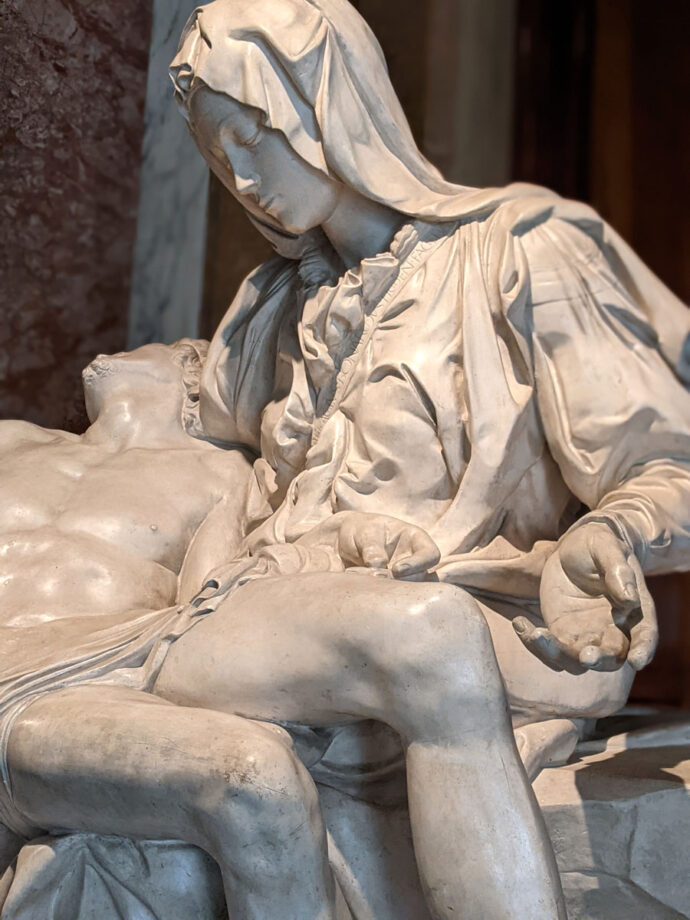
Located in the St. Peter’s Basilica in Vatican City, the Pietà is an emotional sculpture by the Italian Renaissance artist Michelangelo. It depicts the Virgin Mary holding the dead body of Jesus after his crucifixion. The Renaissance sculpture is one of the most famous artworks in the world. The Pietà was commissioned by Cardinal Jean de Bilhères, who was a French ambassador in Rome. Michelangelo was just 23 years old when he carved the ethereal statue from pure white, Carrara marble in 1499. It is the only piece of sculpture that Michelangelo ever signed.
The Pietà is a powerful and moving work of art. The Virgin Mary is shown grieving the death of her son holding him on her knees, but she is also shown with a sense of peace, hope, and faith. Michelangelo was a religious man and he created an emotional depiction of the Christian faith. From the technical point, Mary appears to be disproportionally tall in comparison to the body of Christ but who cares when this beautiful sculpture speaks volumes of human emotion.
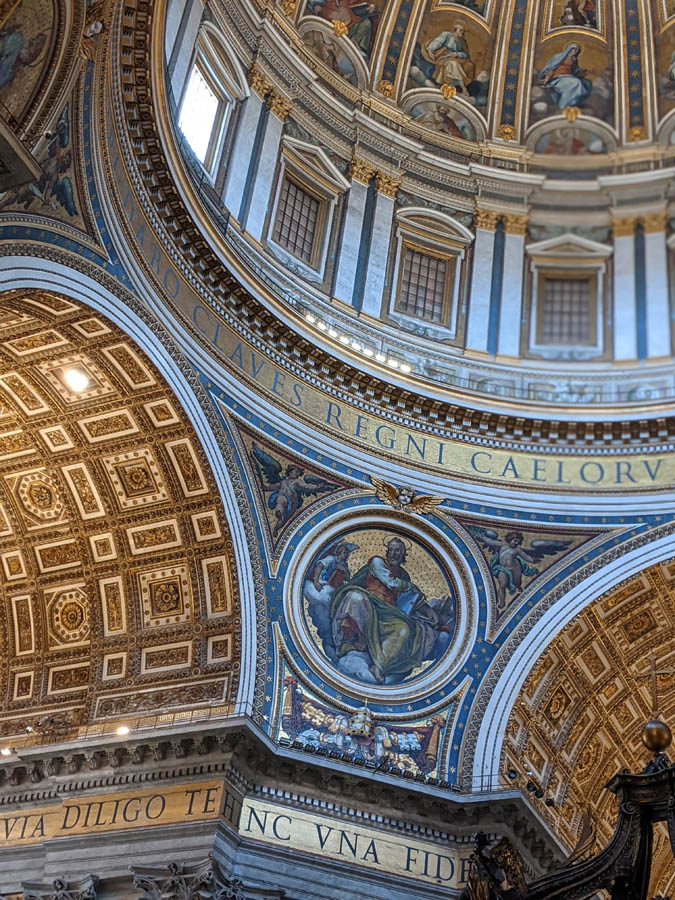
St. Peter’s Basilica is an architectural marvel on its own right that can’t be missed! It was designed and constructed by several famous architects and artists including Bramante, Michelangelo, Bernini and Maderno. The Baroque art, sculptures, tabernacle and dome inside the basilica impress with their overflowing rich decorum, monumentality, life-like appearance and scale. And while it’s not a museum in a traditional sense, it is one of the top must-see attractions for art lovers in the world.
#2 The Hermitage Museum, Saint Petersburg, Russia
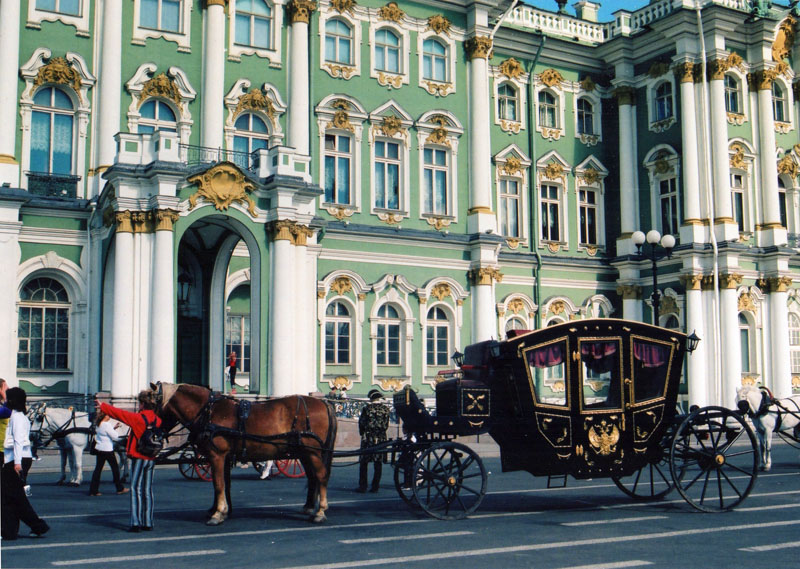
The Hermitage Museum is one of the largest, top art museums for art lovers in the world, housing over 3 million works of art and artifacts in a Winter Palace where Catherine the Great ruled Russia for 34 years, from 1762 to 1796. Catherine came to power after overthrowing her weak-minded husband, Peter III. The Empress was a highly intelligent woman, shrewd politician, and powerful ruler who oversaw a period of great change and expansion for Russia. She promoted education and the arts, and she expanded the Russian Empire into new territories.
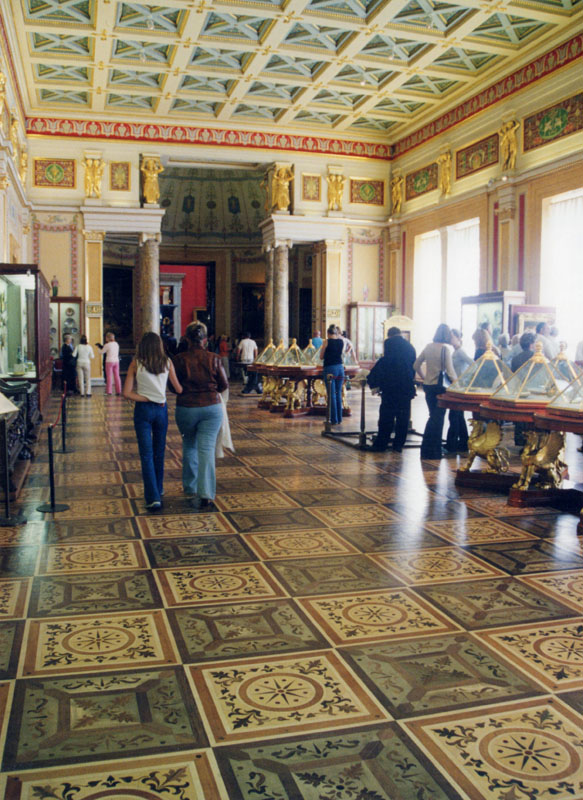
Located in the beautiful northern capital of Russia -Saint Petersburg, one of the best art museums in Europe was founded in 1764 when Empress Catherine the Great acquired 225 paintings by Western artists. She displayed her art collection in the private apartments of the palace first, which she called the Hermitage, which means “my solitude” in French. (Russian nobility spoke French until the revolution in 1917). As an avid art collector, Catherine the Great kept expanding her art collection which included antiques, sculpture, porcelain, furniture, giant semi-precious stone vases, jewelry, and paintings. So she expanded the building for it as well which was called the Great Hermitage and then the New Hermitage Palace after that. Consisting of 6 connected buildings, the “Hermitage complex” is also called the Winter Palace (one of the buildings) because the Empress spent most of her time in it. Her Summer Palace is located in Tsarskoye Selo. Catherine the Great loved to entertain Russian and European royalty with balls, theatre, and masquerades at the palace. The Winter Palace also held grand receptions and ceremonies for state and government officials. The Hermitage buildings served as a home and workplace for nearly a thousand people, including the Imperial family.
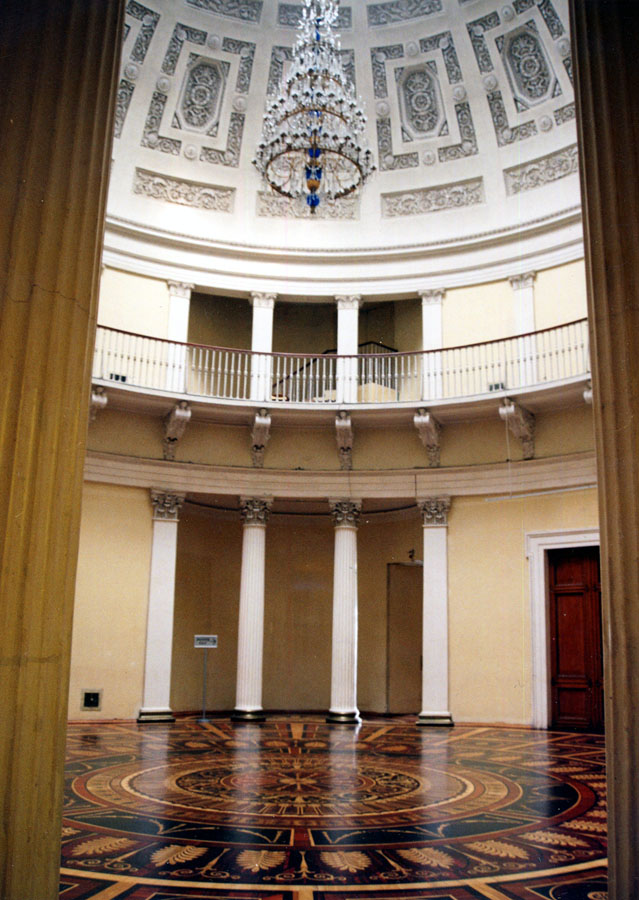
Main rooms in the Hermitage:
The Pavilion Hall
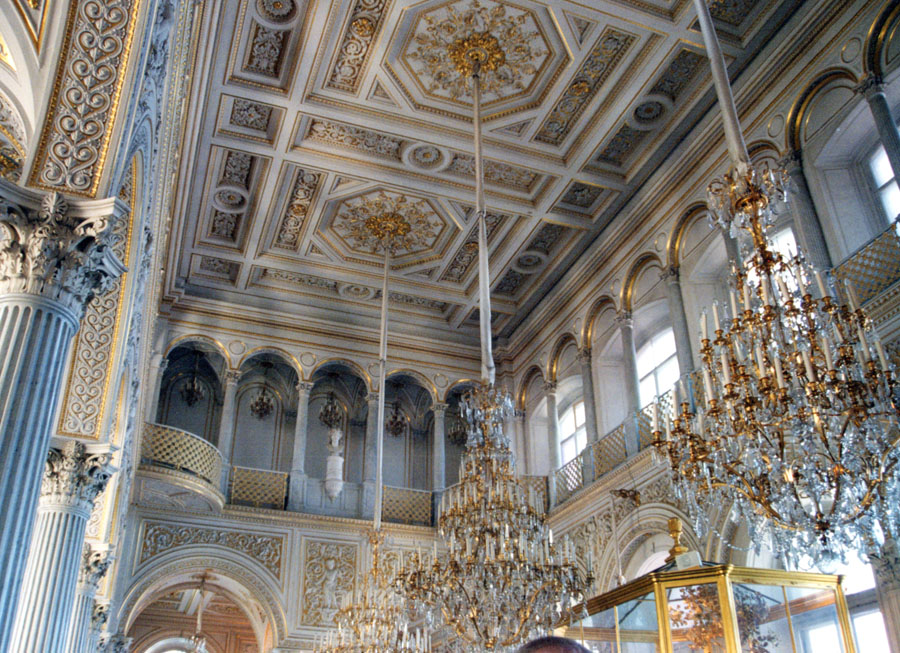
The pavilion hall is the most stunning room in the Small Hermitage, designed in the mid-19th century in white and gold hues with oriental and classical decorum by Russian architect Andrei Stakenschneider. It’s so ethereally beautiful it reminds me of a magical, white wedding cake. Big, crystal chandeliers are reminiscent of the Versailles grandeur. In that room, you can find a big, mechanical clock with a peacock and moving figures, presented to Catherine by her lover Potemkin.
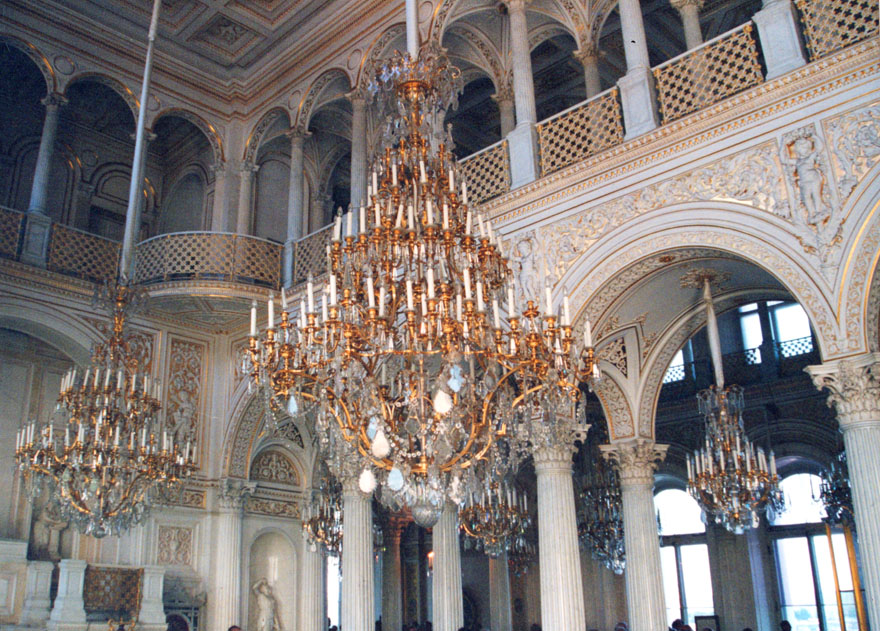
St. George’s or the Great Throne Hall. Designed in neoclassical style in white and gold, the hall features the royal throne for the reception.
The Armorial Hall. Used for special events, this great hall was created for celebrations. The Alexander Hall is named after Alexander I. In the Concert Hall you’ll find a silver shrine of Alexander Nevsky, the patron saint of St. Petersburg, entirely made of silver.
The Malachite room at the Hermitage
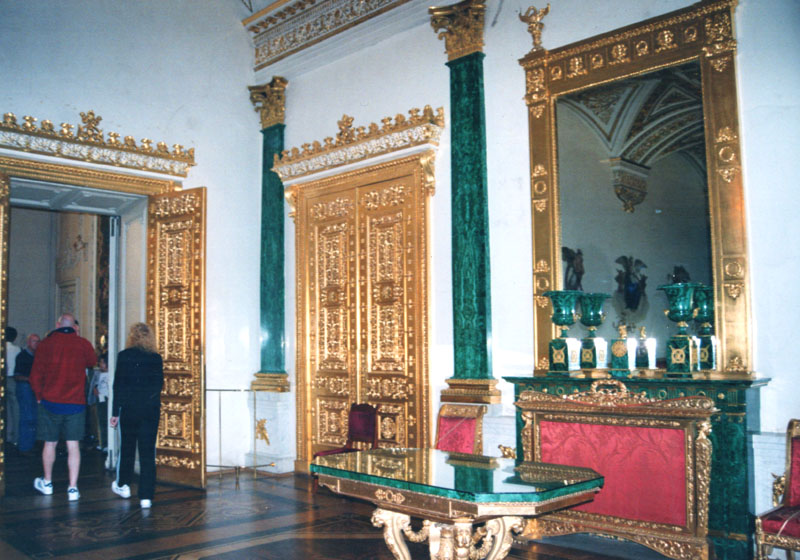
Created in 1838, the Malachite room is one of the most valuable drawing rooms in the palace because of its precious stone columns, tables, vases, and fireplace decorum. Malachite is a dark green, semi-precious stone coming from the mountain region of Russia – Ural. The room also features golden doors, dark red curtains, gilded element,s and incredibly rich, ornate ceilings and wooden floors.
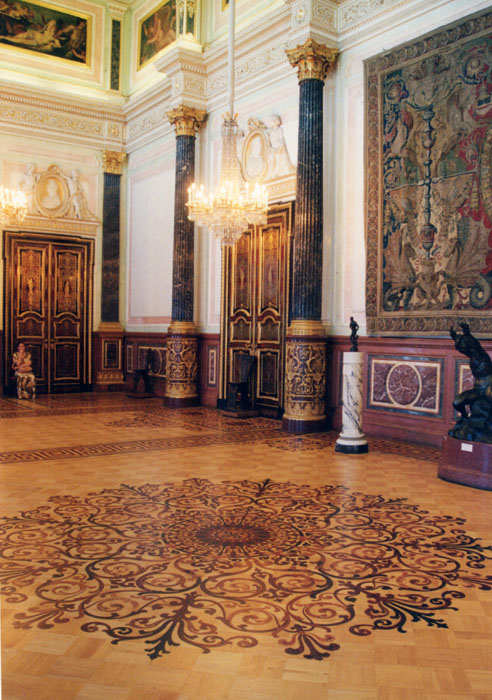
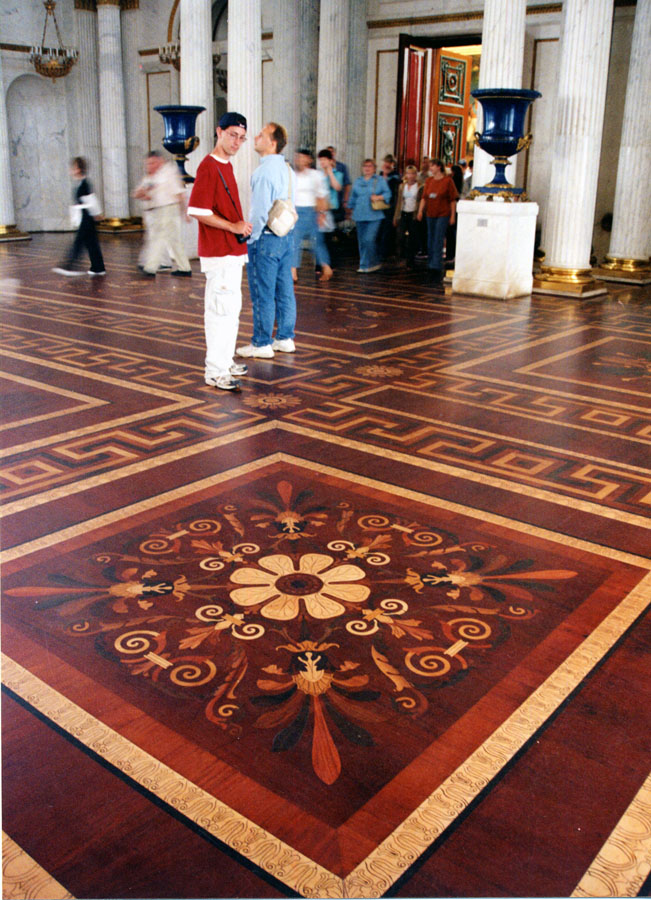
The Diamond Storeroom
The treasury is located away from the excursion routes around the museum, and not everyone knows about it. The secret room displays the jewels of the Romanov dynasty and St. Petersburg collectors, as well as diplomatic gifts, church utensils dating back to the Byzantine era, as well as masterpieces by Faberge, Pozier and other court jewelers. It requires a separate ticket that’s sold in addition to the general admission ticket to the Hermitage.
Art Collection at the Hermitage
If you look at every displayed art object and painting in the palace, it will take you about 8 years to go through everything. At least that’s what they say! In all seriousness, this top art museum is so massive, you can easily spend two days in it. Featuring an extensive collection of European art, the most popular art museum in Russia includes works from the old masters and other famous artists such as Rembrandt, Leonardo da Vinci, Rubens, Van Dyck, Hals, and Vincent van Gogh. The art museum’s collection includes works of art from ancient Egypt, Greece, and Rome; paintings from the Renaissance, Baroque, and Rococo periods; and sculptures, tapestries, and other decorative arts from around the world. The Hermitage also has a large collection of Russian art, including paintings by Ilya Repin, Vasily Kandinsky, and Kazimir Malevich. You must reserve the entire day to walk through the best art museum in the world!!!
The Soviets sold over 250 works to the West in early 1930s and so Russian people said goodbye to Jan van Eyck, Titian, Rembrandt, Rubens, Raphael, and many more famous artists! One of super wealthy art collectors was Andrew Mellon who purchased the art and ended up donating his art collection to the government. So these famous paintings are now displayed at the National Gallery of Art in Washington, D.C.
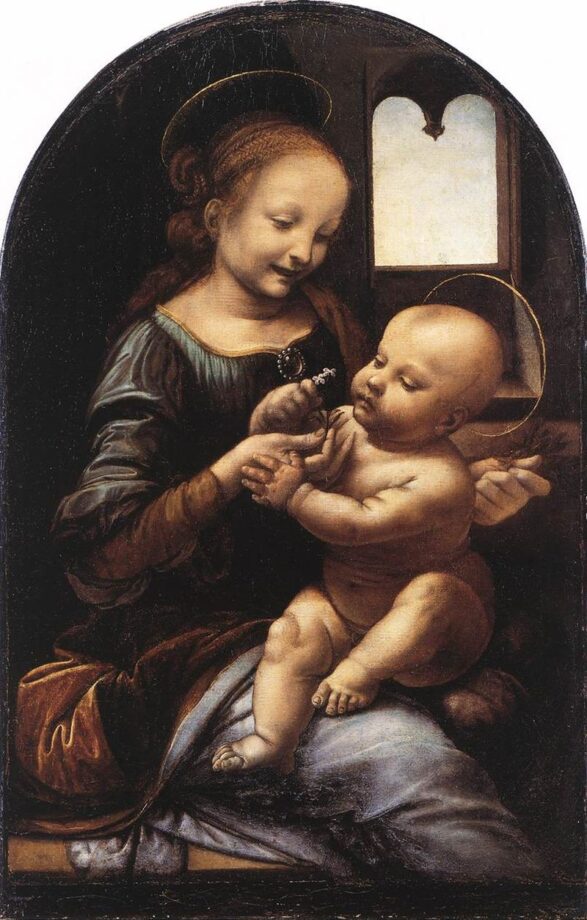
Today you can view the following works in the Hermitage’s art collection:
- The Kolyvan vase is a giant stone vase made of jasper by Avraam Melnikov, in 1843. It weighs almost 19 tons with 8.55 ft in height.
- Leonardo da Vinci’s “Benois Madonna” got its name from a family who owned this painting before it entered the Hermitage’s art collection. it is considered one of the most important works in the museum’s collection.
- A copy of an ancient Roman mosaic floor is located in the Pavilion Hall. The artist is unknown.
- Canova’s “Cupid and Psyche” marble sculpture, 1808, and “Three Graces”, 1816 are so beautiful, they can make you cry. The Hermitage has a collection of 9 sculptures by Canova from the Yusupov collection. Canova’s Psyche Revived by Cupid’s Kiss, exists in two iterations only. In the Hermitage one, the artist draped the legs of Psyche completely unlike in the second one housed in the Louvre. Yusupov’s sculpture was damaged during the fire in his residence and it was transported and restored in the Hermitage later on.
- Tenerani, “Psyche in a Faint”, a marble statue of the 19th century
- Bartolini, “Nymph with a scorpion,” marble statue of the 19th century commissioned by tsar Nicolas I. Bartolini was one of David’s students and a friend of Ingres, he created utterly beautiful, neoclassical sculptures that were often copied.
- James Cox, The Peacock clock,1770s is displayed in the Pavilion Hall.
- Giorgione, Judith.
- Diego Velazquez’s “Lancheon”, 1617.
- Rembrandt’s “The Return of the Prodigal Son”, 1665 – This monumental painting is considered one of the greatest works of art ever created and is a masterpiece of Dutch Baroque painting because it shows the triumph of love and forgiveness over bitterness and loss. There is also Rembrandt’s “Flora”, 1634 that he painted after marrying his wife.
- Michelangelo’s “Crouching Boy” – This sculpture is one of only a few surviving works by Michelangelo that are not in Italy, and it is considered a rare example of his early, unfinished work.
- Raphael’s “Conestabile Madonna” – This painting is considered one of the most beautiful and important works in the Hermitage’s collection of Italian Renaissance art.
#3 The Louvre, Paris, France
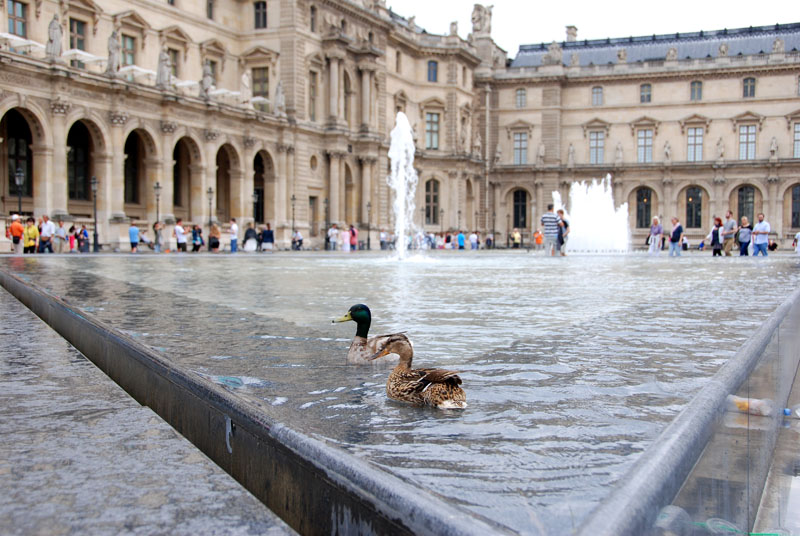
The Louvre Art Museum is located in Paris, France. The Louvre is the most famous and visited art museum in the world. It houses an extensive collection of Western art from the Middle Ages to the 19th century, including Rembrandt, Michelangelo, and Leonardo da Vinci’s iconic masterpiece behind glass, the Mona Lisa.
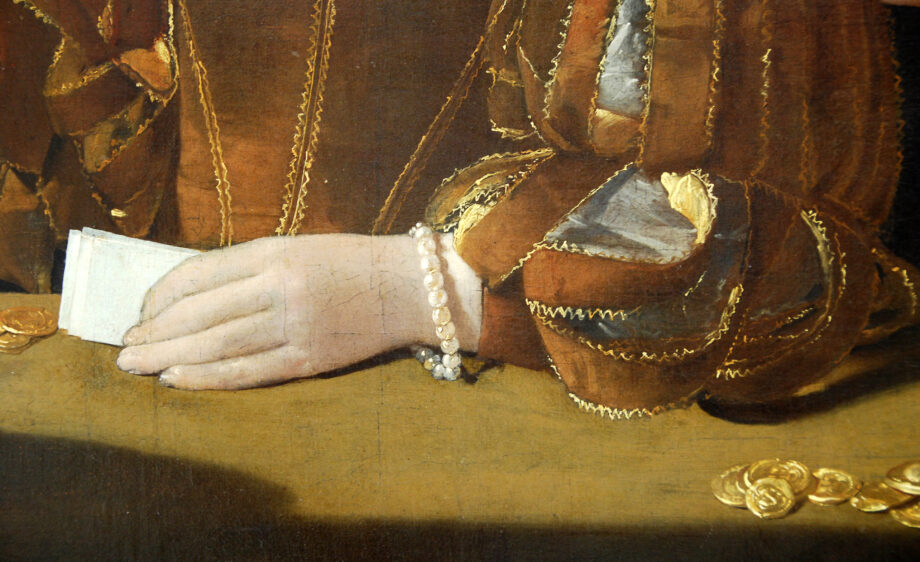
The Louvre, the best art museum in Europe, is home to numerous masterpieces including:
- ”Grande Odalisque”, also known as ”Une Odalisque or La Grande Odalisque”, completed in 1814, is a Jean Auguste Dominique Ingres oil painting depicting an odalisque or concubine. It is currently housed in the Louvre, Paris.
- “The pastoral concert” by Titian, 1509
- The Virgin, Saint Anne, and the Child Playing with a Lamb, da Vinci, 1503-19
- Saint John the Baptist, da Vinci
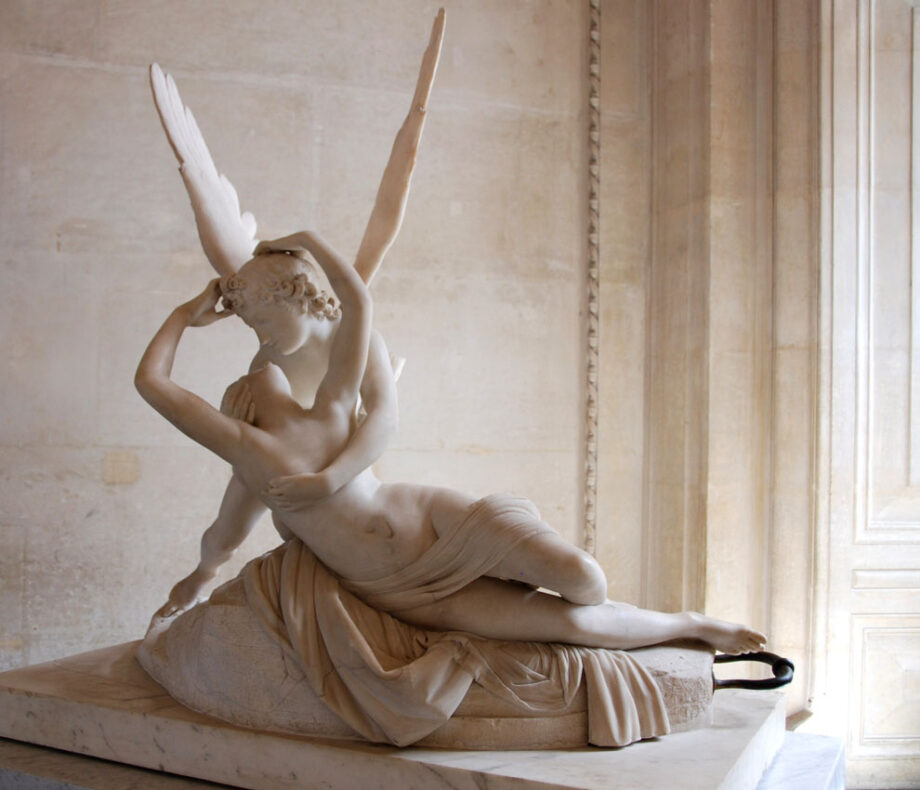
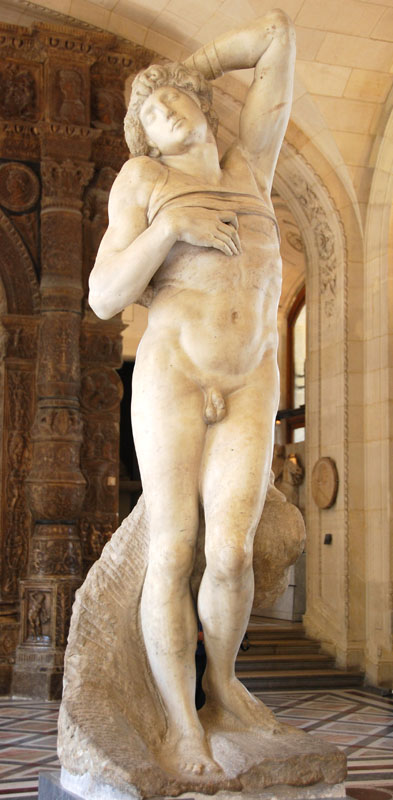
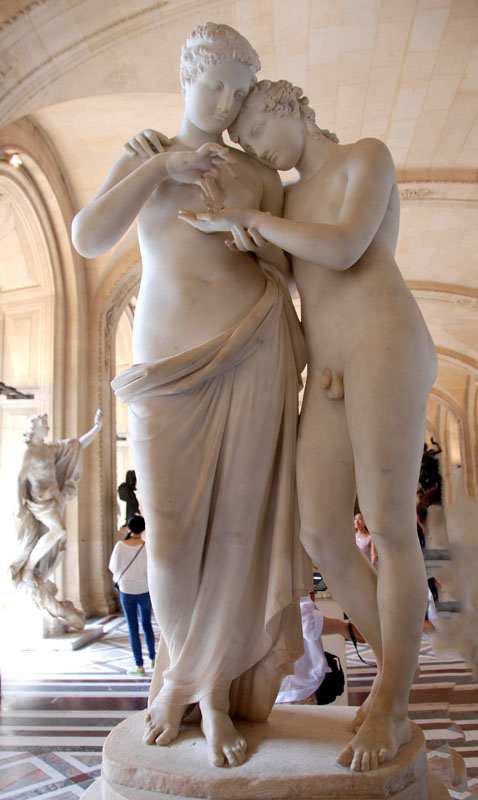
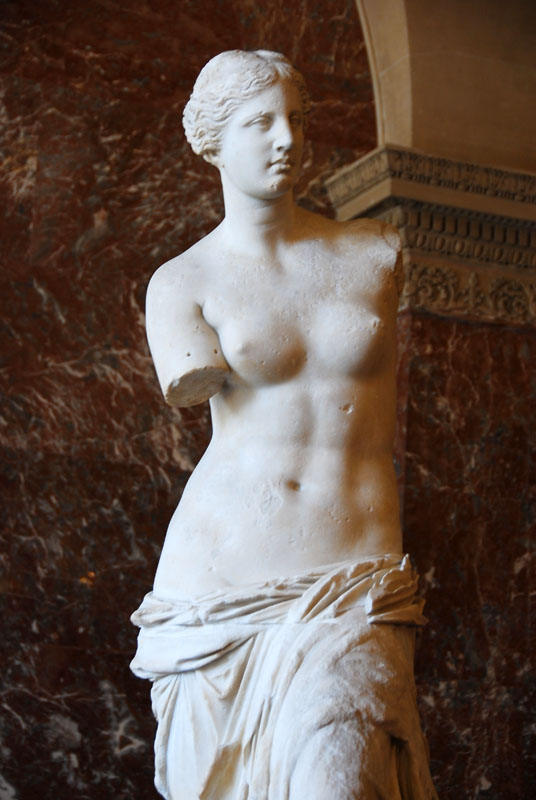
- Leonardo da Vinci’s “Mona Lisa” – This small portrait of a woman is the most famous painting in the world and is considered a masterpiece of early Renaissance art.
- “The Winged Victory of Samothrace” – This ancient Greek sculpture depicts the goddess Nike (Victory) standing on the prow of a ship and is considered one of the greatest masterpieces of Hellenistic art. I love this sculpture’s force and movement that communicates confidence and vigor.
- Eugene Delacroix’s “Liberty Leading the People” – This painting depicts the allegorical figure of Liberty leading the people of France during the Revolution of 1830 and is considered a symbol of the fight for freedom and democracy.
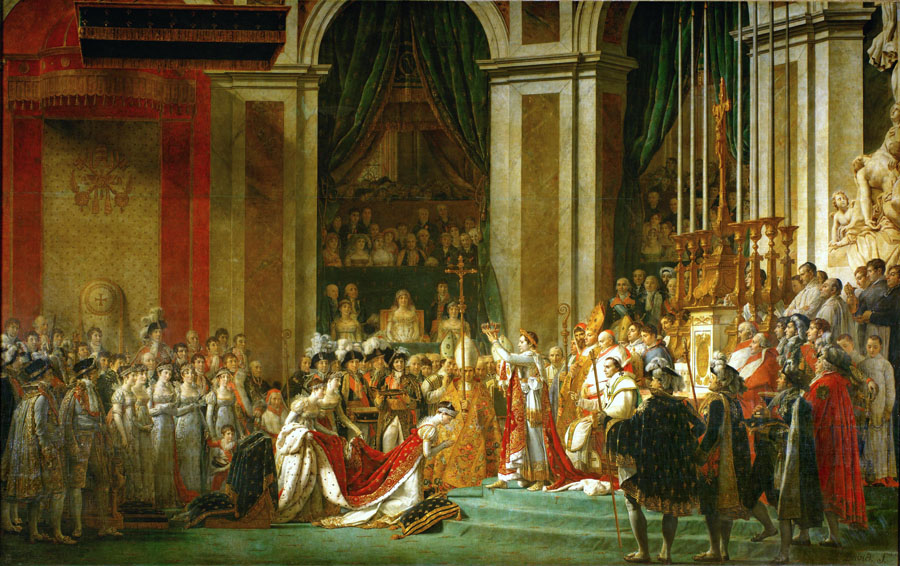
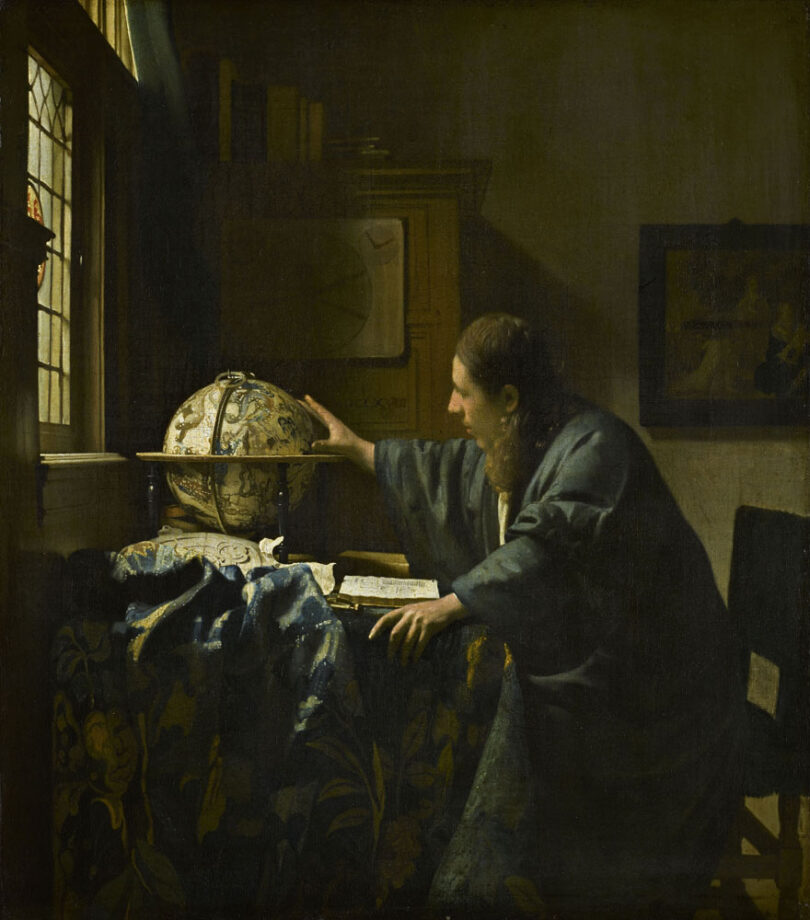
- Théodore Géricault’s “The Raft of the Medusa” – This monumental painting depicts the aftermath of the shipwreck of the French frigate Medusa in 1816 and is considered a masterpiece of Romanticism that created much controversy during the painting’s reveal.
- Elisabeth-Louise Vigée Le Brun, La Paix ramenant l’Abondance
- The Woman in the Mirror, oil painting, 1525 / 1550 by Titian
- Egyptian colossal statue of Sphinx de Tanis
- Jacques-Louis David, Portrait of Madame Récamier, 1800 is one of my favorite neoclassical paintings by the master. It’s a commissioned portrait of the Parisian socialite Juliette Récamier shown reclining on a classical, Pompeian-style recliner. Because the painting is unfinished, it shows brushwork and simplified color choices that are great for a study if you’re a realist artist.
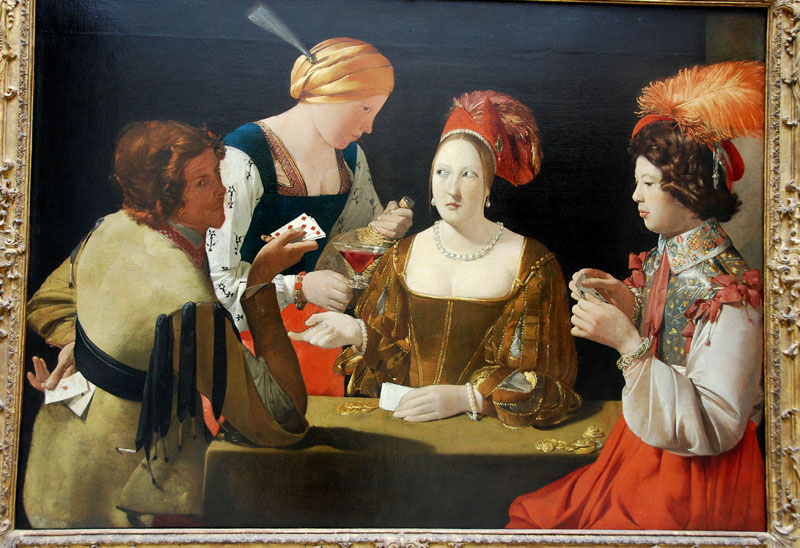
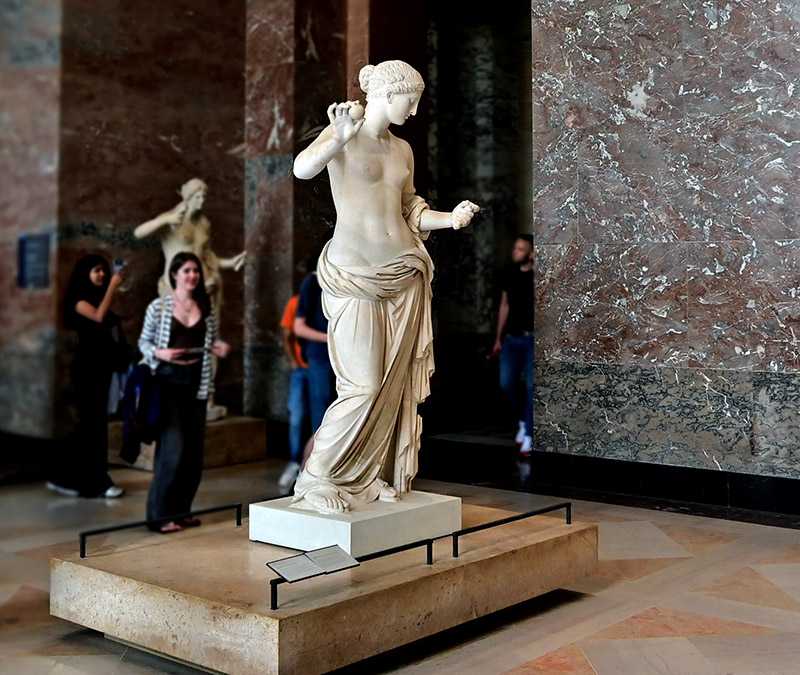
#4 The National Gallery of Art, Washington D.C, USA
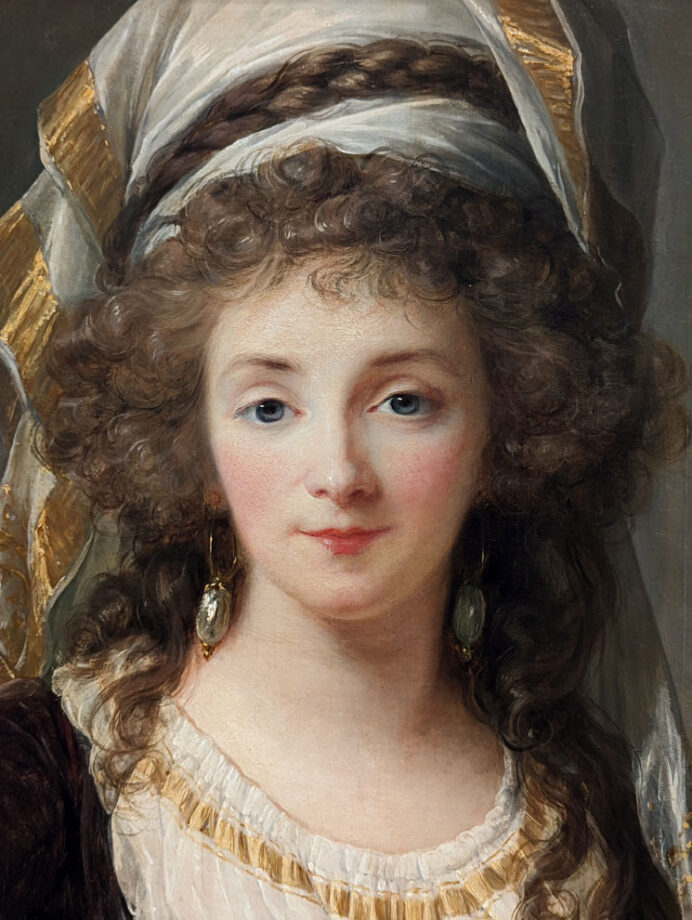
The National Gallery of Art – Washington D.C, USA is one of the best art museums in the United States and the world located in the National Mall among other Smithsonian museums and institutions. Free to visit, it offers an extensive art collection with incredible paintings, sculptures and objects. Build in 1937, The National Gallery of Art is a must-visit art museum for art lovers in the United States, featuring a vast collection of European and American art, including works by Vermeer, Monet, David, Manet, Bosch, Whistler, Sargent, Fragonard, and Van Gogh. Some famous artists include:
- Titian, Doge Andrea Gritti, c. 1546/1550, oil on canvas
- Rembrandt van Rijn, Lucretia, 1664, oil on canvas
- Hiram Powers (sculptor), The Greek Slave, model 1841-1843, carved 1846, marble
- Titian, Woman Holding an Apple, c. 1550, oil on canvas
- Georges de La Tour, The Repentant Magdalen, 1635/1640, oil painting
- Leonardo da Vinci, Ginevra de’ Benci, 1474/1478
- Jean Siméon Chardin, The House of Cards, 1737, oil painting
- William Michael Harnett, The Old Violin, 1886, oil painting
- John Singer Sargent, Nonchaloir (Repose), 1911, oil painting
- Sir Anthony van Dyck, Marchesa Elena Grimaldi Cattaneo, 1623
- Raphael, The Alba Madonna, 1510, tondo painting
- Joseph Mallord William Turner, Keelmen Heaving in Coals by Moonlight, 1835
- Hieronymus Bosch, Death and the Miser, 1485/1490, Painting
- Titian, Venus with a Mirror, 1555, oil painting
- Auguste Rodin, The Thinker (Le Penseur) model 1880, cast 1901, sculpture
- Edgar Degas, Little Dancer Aged Fourteen, 1878-1881, sculpture
- Gian Lorenzo Bernini, Monsignor Francesco Barberini, 1623, sculpture
- Jacques-Louis David, The Emperor Napoleon in His Study at the Tuileries
1812
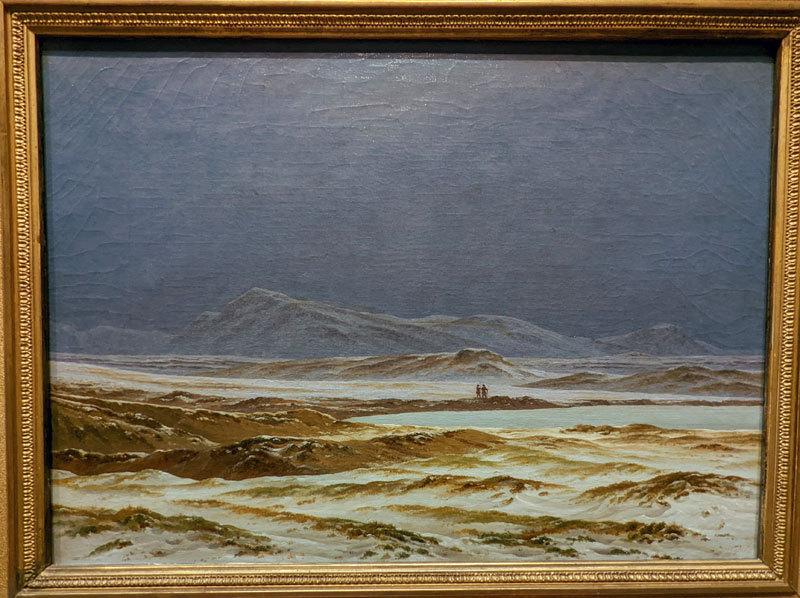
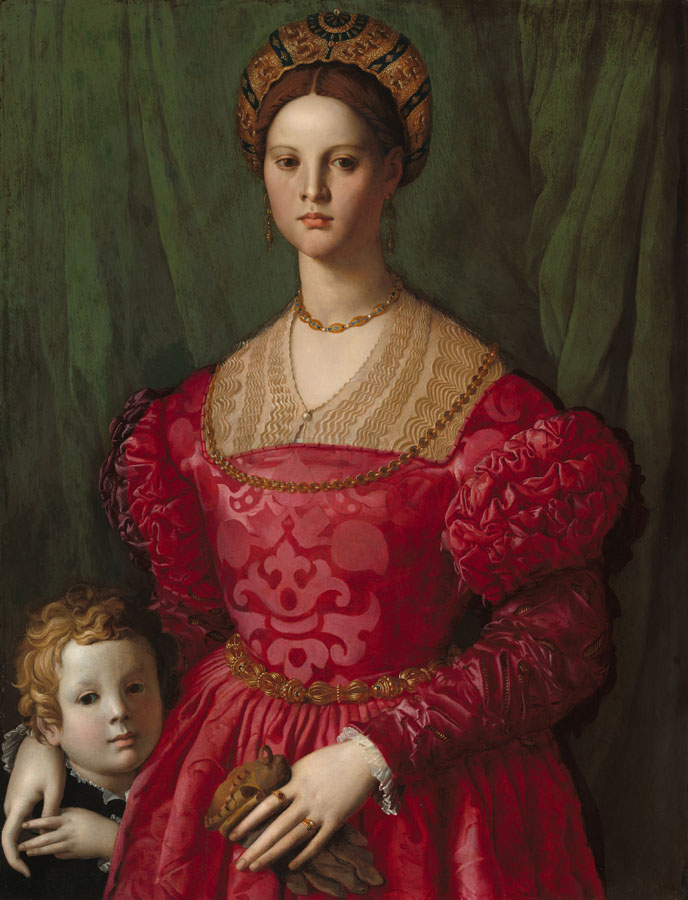
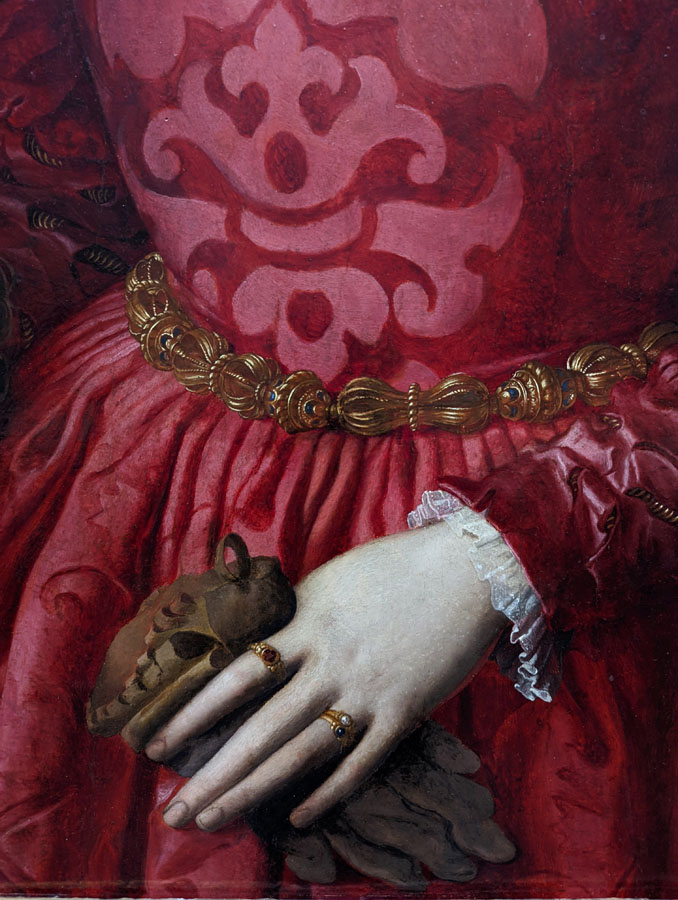
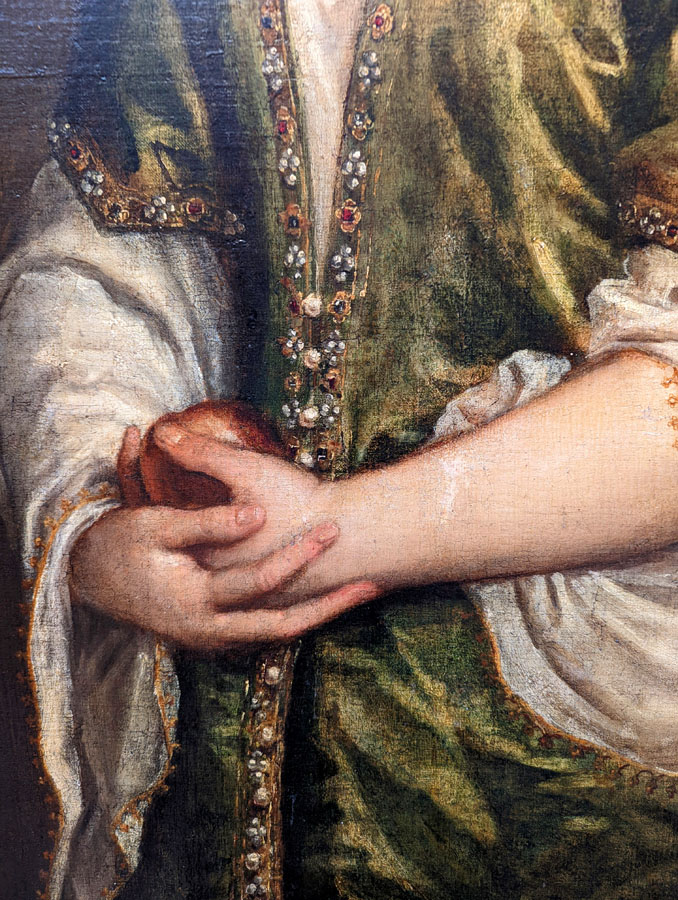
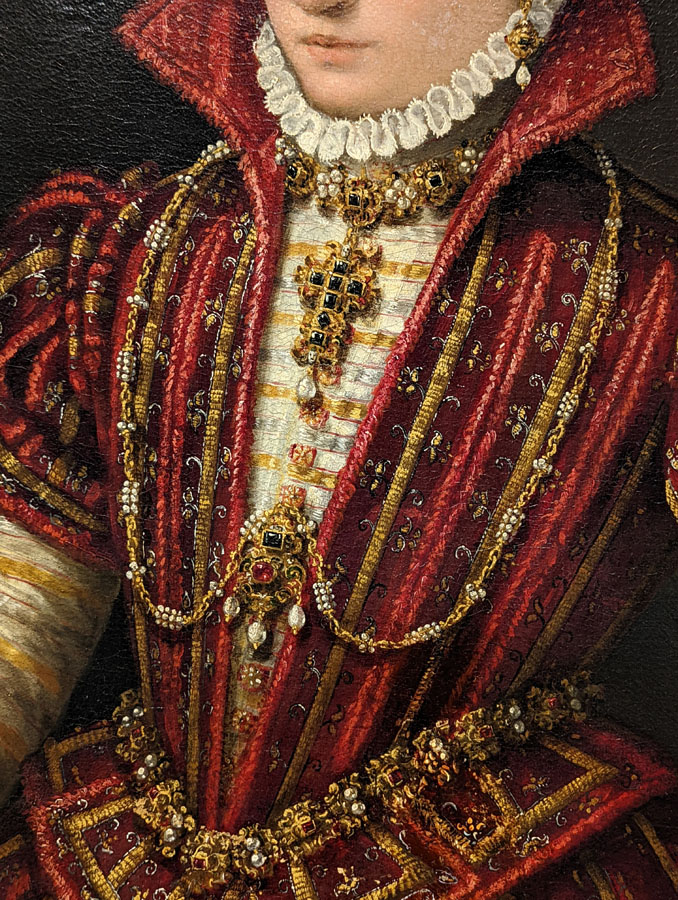
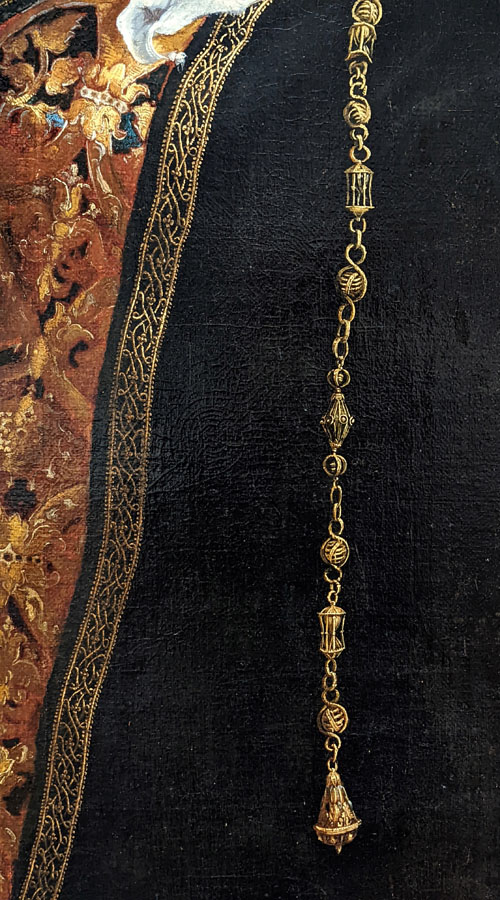
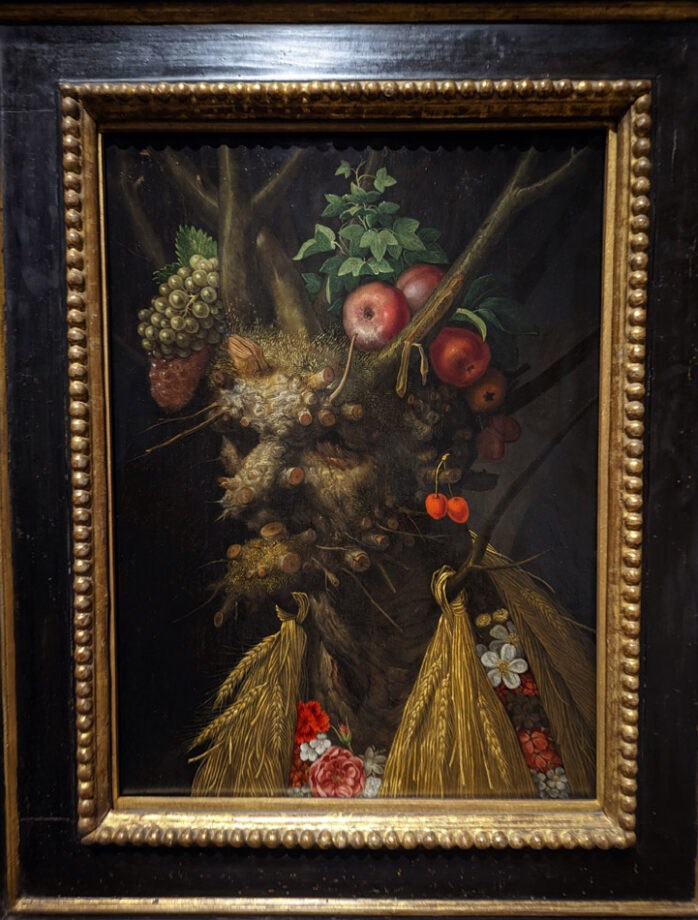
“The flowers and fruit (apples, plums, grapes, and cherries) in the Four Seasons compare with the same or similar nature motifs in Arcimboldo’s other works. In particular, the gnarled and rather menacing tree trunk and branches find exact parallels in the versions of Winter in the Louvre and in the Kunsthistorisches Museum, Vienna. The Four Seasons has the additional interest of the more engaging three-quarter view, unlike the strict profile Arcimboldo adopted for the Seasons and the Elements. The Four Seasons stands out in other respects as well. In contrast to the whimsical character of much of Arcimboldo’s work, the mood is darker and more somber. The Four Seasons is also the most closely related of all Arcimboldo’s composite heads to the physiognomic studies of Leonardo da Vinci, Arcimboldo’s predecessor in Milan. Painted around 1590, after Arcimboldo had returned to his native city, the Four Seasons is one of his last works. If not a self-portrait of the artist in the “winter” of his life, the painting is a summa of his career.” from: https://www.nga.gov/collection/art-object-page.142008.html
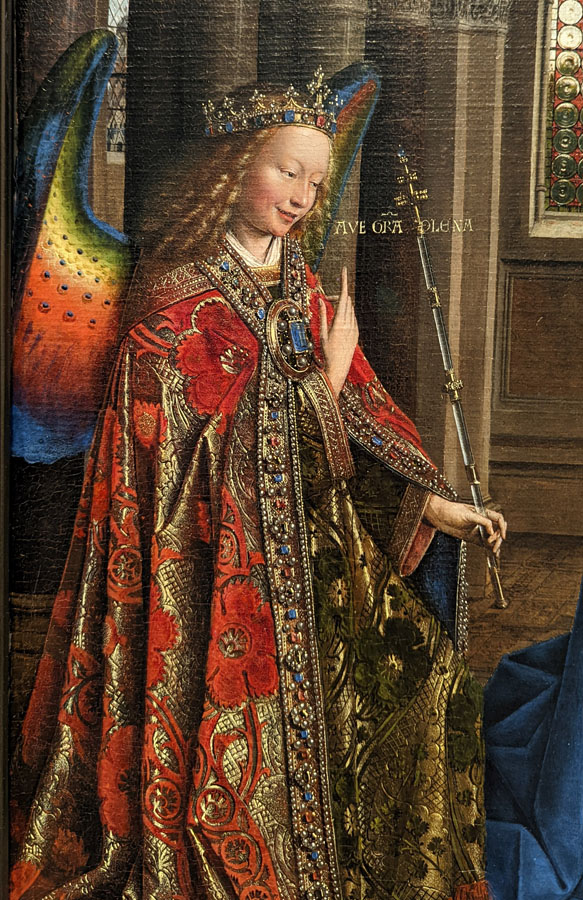
As you can see the National Gallery of Art in Washington DC is one of the best art museums in the United States to visit for art lovers.
#5 The Metropolitan Museum of Art, New York, USA
The Met is the largest art museum in the United States with one of the most comprehensive art collections in the world. It contains more than 2 million works of art, including ancient artifacts, European paintings, glassware and tableware, furniture, and some contemporary art. I love how well-lit and structured the art displays are at this top art museum.
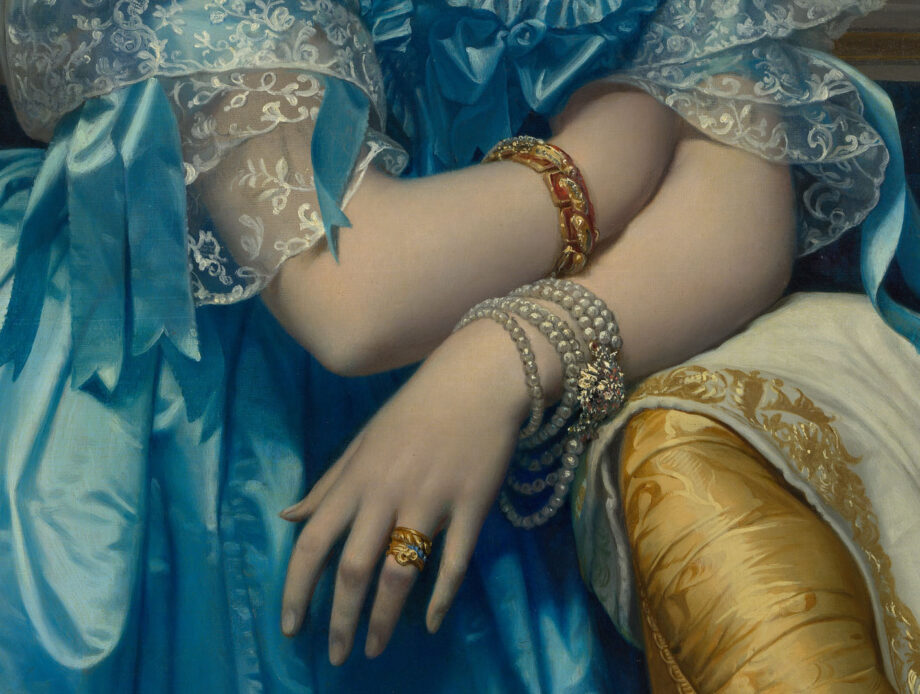
The art collections at the Met are divided into the following groups: African Art, American Art, Ancient American Art, Ancient Near Eastern Art, Arms and Armor, Asian Art, The Costume Institute, Drawings and Prints, Egyptian Art, European Paintings, European Sculpture and decorative Arts, Greek and Roman Art, Islamic Art, The Robert Lehman Collection, The Libraries, Medieval Art and The Cloisters, Modern and Contemporary Art, Musical Instruments, Oceanic Art, Photography.
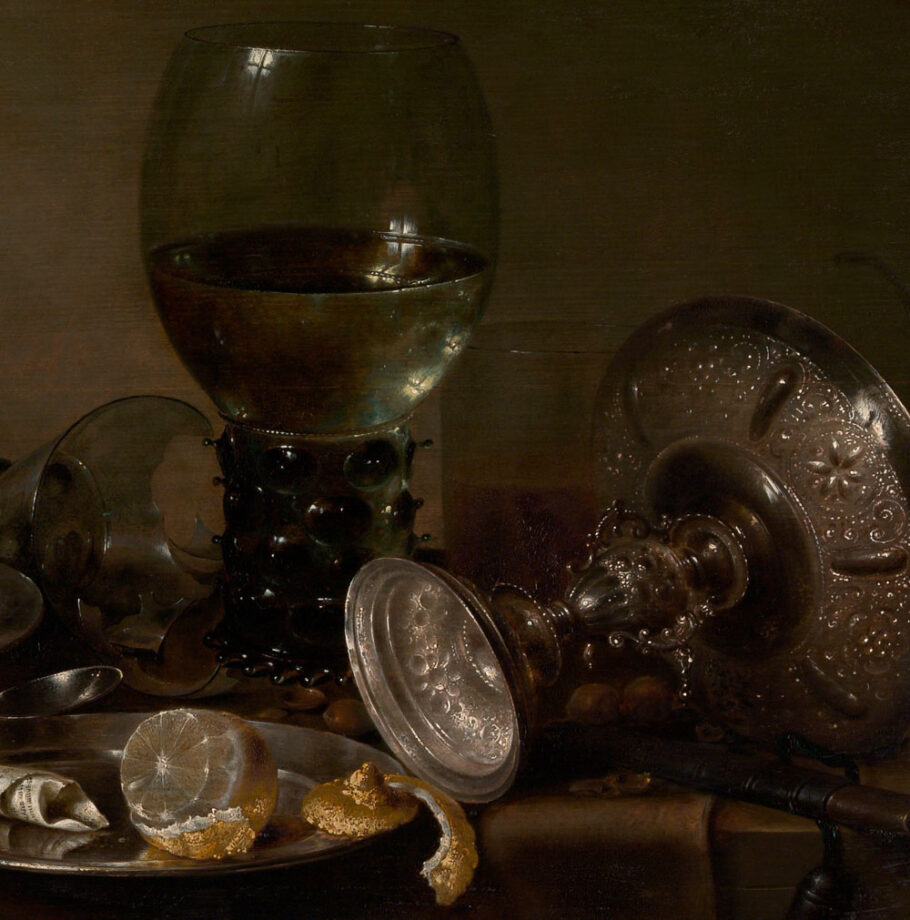
Art Collection Highlights
There are several Post-Impressionism paintings on view created by Vincent van Gogh. Irises, Self-portrait with a straw hat, sunflowers, roses, and some more!
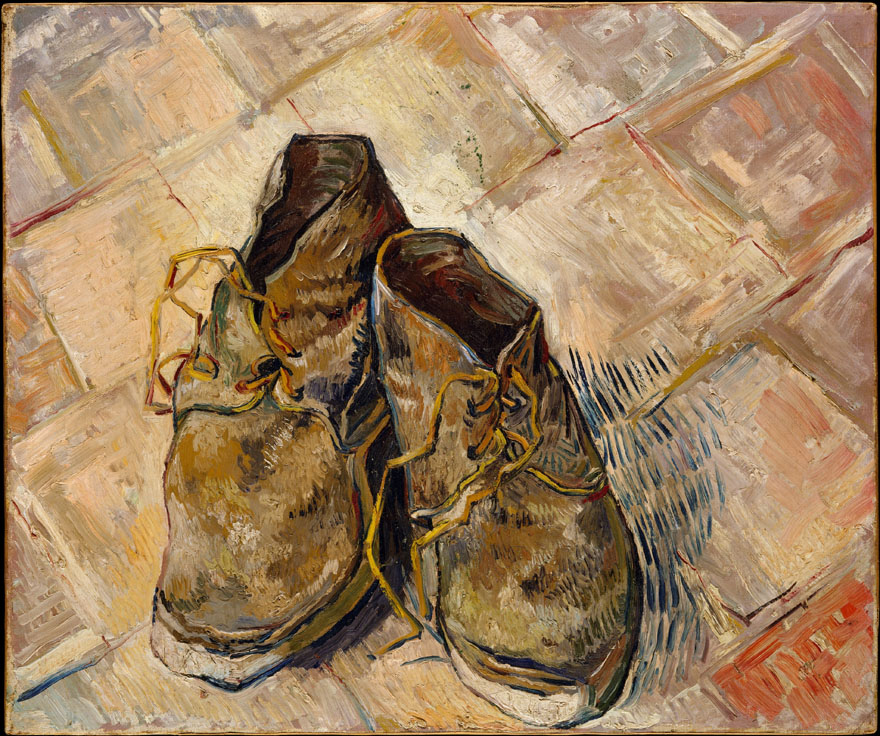
- Emanuel Leutze’s “Washington Crossing the Delaware” 12′ 5″ x 21′ 3″, 1851- This large-scale painting depicts George Washington leading his troops across the Delaware River during the Revolutionary War and is considered a symbol of American patriotism.
- Ancient Egyptian Temple of Dendur – This ancient temple was built over 2,000 years ago and was gifted to the United States by the Egyptian government in 1965. Roman Period, completed by 10 B.C.
- There are several, exquisite paintings by Jan Vermeer.
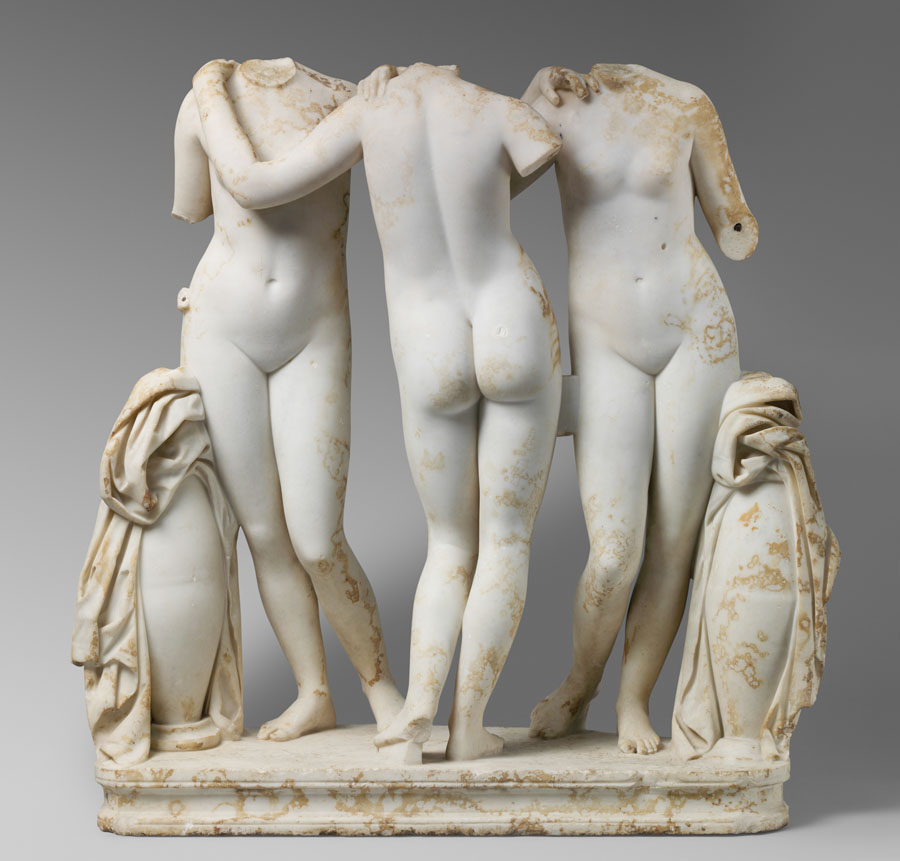
There are several portraits displayed at the Met painted by Spanish artist Diego Velazquez.
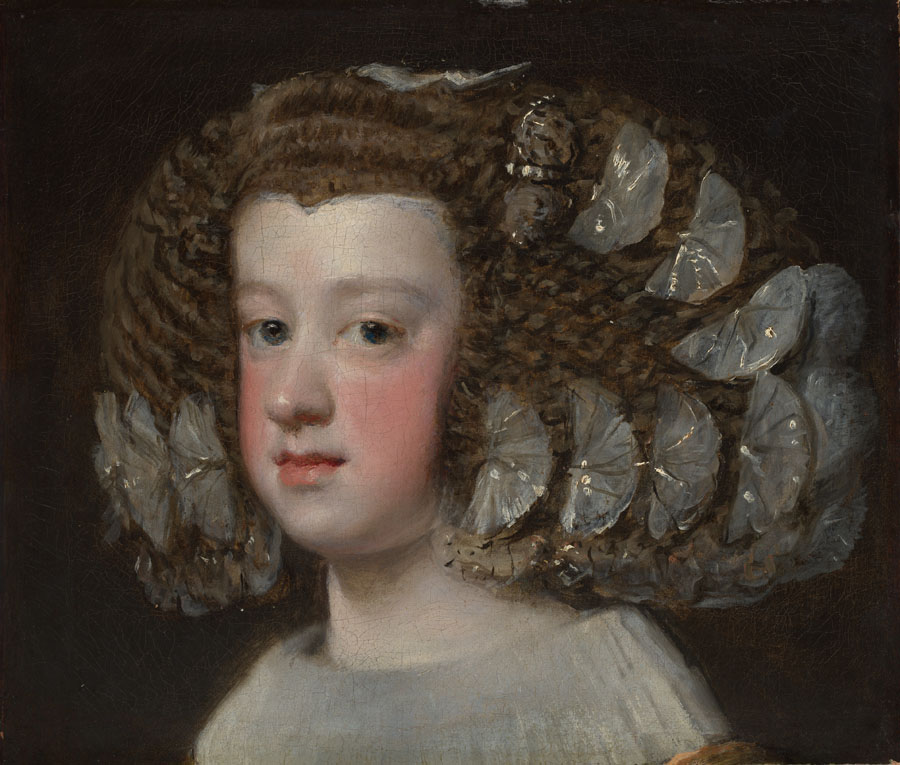
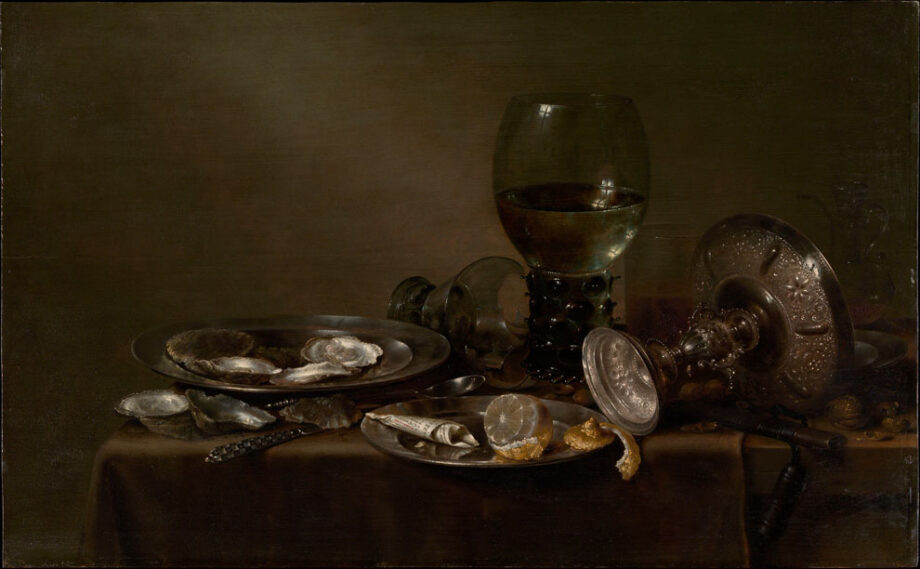
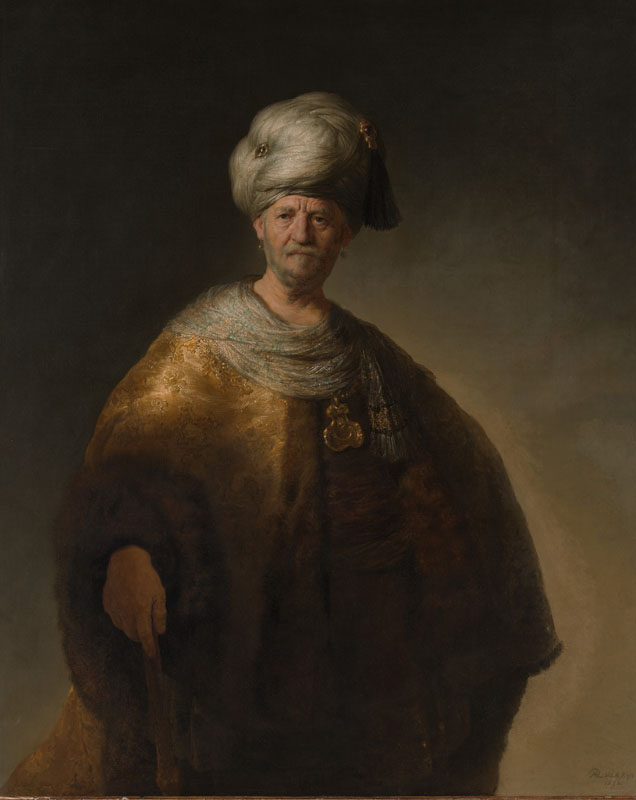
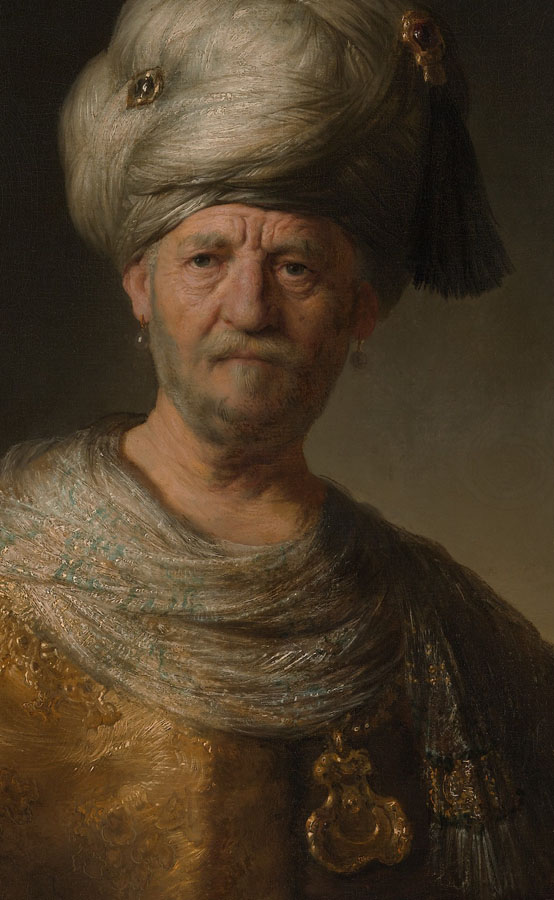
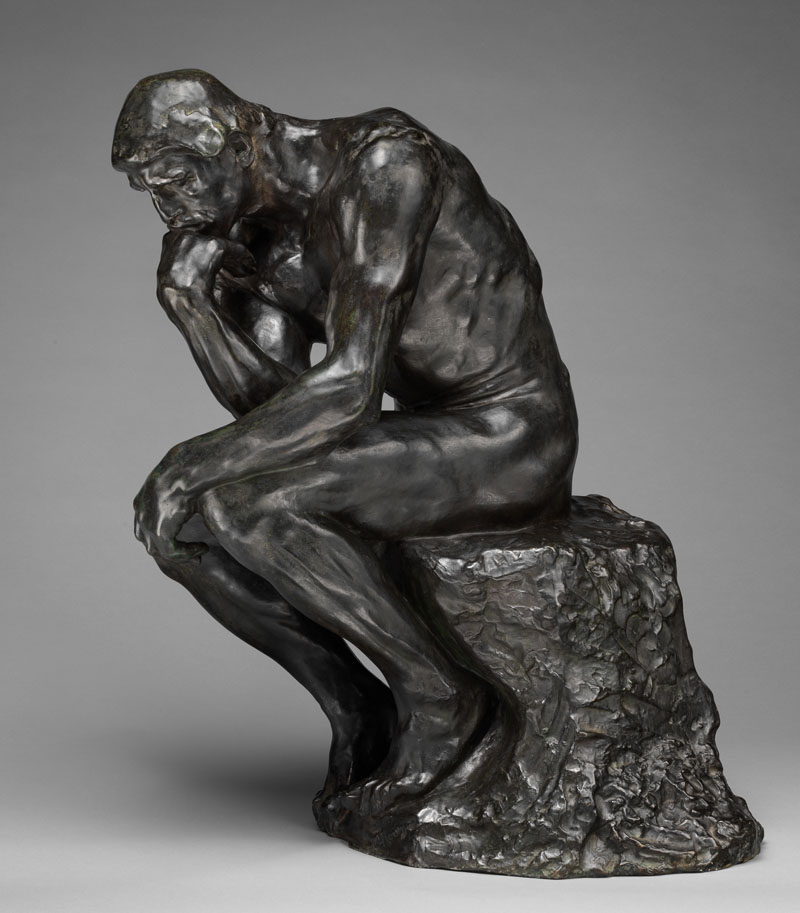
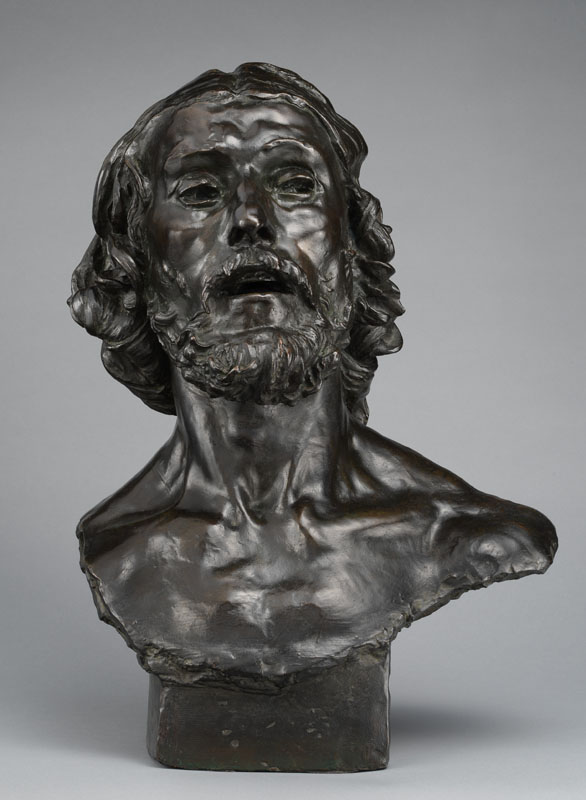
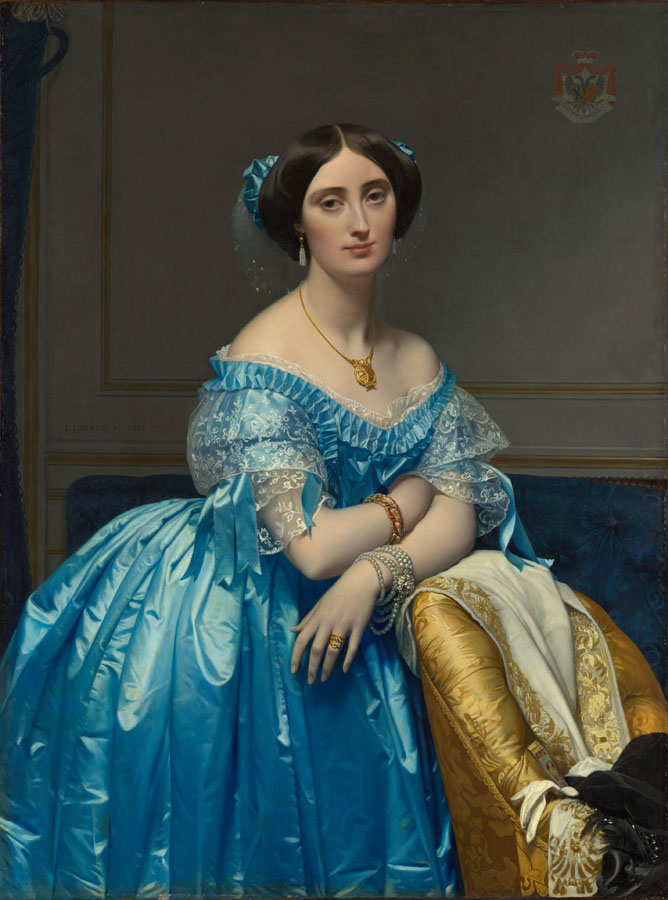
Jean Auguste Dominique Ingres, French, 1851–53. The Virgin Adoring the Host, Jean Auguste Dominique Ingres French, 1852. The museum also has many preparatory drawings produced by the artist.
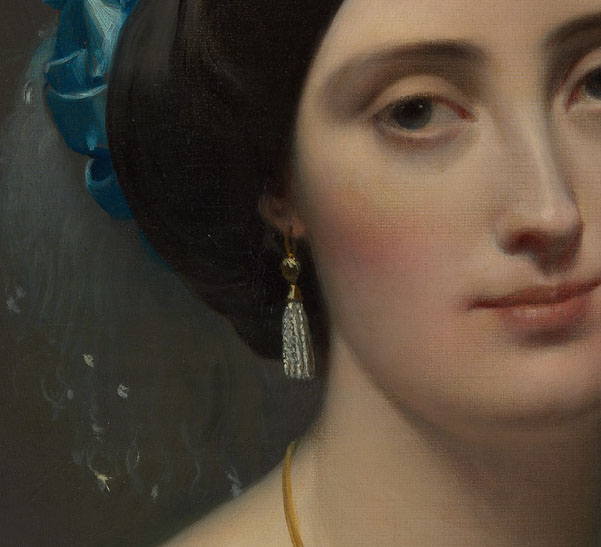
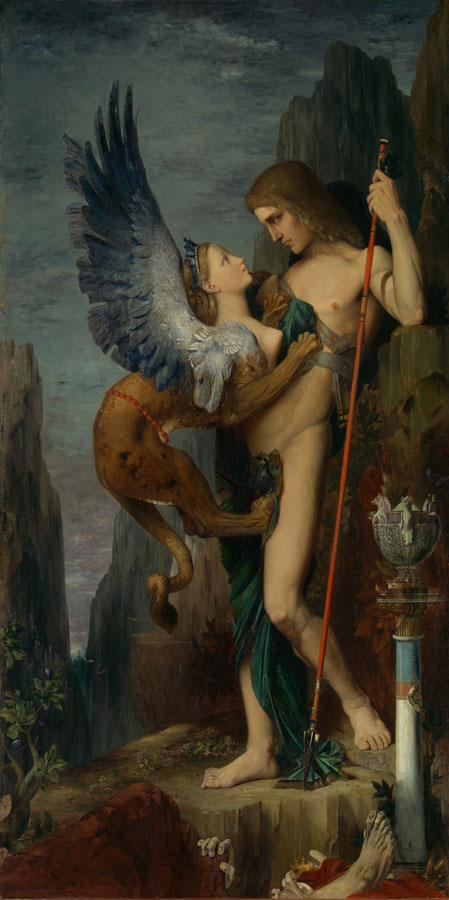
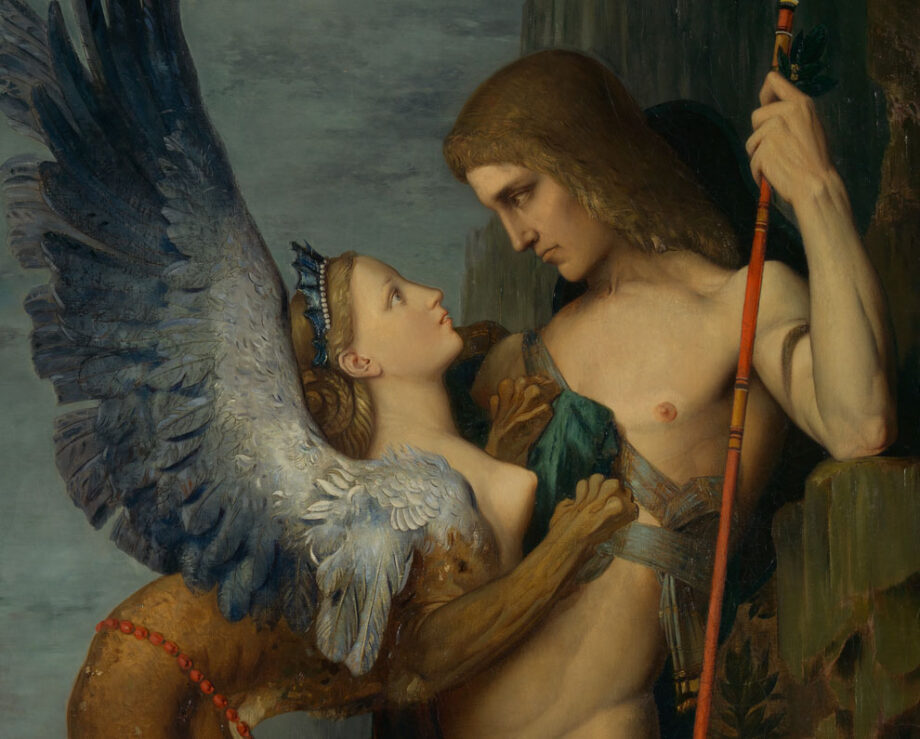
#6 The Prado Museum, Madrid, Spain
The Prado Museum is Spain’s national art museum that houses the incredible art collection of over 35,000 artworks including collections of European art from the 12th to the 19th century. It includes works from famous artists such as Francisco Goya, Diego Velázquez, and El Greco. I greatly enjoyed visiting one of the top art museums in the world to see some amazing Spanish artists who painted large-scale art that’s off the art books for some reason. Here is an example of one unbelievably talented Spanish artist- Jose Moreno Carbonero (Malaga, 1860 – Madrid, 1942).
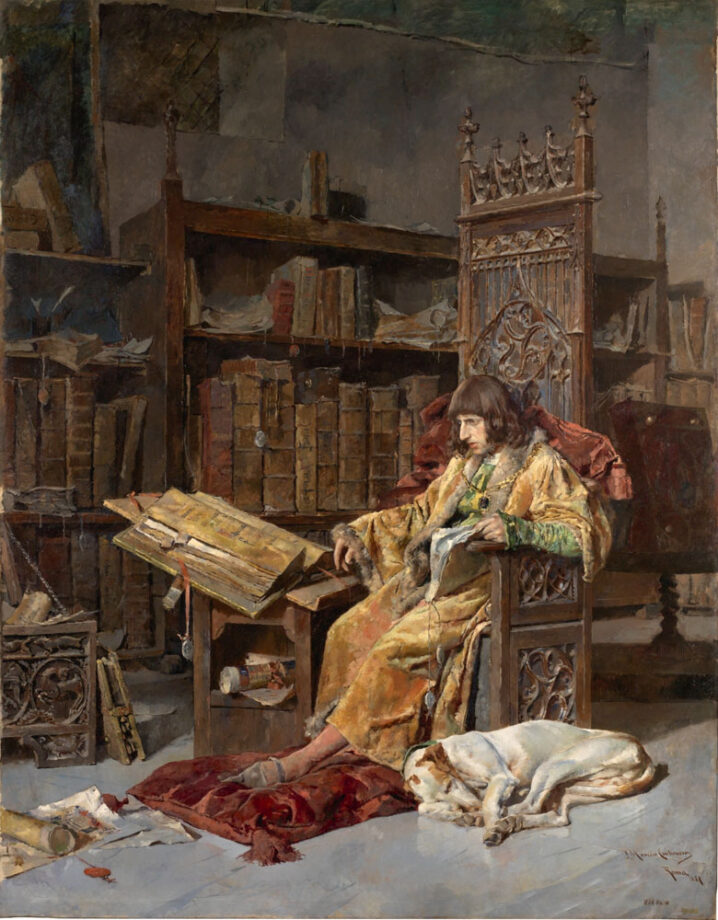

The second painting created by Carbonero is even more striking. I wish you could see the sheer scale and all the details in the painting!
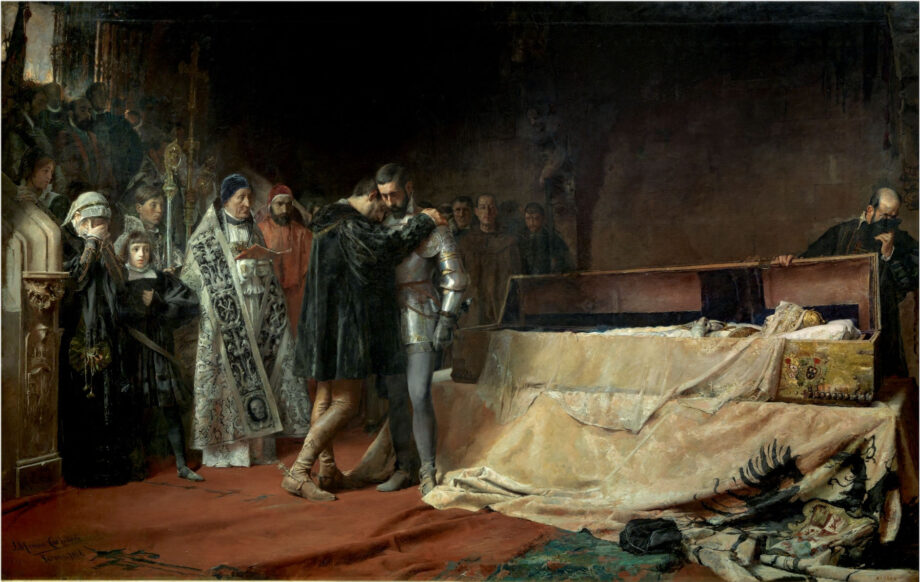
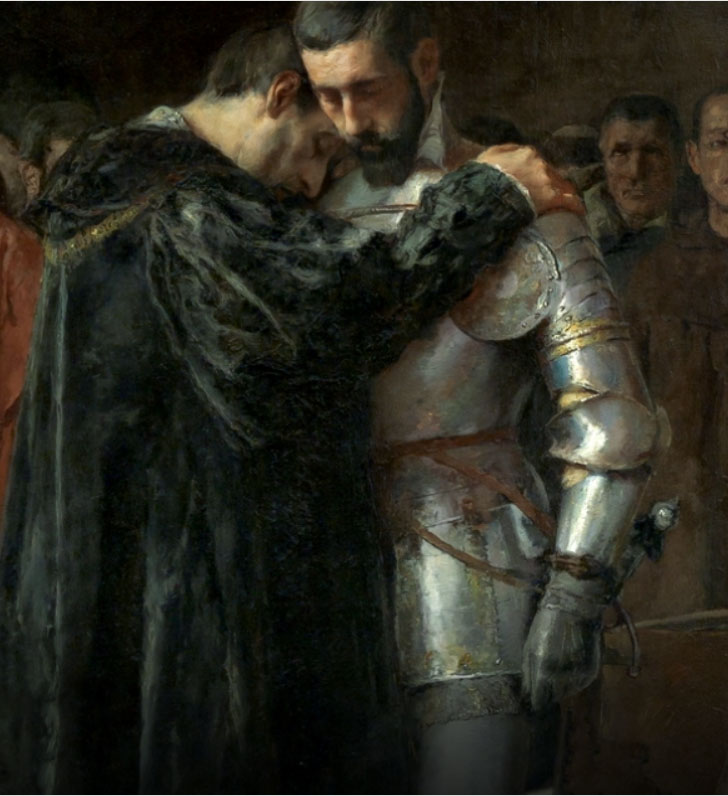
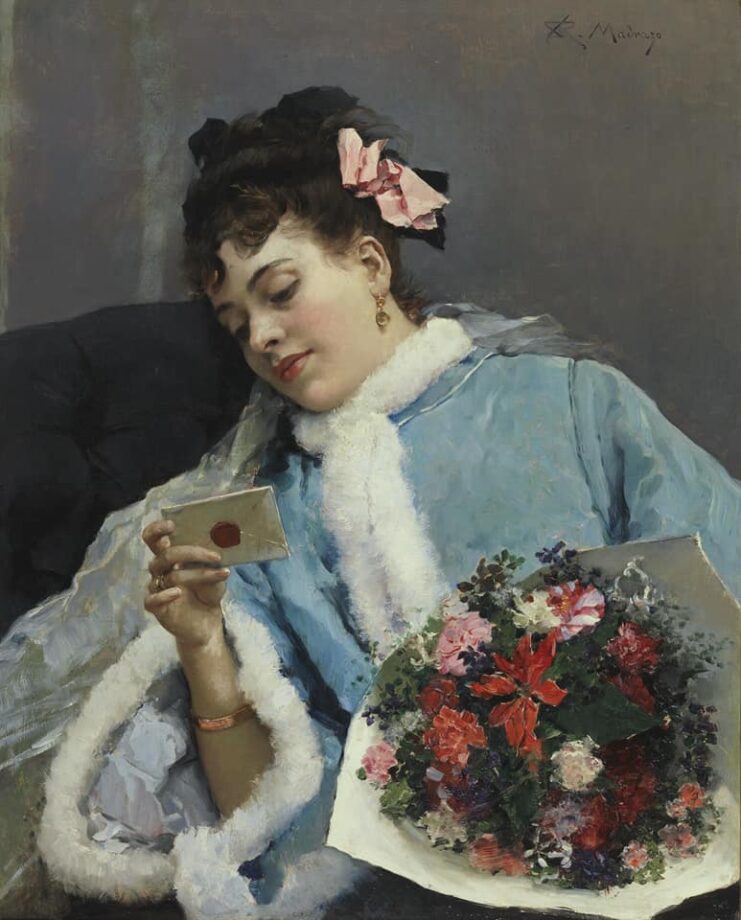
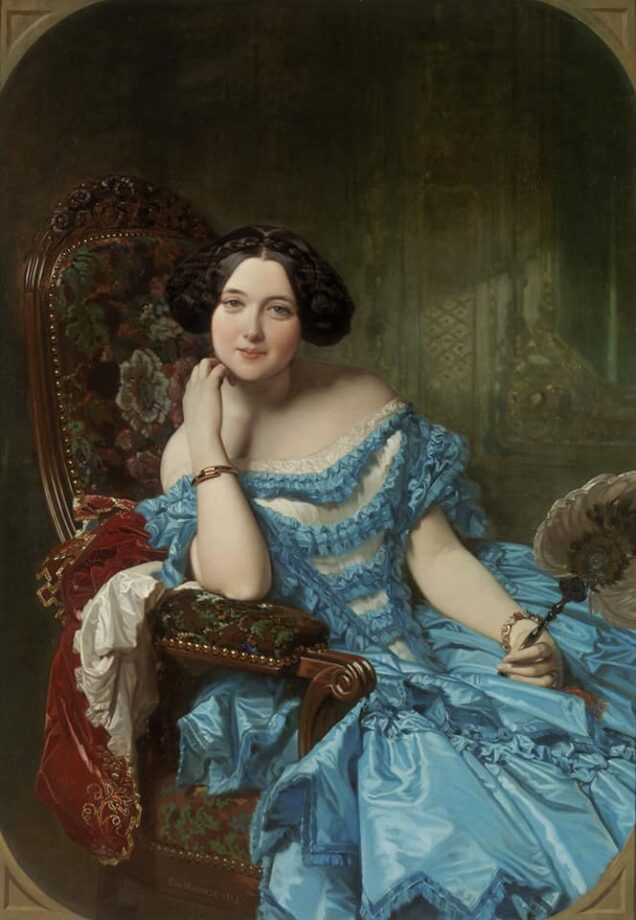
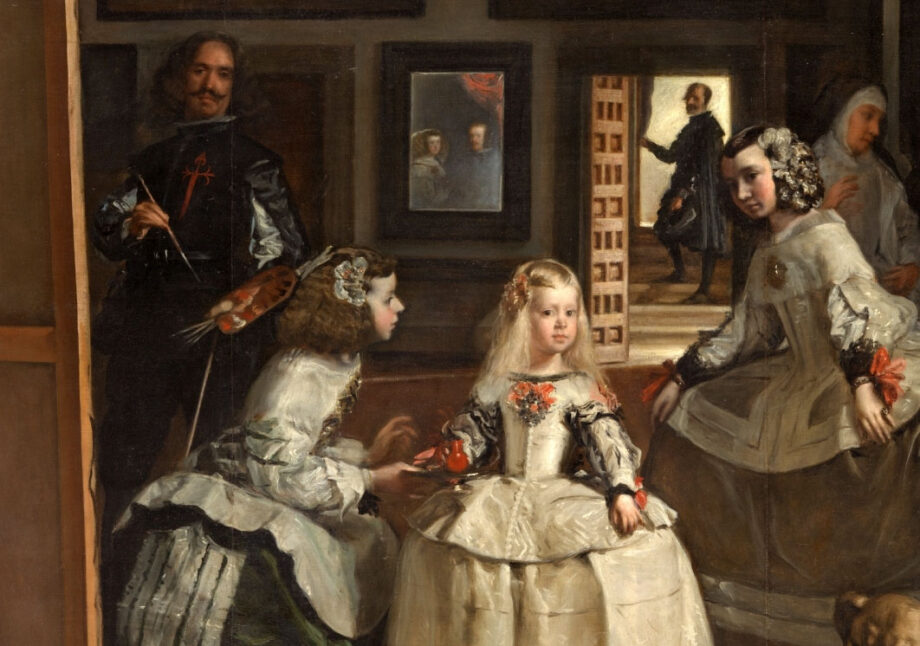
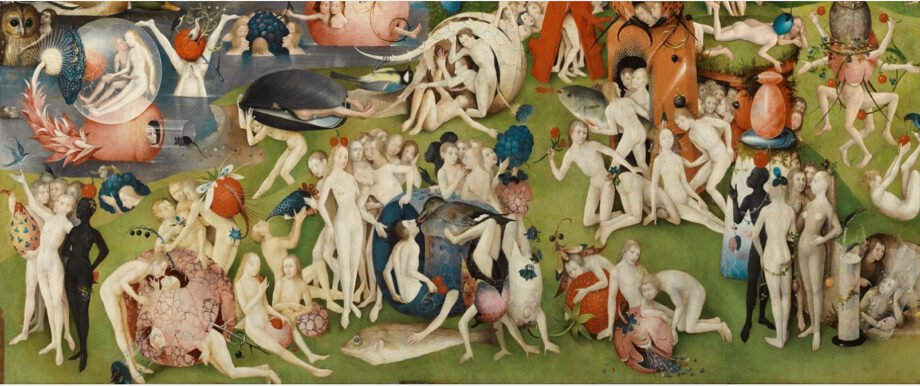
Closeup | The Garden of Earthly Delights by Hieronymus Bosch: This triptych painting is one of Bosch’s most famous works, depicting scenes of paradise, earthly pleasure, and damnation. It’s speculated that Bosch (1450 –1516) died of cholera.
- The Third of May 1808, 1814 by Francisco de Goya: This painting depicts the execution of Spanish citizens by French troops during the Peninsular War. It is considered one of the most important works of Spanish Romanticism.
- The Descent from the Cross, created c. 1435 by Rogier van der Weyden: This Flemish masterpiece depicts the moment when Jesus’s body is taken down from the cross after his crucifixion using unusual composition in which the Mary’s figure mimics the Christ’s.
- “The Triumph of Death” 1562 by Pieter Bruegel the Elder: This haunting painting depicts a landscape filled with death and destruction, with skeletons and corpses littering the scene. It is a powerful commentary on the transience of human life.
#7 The Art Institute of Chicago
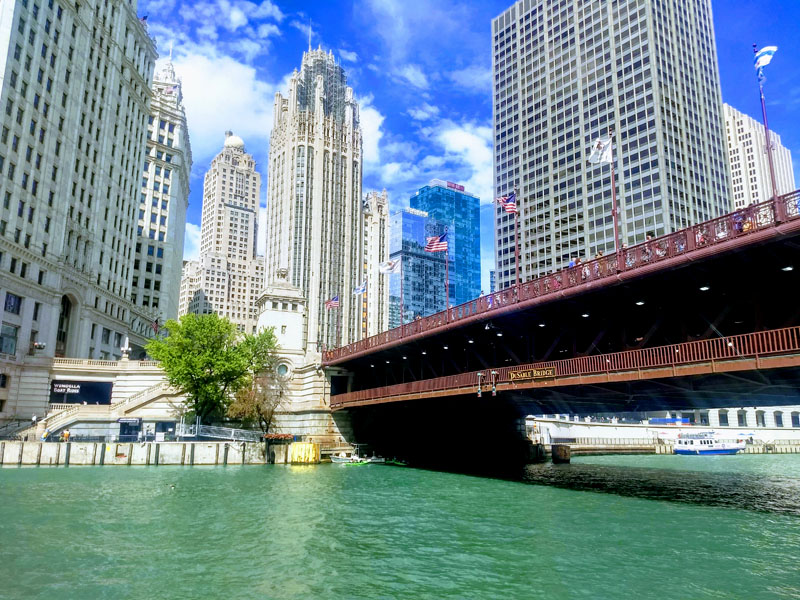
The Art Institute of Chicago is one of the best art museums in the world for art lovers. This top art museum in the United States has an extensive collection of over 300,000 works of art, spanning over 5,000 years of human creativity, including works by renowned artists such as Monet, Picasso, Dali, O’Keeffe, Magritte, and many more. The art museum’s collection includes a wide range of artistic styles and mediums, from classical antiquities to contemporary art installations. The Art Institute of Chicago is also known for its exceptional architecture, with its iconic lion statues guarding the entrance and its notable Modern Wing designed by Renzo Piano. In addition to its permanent collection, the top art museum hosts a variety of temporary exhibitions throughout the year, making it a dynamic destination for art lovers. artic.edu

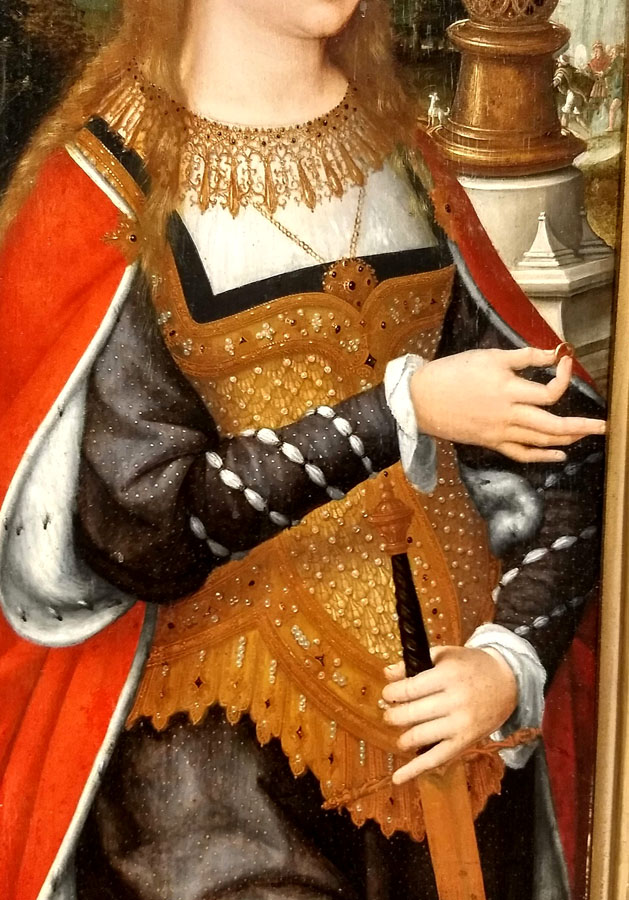
- American Gothic by Grant Wood: This iconic painting is a quintessential representation of American folk art. It depicts a stern-looking farmer and his daughter standing in front of their farmhouse.
- Nighthawks,1942 by Edward Hopper, American, 1882–1967: This painting is one of the most recognizable works of American art of the 20th century. It depicts a late-night diner scene, with a group of customers sitting at the counter.
- Virgin and Child with an Angel, 1485 by Sandro Botticelli, Italian, 1445-1510: is a beautiful gentle painting of the mother and son. While it’s not the best painting by the artist, it offers a good representation of the early Italian Renaissance art.
- A Sunday Afternoon on the Island of La Grande Jatte by Georges Seurat: This pointillist masterpiece is known for its intricate technique of using tiny dots of paint to create an image. It depicts a scene of people relaxing on a grassy bank by the river.
- The Bedroom, 1889 by Vincent van Gogh, Dutch, 1853-1890: This iconic painting depicts the interior of Van Gogh’s bedroom in Arles, France. It is known for its vibrant colors and bold brushstrokes. The gallery also displays one of his self-portraits, from 1887.
- Water Lilies,1906 by Claude Monet: This series of paintings depicts the tranquil water lily pond in Monet’s garden at Giverny. The paintings are known for their luminous colors and impressionistic style.
- The Child’s bath, 1893 by Mary Cassatt is one of the famous paintings by the female artist who liked to depict women and children at daily activities.
- At the Moulin Rouge, 1892-95 by Henri de Toulouse-Lautrec. The artist spent a lot of time drawing singers and other characters at the Moulin Rouge. This painting features unusually colored singer May Milton sticking out from the right edge of the painting, which gives the sense of immediacy to the scene. Her face was cut off from the painting at some point but then reinstated.
- Doge Andrea Gritti, 1530/1540 by Workshop of Titian, Italian, 1477-1576
- John Singer Sargent, Life study of an Egyptian girl, oil on canvas, 1891 – it’s a beautiful painting of a young nude girl fixing her hair in a complicated pose. Created in classical style, this artwork has little visible brushstroke. This painting is a full-length figure study painted in Cairo.
- Magritte, time transfixed, 1938. This is one of the most famous surrealist paintings by Magritte who combined and juxtaposed unrelated objects together playing with scale.
- Abbott A. Thayer, Winged Figure, oil on canvas, 1889. This is an allegorical painting of a female figure with wings that looks very contemporary due to its freedom of brushstrokes yet it’s rooted in classical painting.
- Rembrandt, a young woman at an opened half-door, oil on canvas, 1645
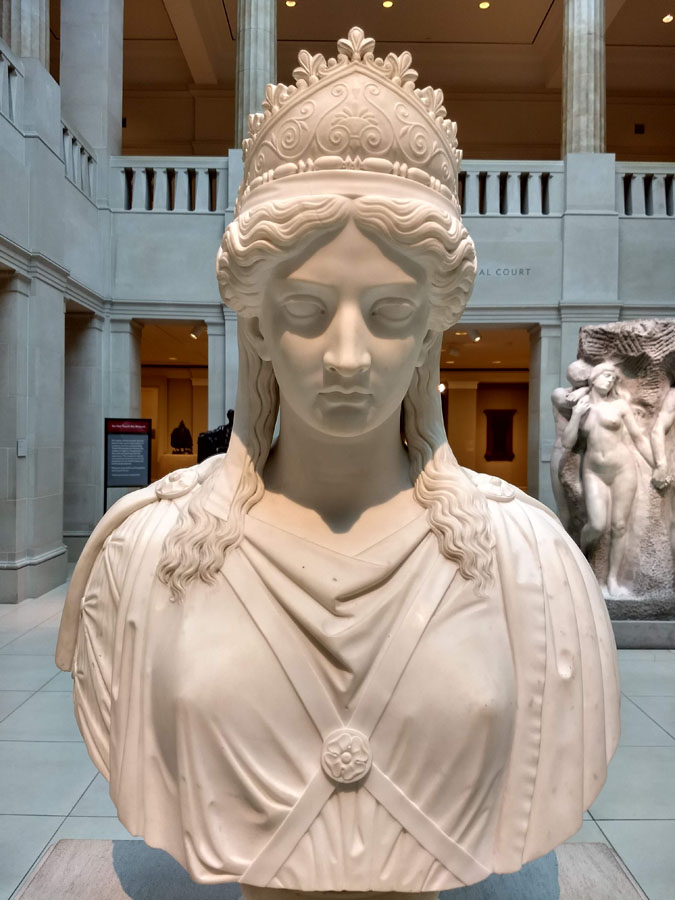
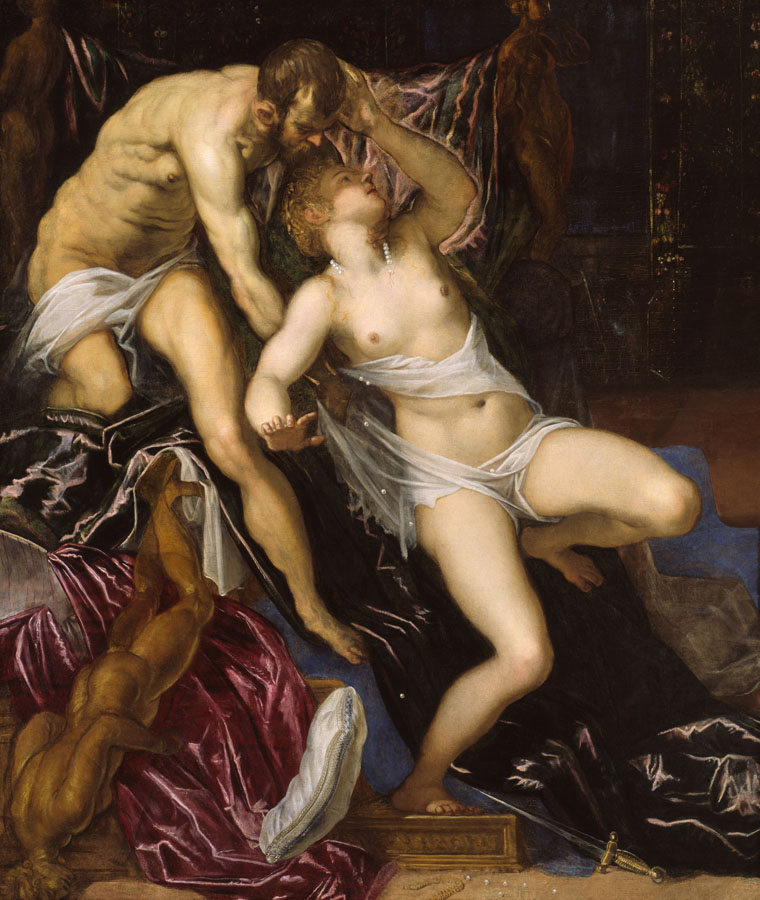
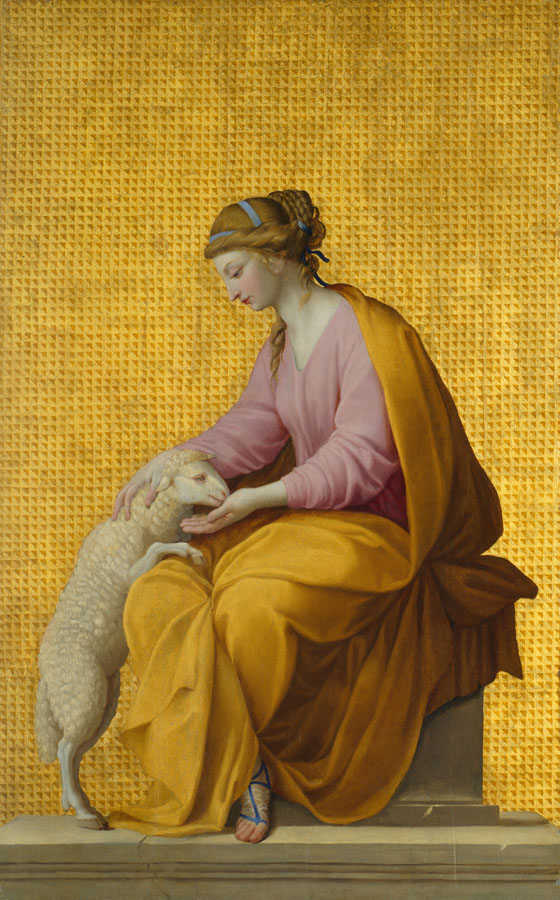
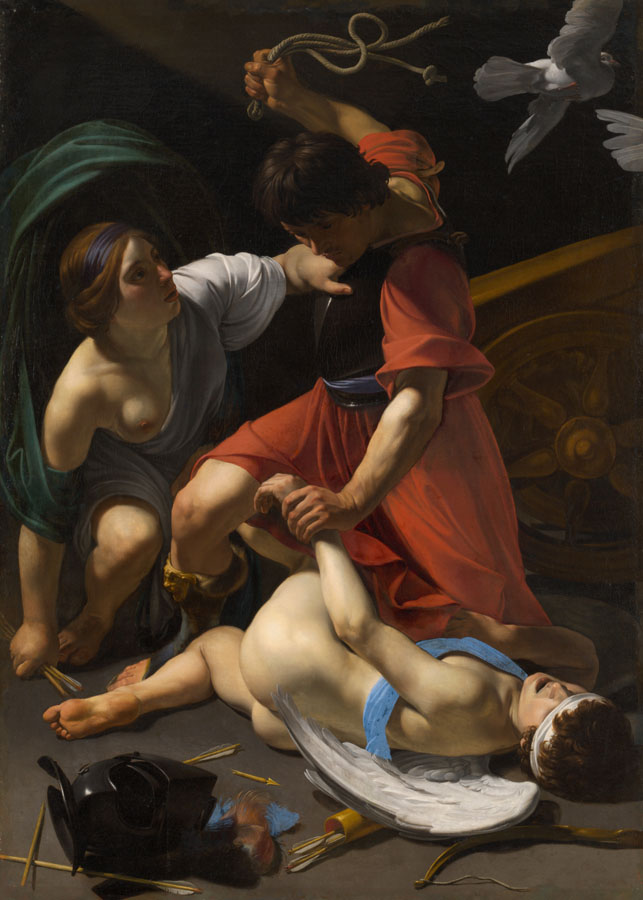
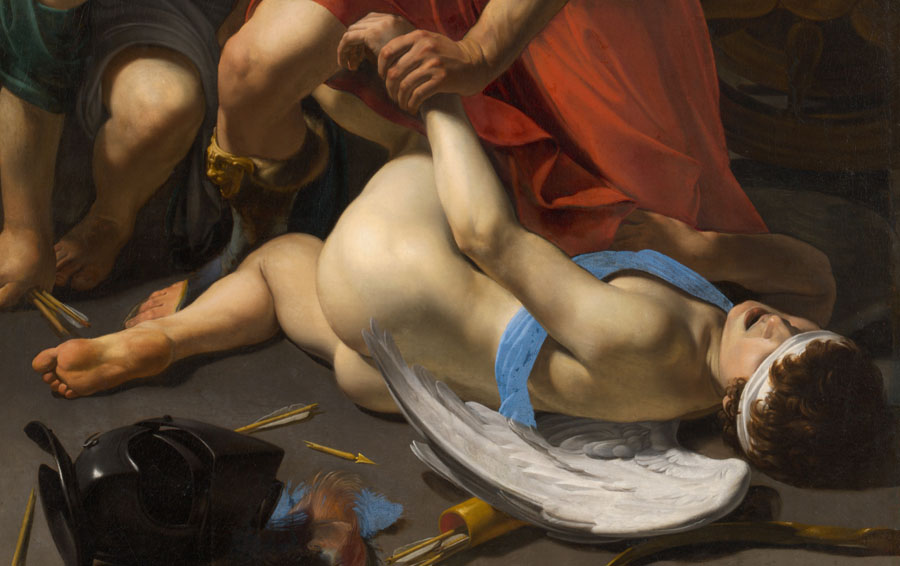
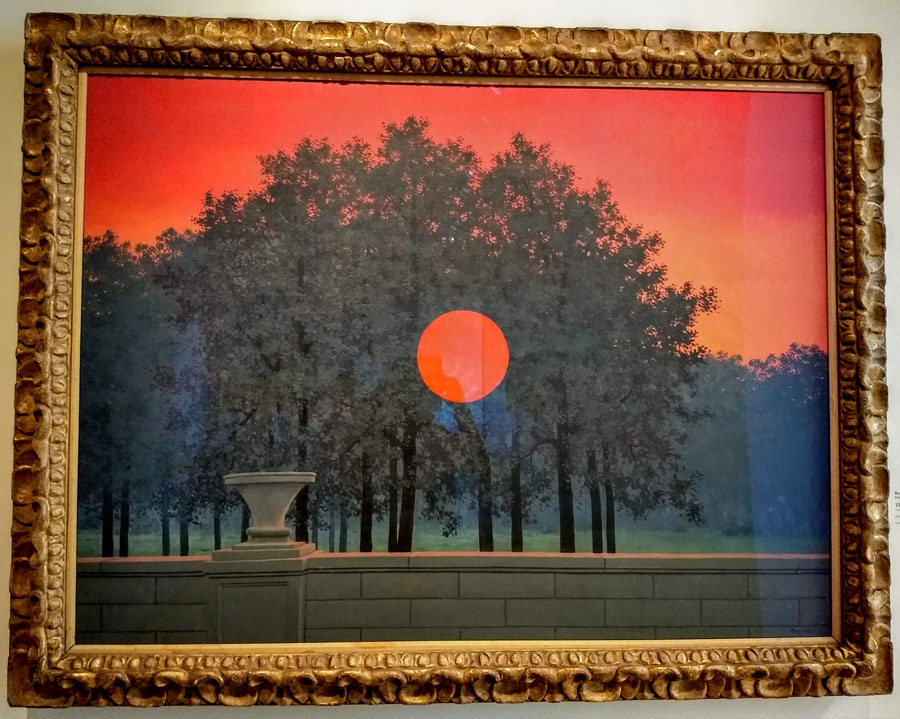
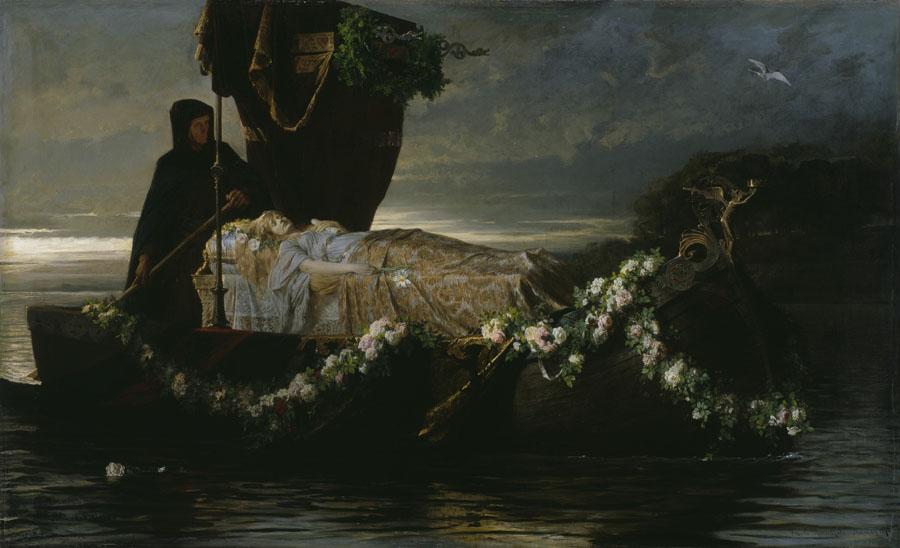
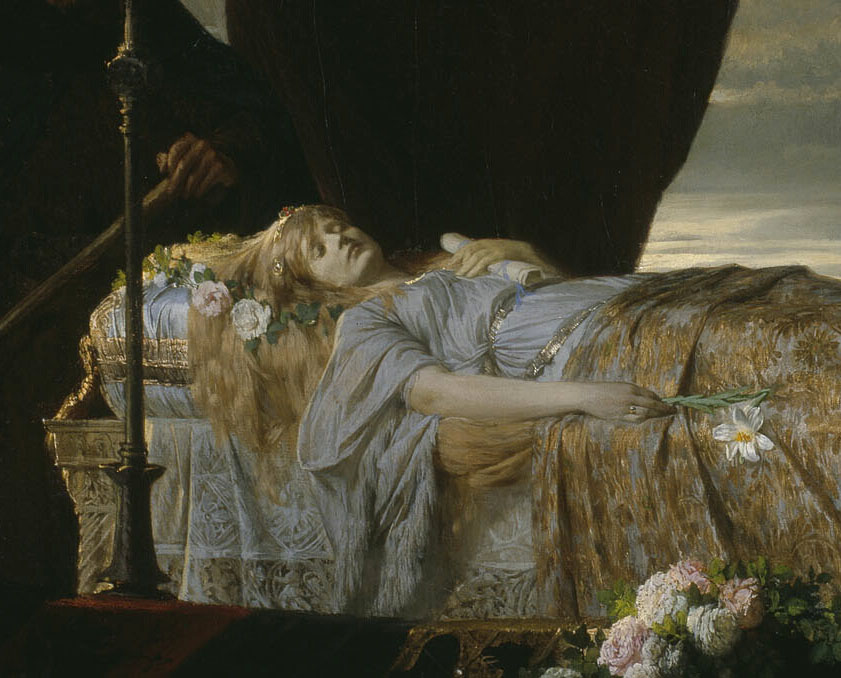
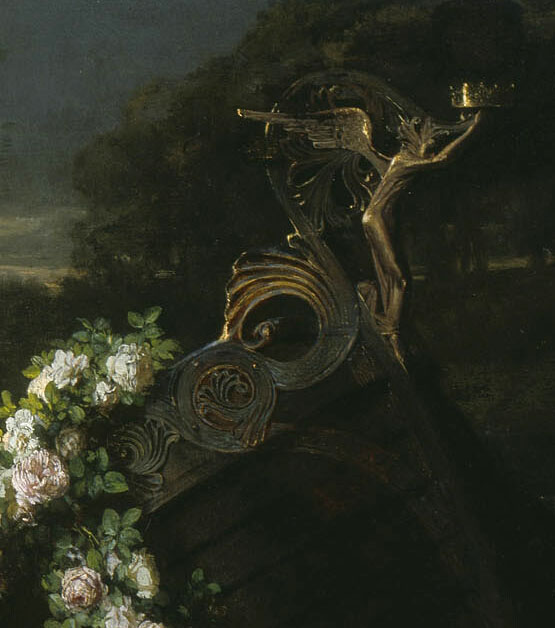
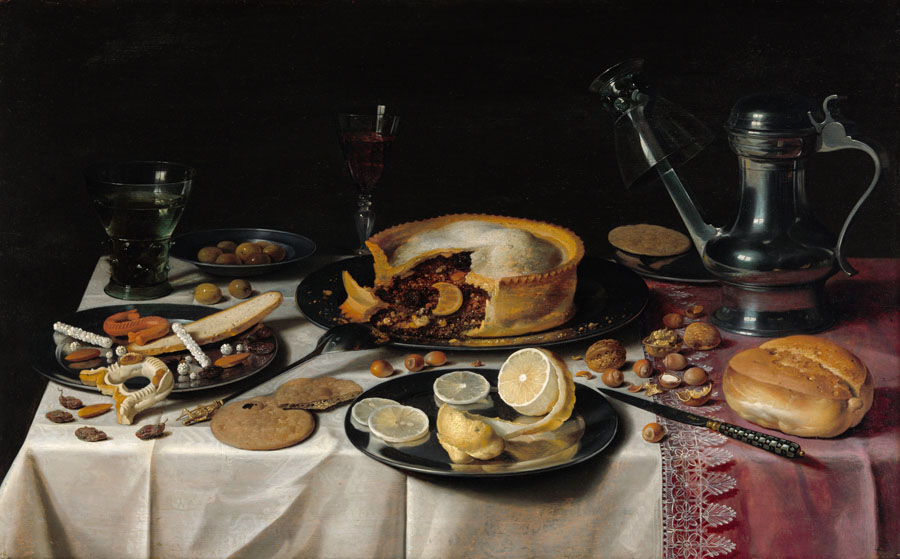
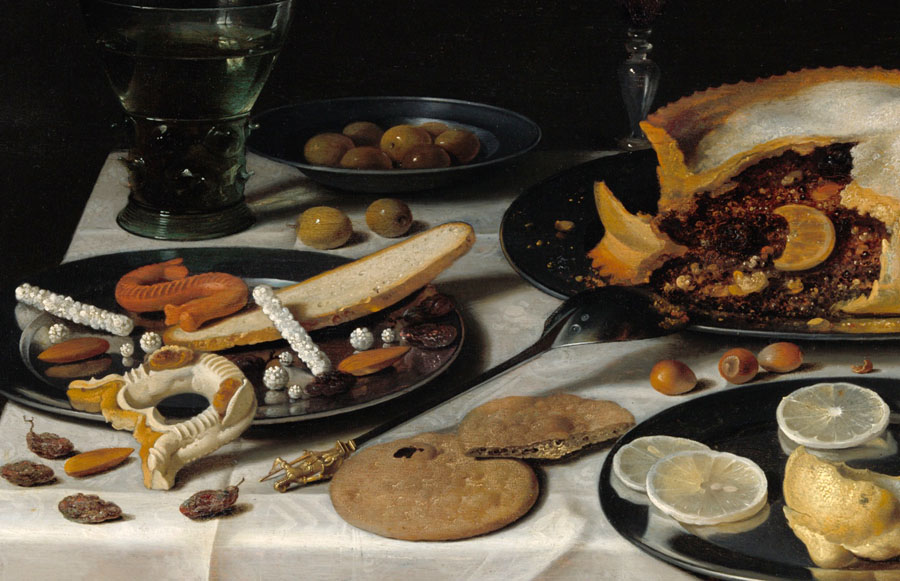
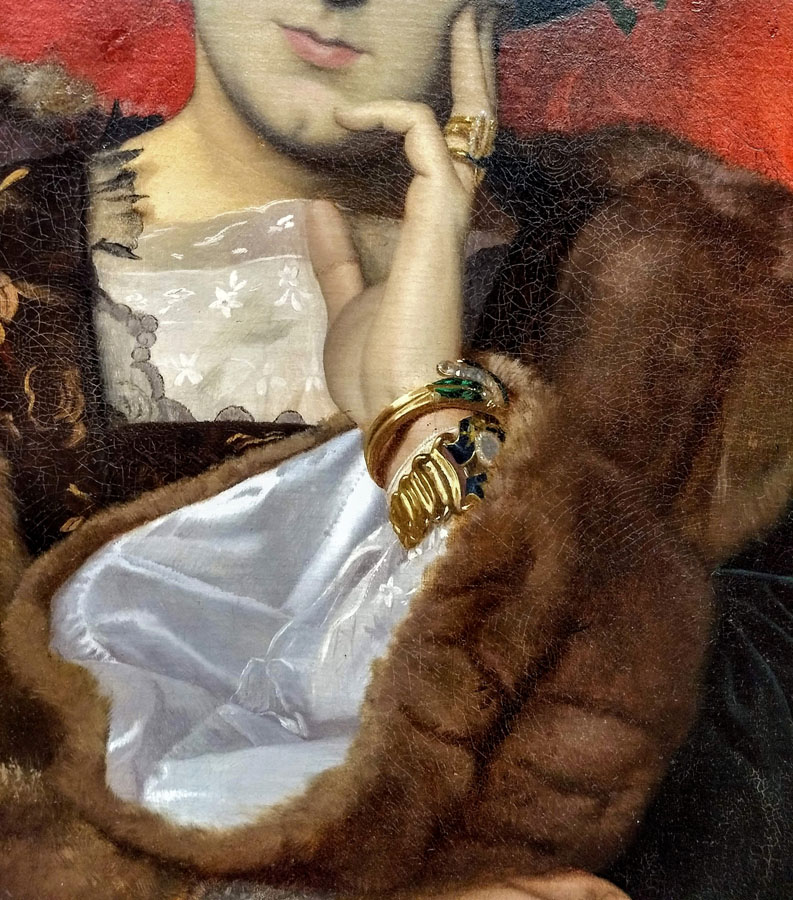
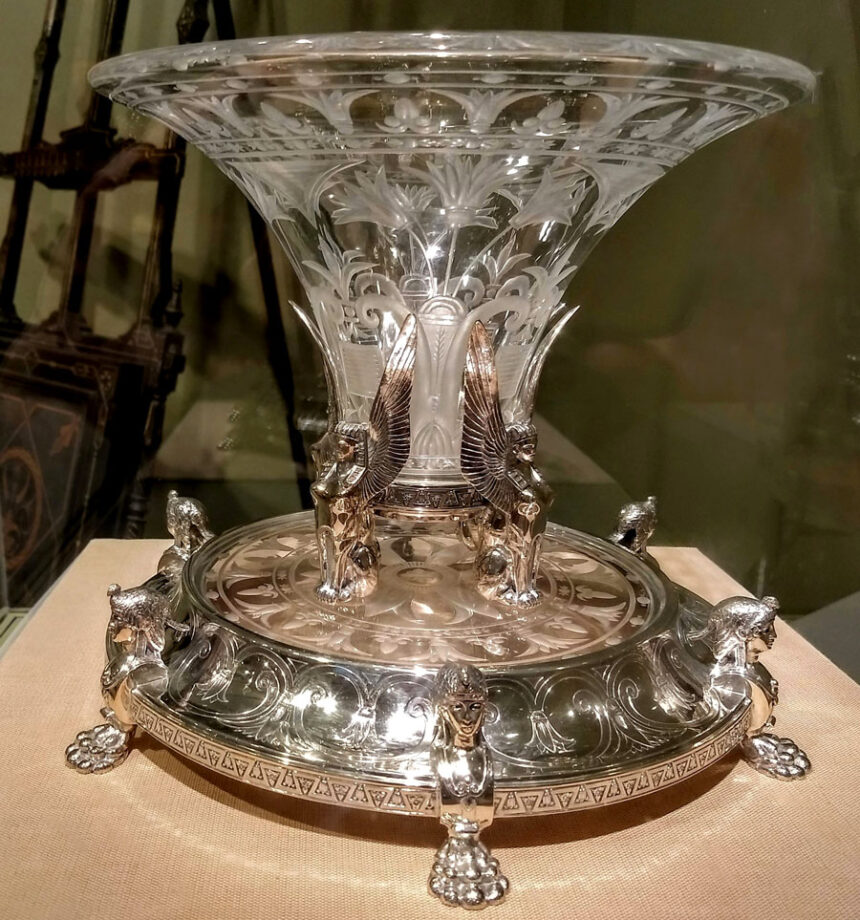
#8 The National Gallery – London, UK
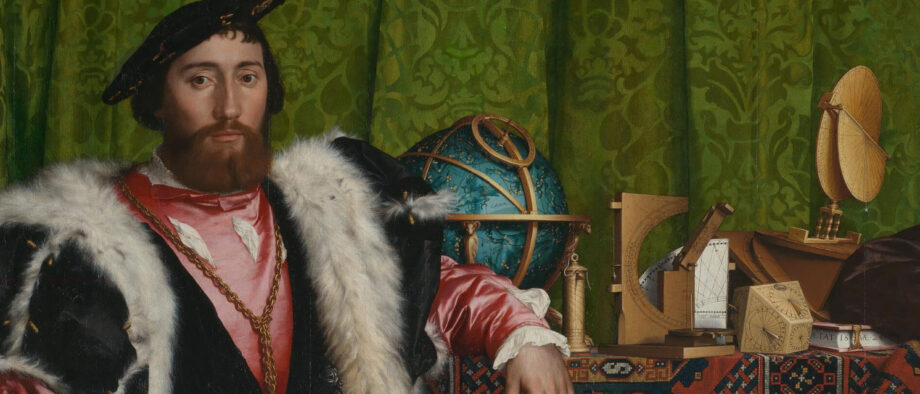
The National Gallery is one of the best art museums in Europe for art lovers to see. Located in Trafalgar Square, London, and it boasts one of the most extensive collections of Western European paintings in the world. It includes works from famous artists such as Leonardo da Vinci, Van Gogh, Bellini, Ingres, Rubens, Holbein, and Rembrandt.
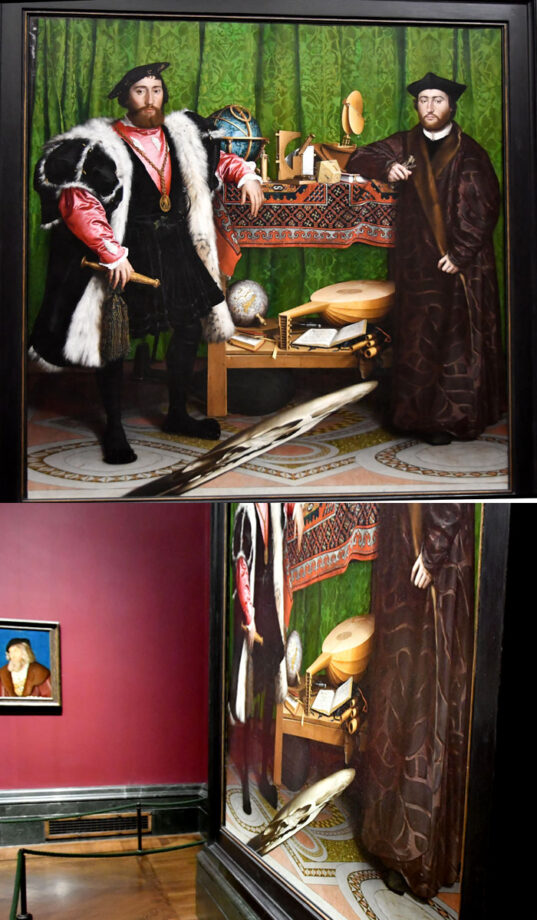
This is one of the most fascinating paintings displayed at the art gallery not only because of all the intricate, realistically painted details but also because of this bazaar skull-the symbol of mortality- that looks extremely elongated when you face the painting. When you move to the right of the painting, the same skull looks almost right. It seems that the artist used a special instrument to create such distortion similar to the one you see in the painting below.
In the second painting below the distortion is incredible but when you look through the monocle-like instrument it looks just right. Holbein painted the royalty of the Tudor court for the most part but I think this painting represents the height of his mastery. The artist is most known for his portrayal of Henry VIII who stands in an overly confident pose looking directly at the viewer. The original was lost during fire but we know about it thanks to multiple copies made from that painting. Holbein died of the plague around 45 years of age!
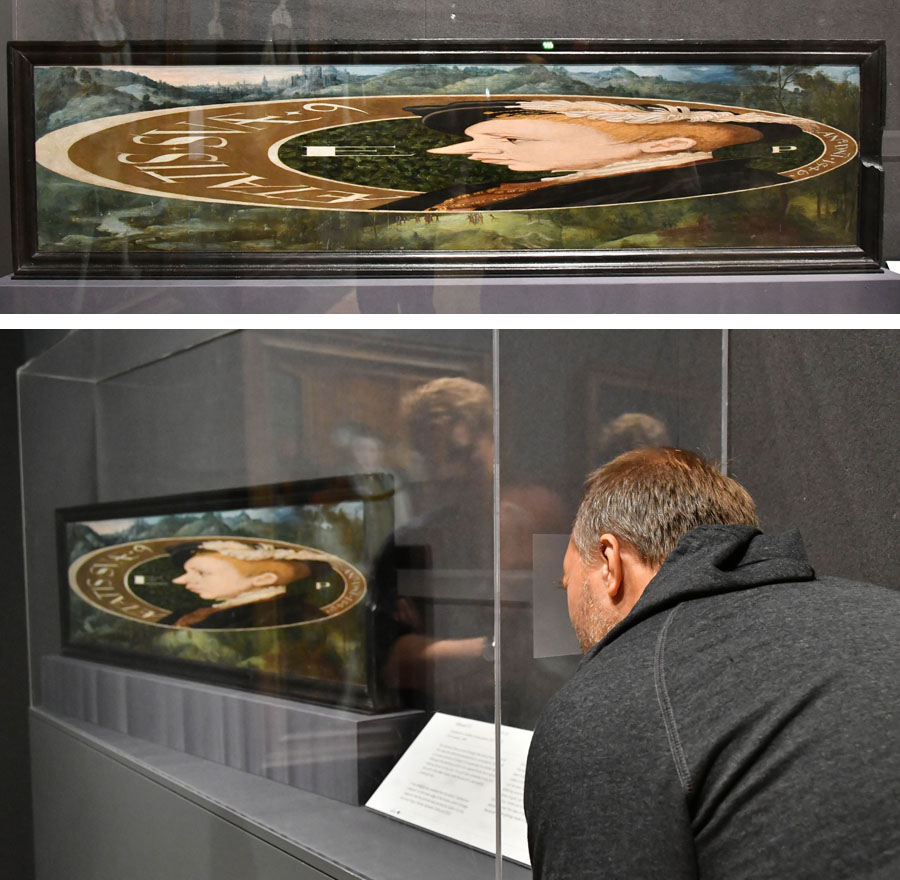
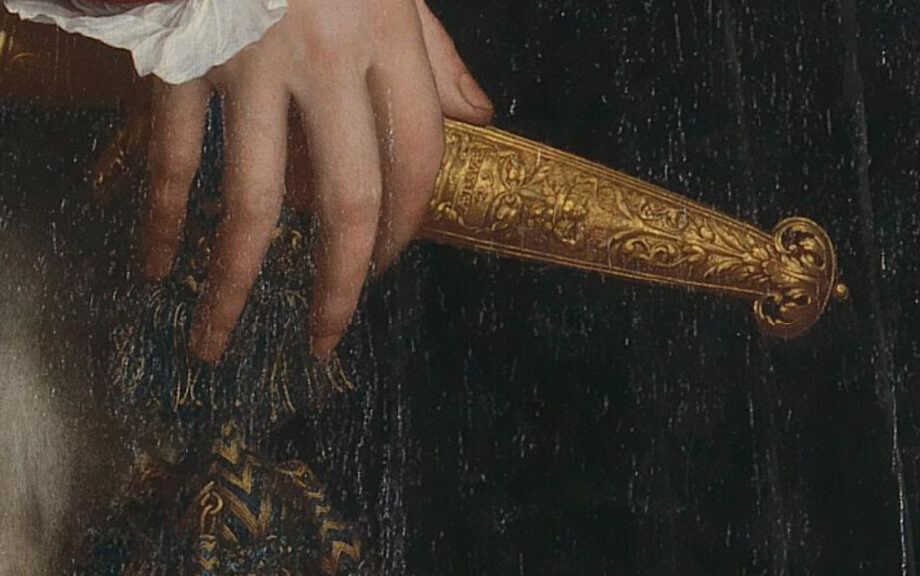
Highlights from the art collection
- Rembrandt, Self Portrait at the Age of 34 plus 25 more artworks by the artist!
- Hans Holbein the Younger, the Ambassadors,
- Jean-Auguste-Dominique Ingres, Madame Moitessier
- Giovanni Bellini, Doge Leonardo Loredan
- Jan van Eyck, The Arnolfini Portrait
- Joseph Mallord William Turner, The Fighting Temeraire
- John Constable, The Hay Wain
- Michelangelo Merisi da Caravaggio, The Supper at Emmaus
- Diego Velázquez, The Toilet of Venus (‘The Rokeby Venus’)
- Leonardo da Vinci, The Virgin of the Rocks
- Paul Delaroche, The Execution of Lady Jane Grey
- Giovanni Battista Moroni, Portrait of a Lady (‘La Dama in Rosso’). There are several portraits displayed in the art collection. All of them are remarkable.
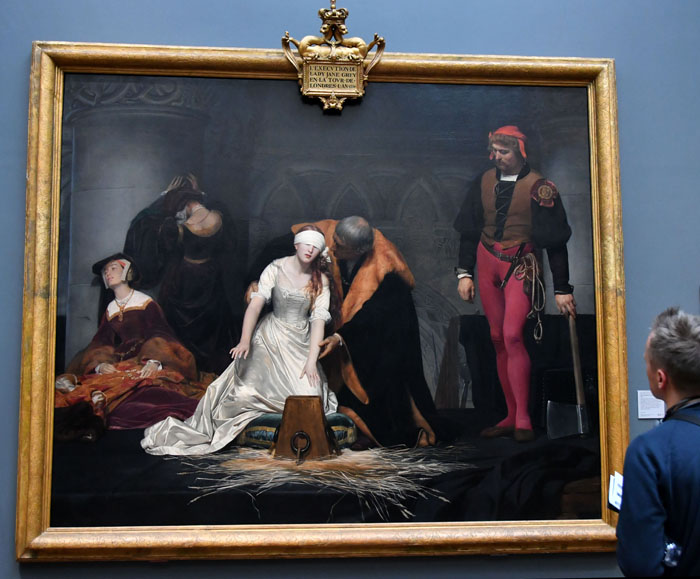
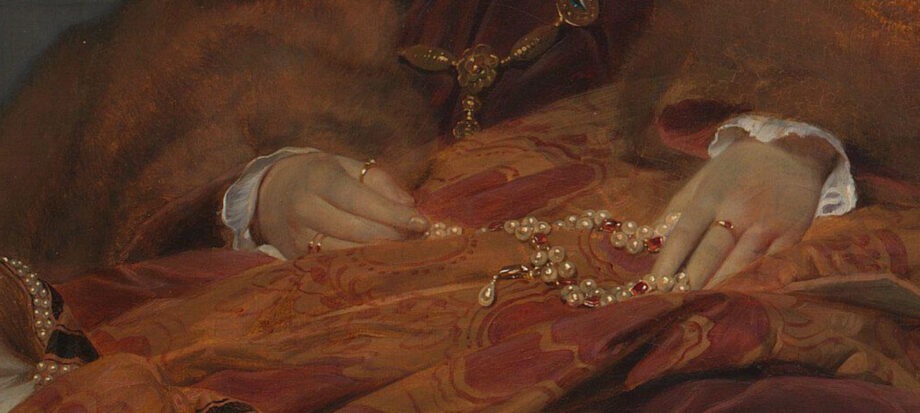
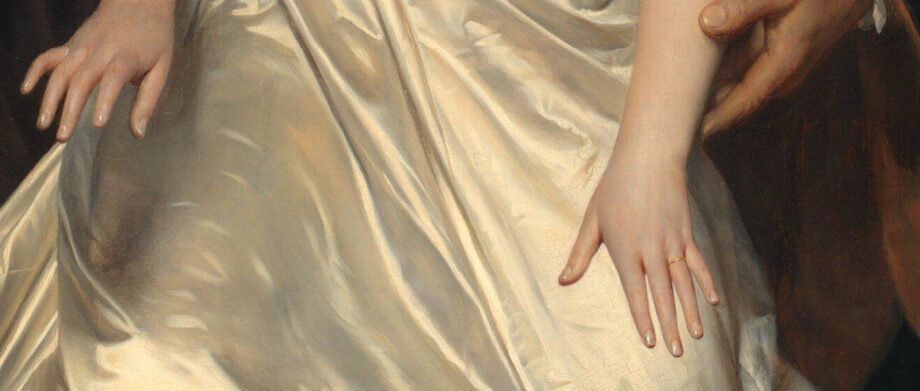
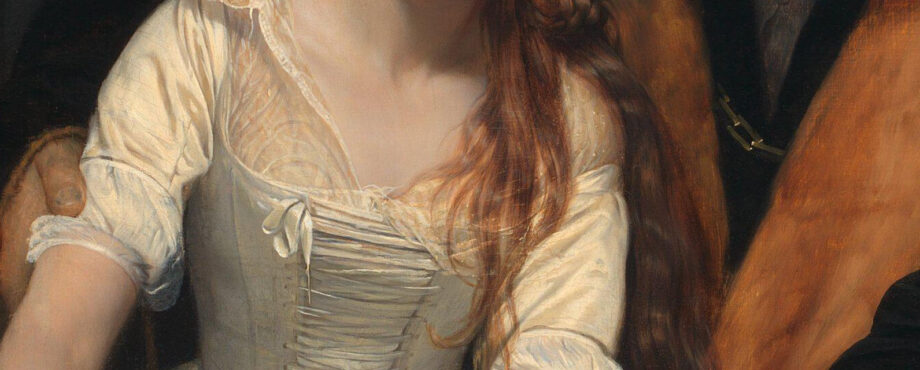
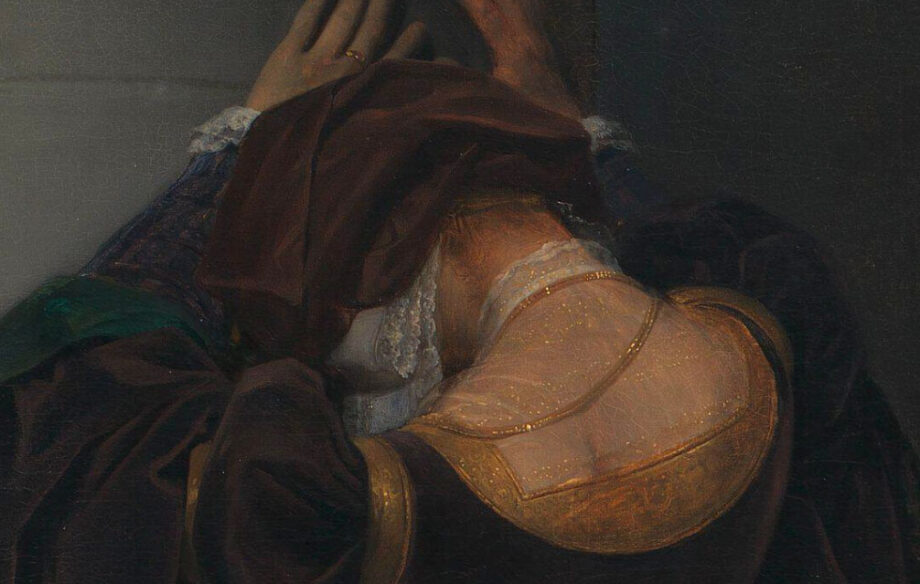
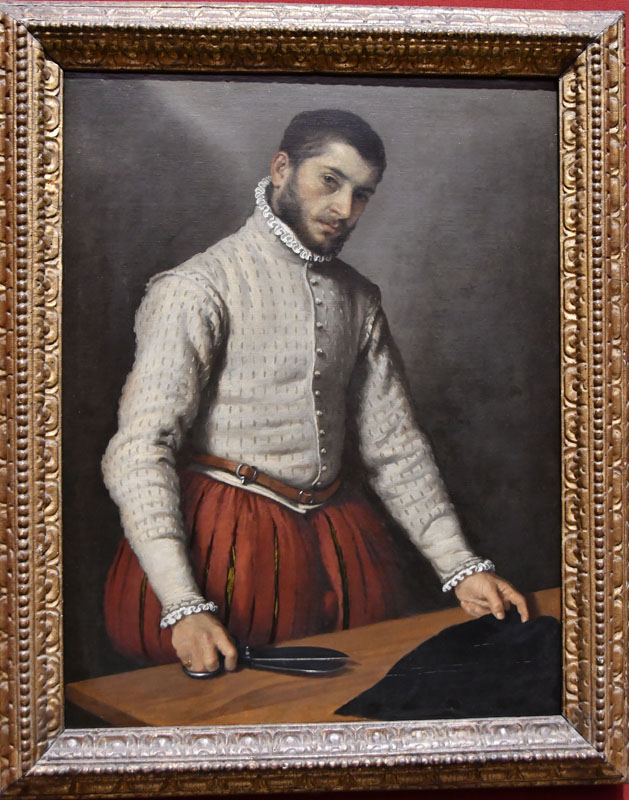
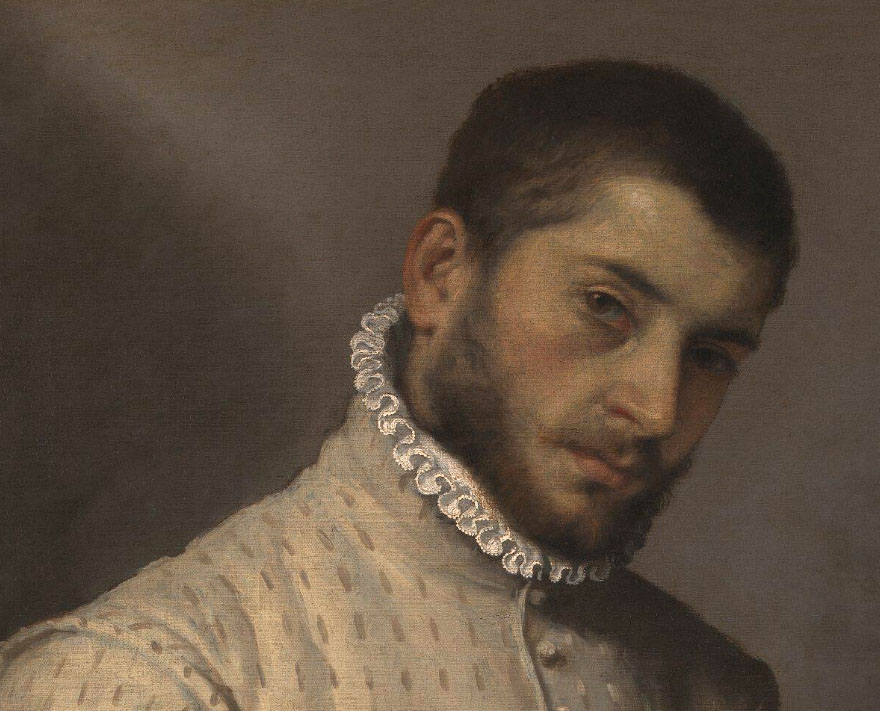
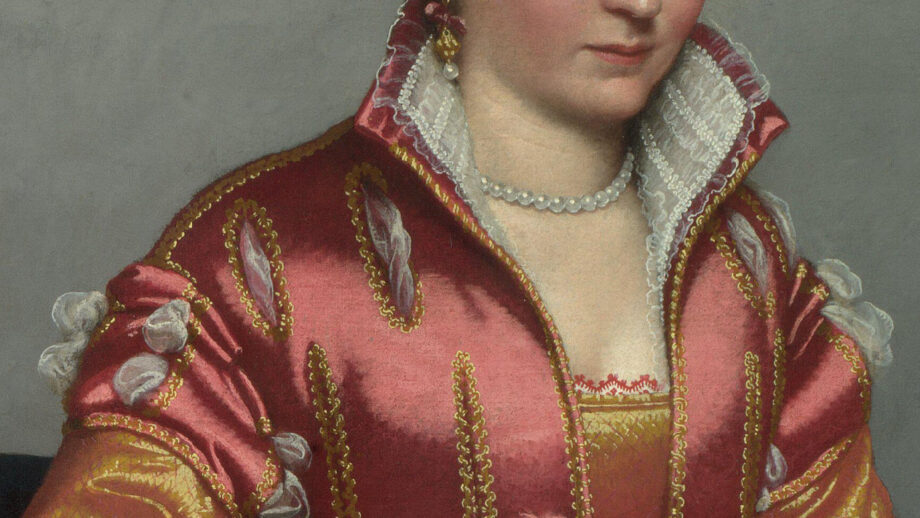
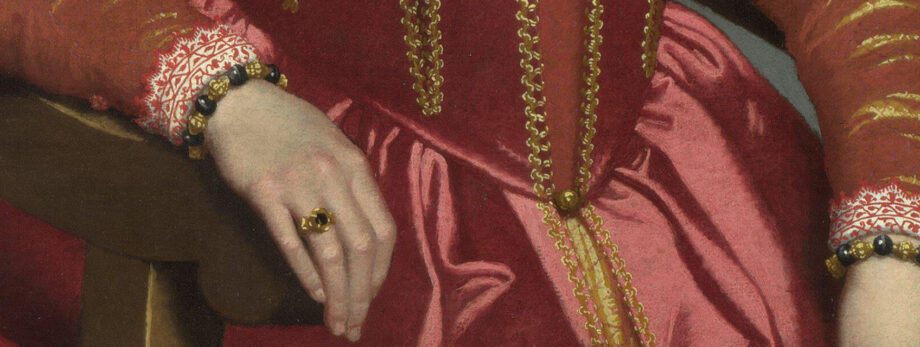
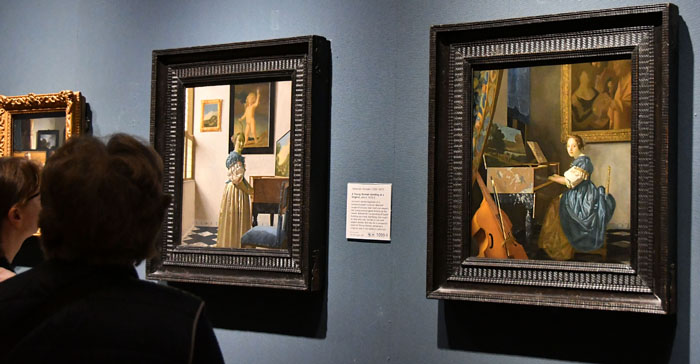
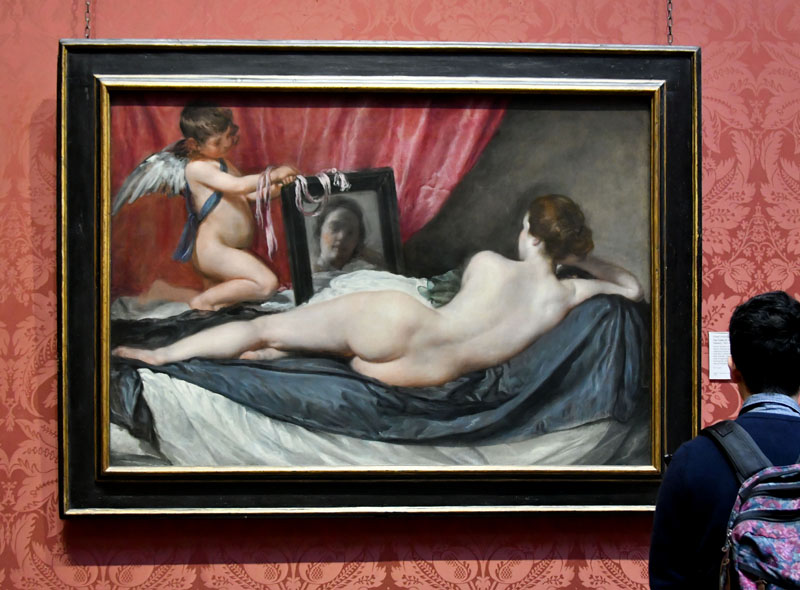
However, in 1914, the painting was attacked by a suffragette named Mary Richardson, who slashed the canvas seven times with a meat cleaver. She was protesting the arrest of fellow suffragette Emmeline Pankhurst and chose the painting because she believed it represented the objectification of women.
Fortunately, the damage was not severe, and the painting was restored by the gallery’s chief restorer, Helmut Ruhemann. Today, the cuts are still visible, but they have been carefully repaired, and the painting remains on display at the National Gallery.
The Rokeby Venus was painted by Diego Velázquez between 1647 and 1651. Velázquez was the court painter to King Philip IV of Spain, and the painting is believed to have been commissioned by the king’s minister, Gaspar de Guzmán, Count-Duke of Olivares. The painting depicts the Roman goddess Venus, who is shown reclining on a bed, looking into a mirror held up by Cupid, while her attendants help her with her toilette. It is considered one of Velázquez’s greatest masterpieces and one of the most famous depictions of the female nude in Western art.
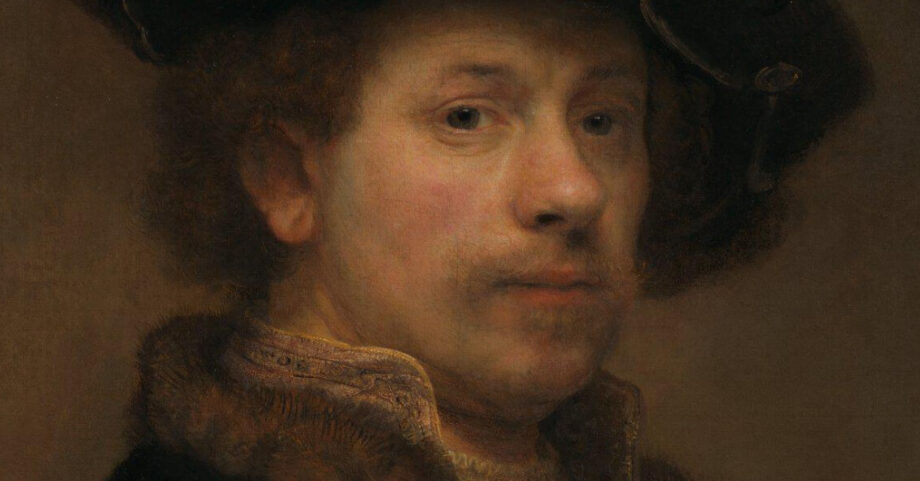
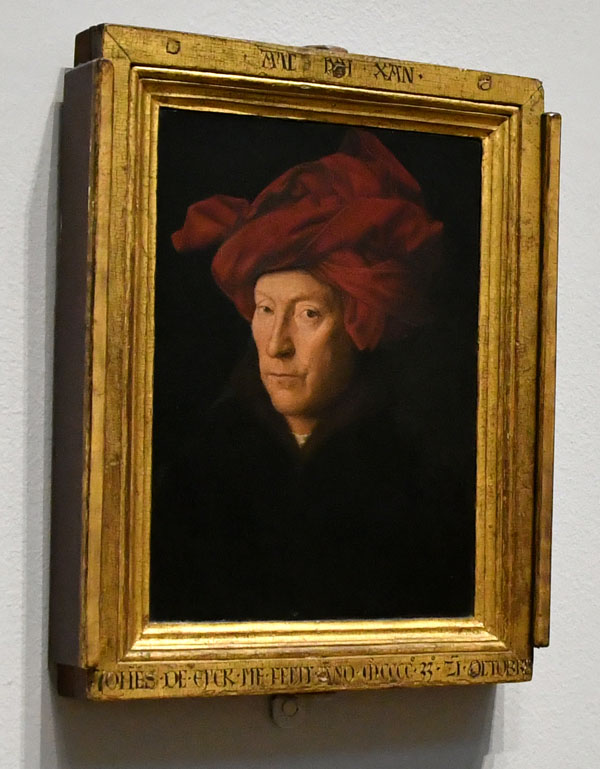
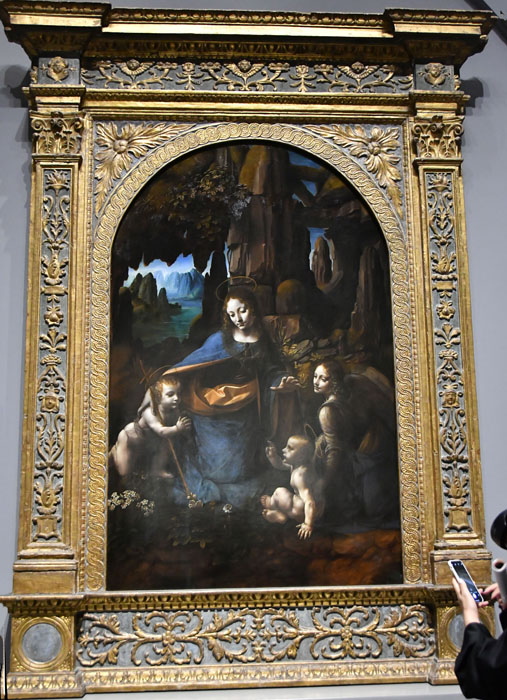
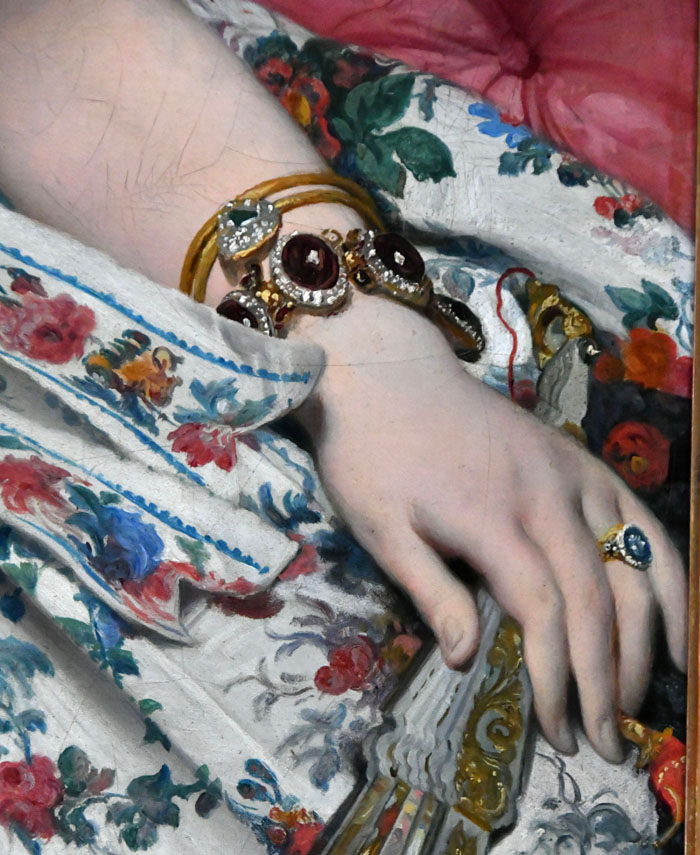
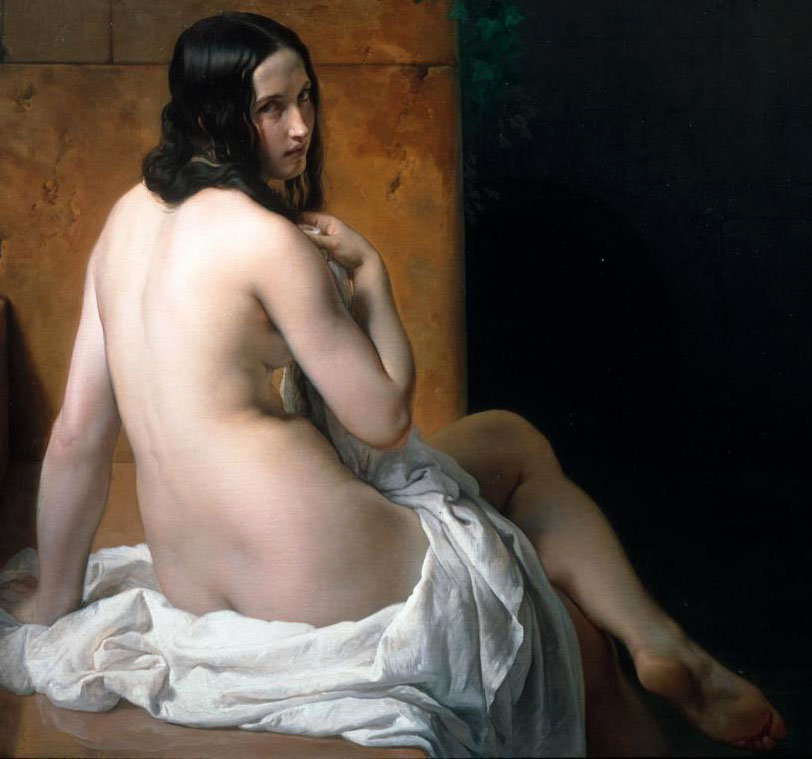
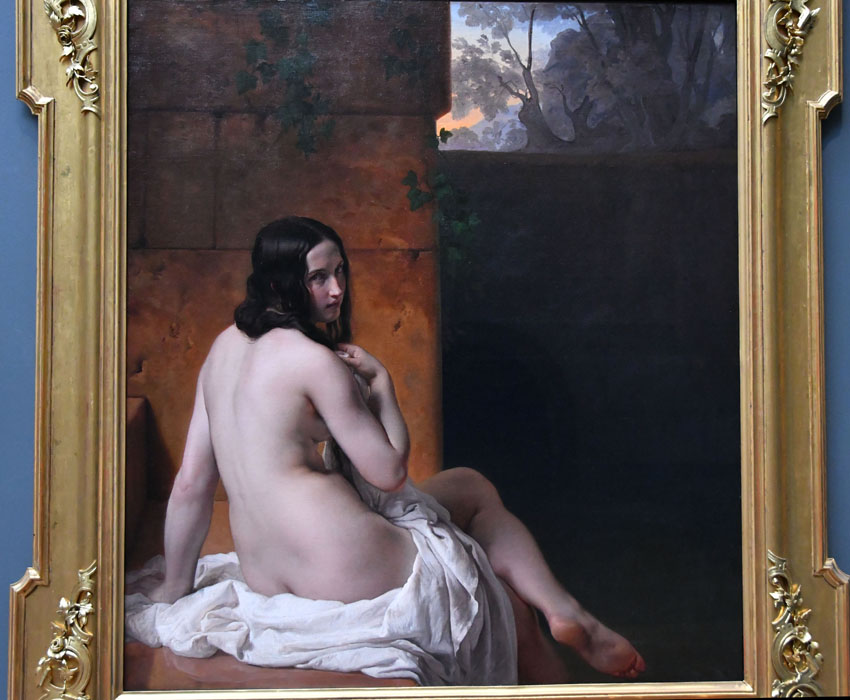
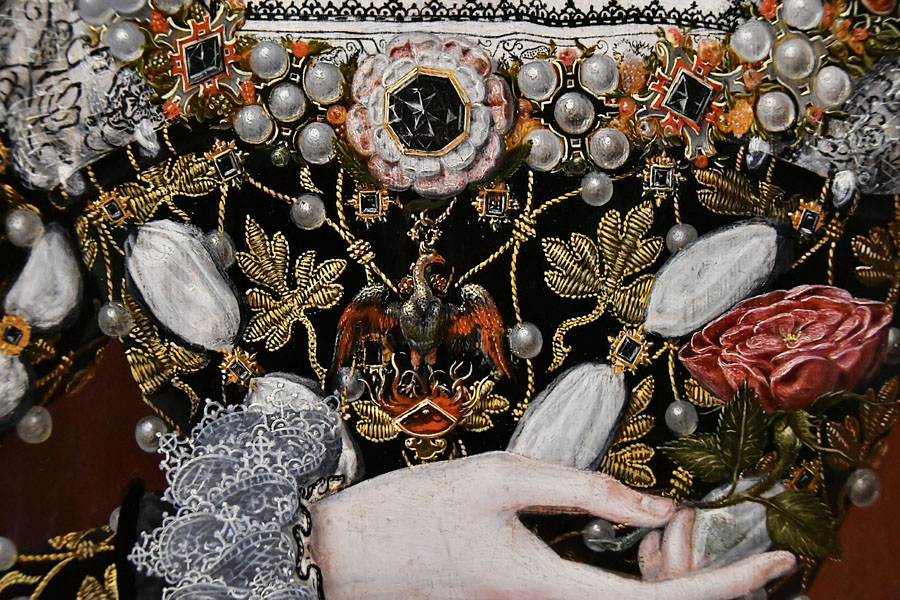
#9 The Rijksmuseum, Amsterdam, Netherlands
The Rijksmuseum is the most extensive art museum in the Netherlands, housing over 1 million works of art from the country’s cultural heritage, ranging from paintings and sculptures to decorative arts, prints, and photographs. One of the best art museums in Europe, it includes art from famous Dutch painters such as Rembrandt, Vermeer, and Frans Hals. Located in Amsterdam, it’s famous for its collection of Dutch art and history. Some of the most famous works in the collection include:
“The Milkmaid” by Johannes Vermeer: This painting, completed in 1658, depicts a young female servant pouring milk. There are a few more paintings by the artist – “Woman reading a letter” 1663, “View of the Houses in Delft” 1658 and the “”Love letter” 1670.
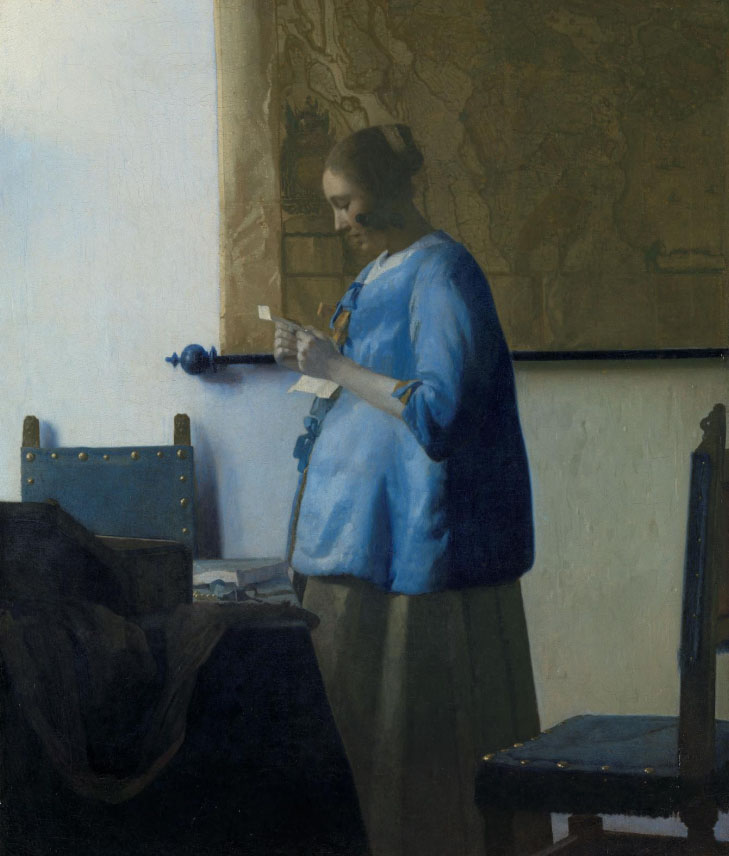
- “The Night Watch” by Rembrandt: This large-scale painting, completed in 1642, depicts a group of Dutch militiamen and is considered one of the greatest masterpieces of the Dutch Golden Age.
- “The Jewish Bride” by Rembrandt: This intimate portrait, completed in 1667, depicts a young Jewish couple in a tender embrace and is considered one of Rembrandt’s most romantic works. Actually, there are many artworks displayed in the museum including etchings and lesser known paintings next to the famous paintings, such as Self-portrait as the Apostle Paul, Rembrandt van Rijn, 1661; Portrait of a Woman, Possibly Maria Trip, Rembrandt van Rijn, 1639 and so on.
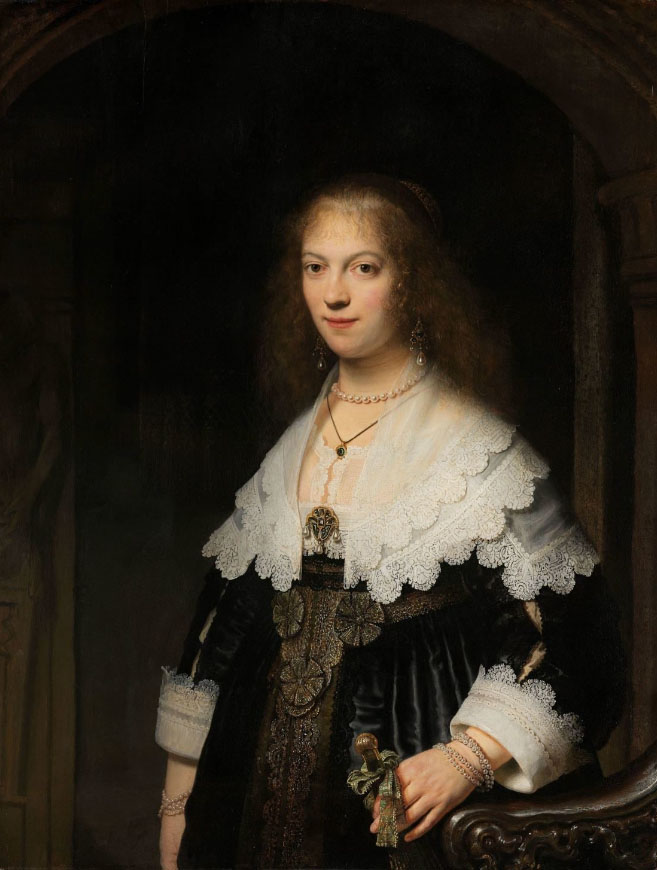
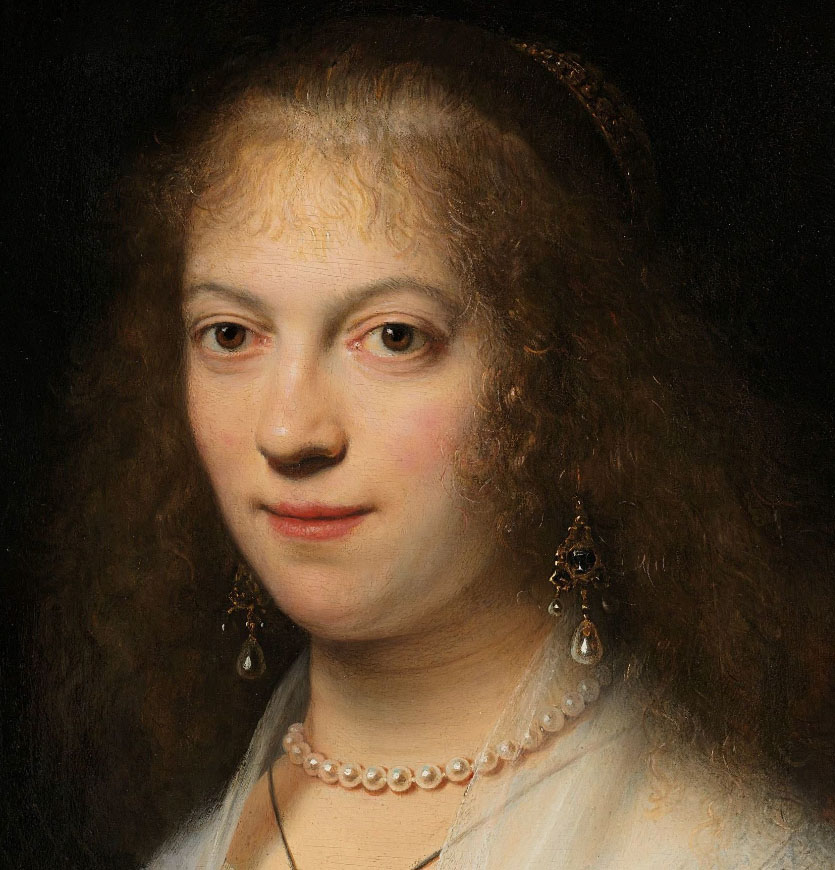
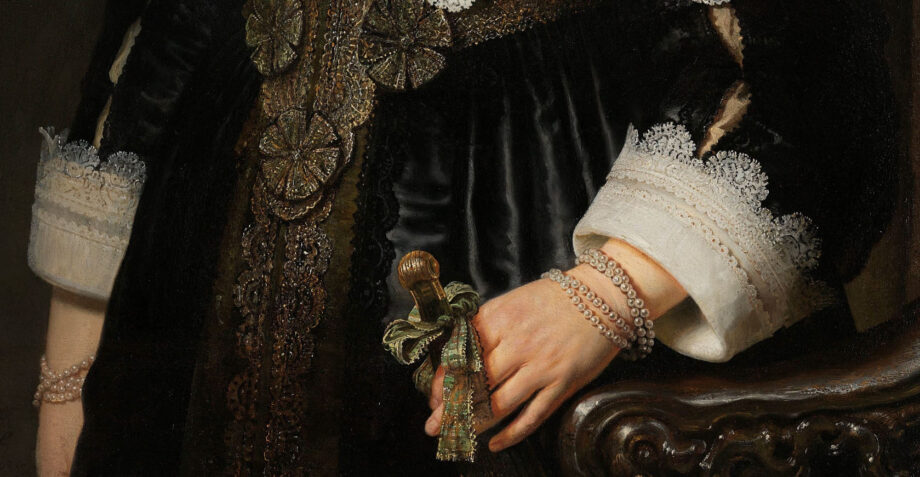
- “The Battle of Waterloo” by Jan Willem Pieneman: This large-scale painting, completed in 1824, depicts the final battle of the Napoleonic Wars and is considered one of the most significant historical paintings in Dutch art.
- “The Doll’s House” by Petronella Oortman: This miniature dollhouse, completed in the late 17th century, is one of the most elaborate and well-preserved examples of a Dutch dollhouse and provides a fascinating glimpse into the daily life of a wealthy Dutch family. There is an array of the dollhouses at the museum.
- “Still life with gilded beer jug,” by Willem Claesz. Heda, 1634 – a very similar still life painting I mentioned earlier. Heda created dramatic, hyperrealist paintings with the items of luxurious living at that time.
- “Rest on the Flight into Egypt,” by Jan Brueghel (I) (manner of), 1600 – 1699, oil on copper.
#10 The Pitti Palace, Florence, Italy
The Pitti Palace, located in Florence, Italy, has a remarkable art collection that often gets overlooked by tourist guides. And while everyone visits the Uffizi Gallery, the palace offers an equally beautiful experience and inspiration. This is one of the best art museums in Europe. The palace was designed in the 15th century by Filippo Brunelleschi, the architect of the famous dome of the Florence Cathedral. The building features a grand façade and spacious interior courtyards. The Pitti Palace has been home to several prominent Italian families, including the powerful Medici family, who lived in the palace during the Renaissance. The palace was also used as a residence by the King of Italy after the unification of Italy in the 19th century. The palace is surrounded by expansive gardens that are not well-maintained and were a disappointment for me on my visit back in 2021. The Boboli Gardens, located behind the palace seem to be overrated and in desperate need of funding to bring them back to their former glory.
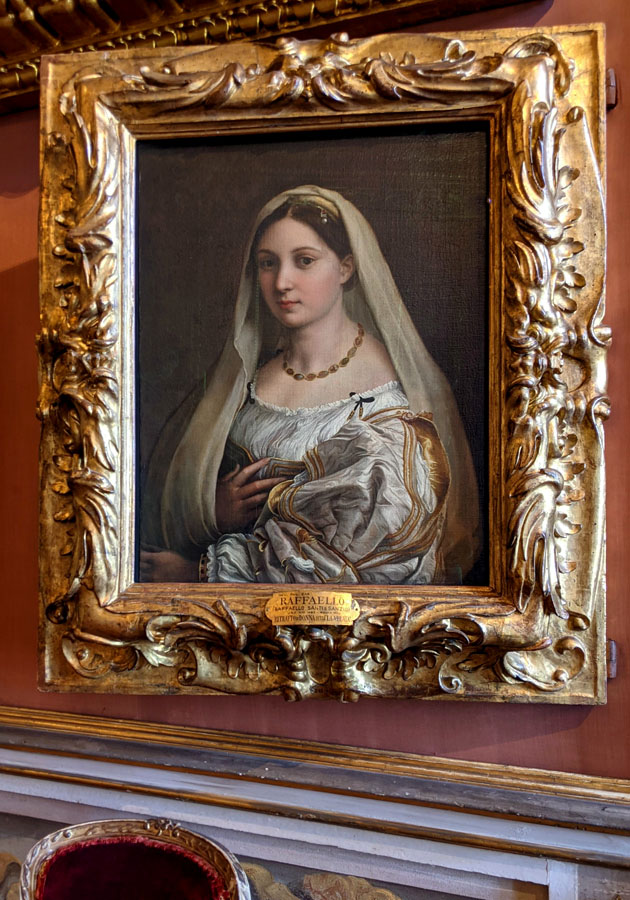
With a collection of over 200,000 works of art, The Pitti Palace is so incredibly rich in art, it’s a must-see art museum for art lovers! It houses a vast collection of Renaissance and Baroque paintings, as well as works by Italian artists from the 18th to the 20th centuries. The palace also contains the Royal Apartments, which are decorated with ornate furnishings and artworks. Some rooms have so many famous artists on their walls including Raphael, Botticelli, Perugino, Van Dyck, and Rembrandt it’s truly stunning! Famous paintings occupy every inch of the wall space.
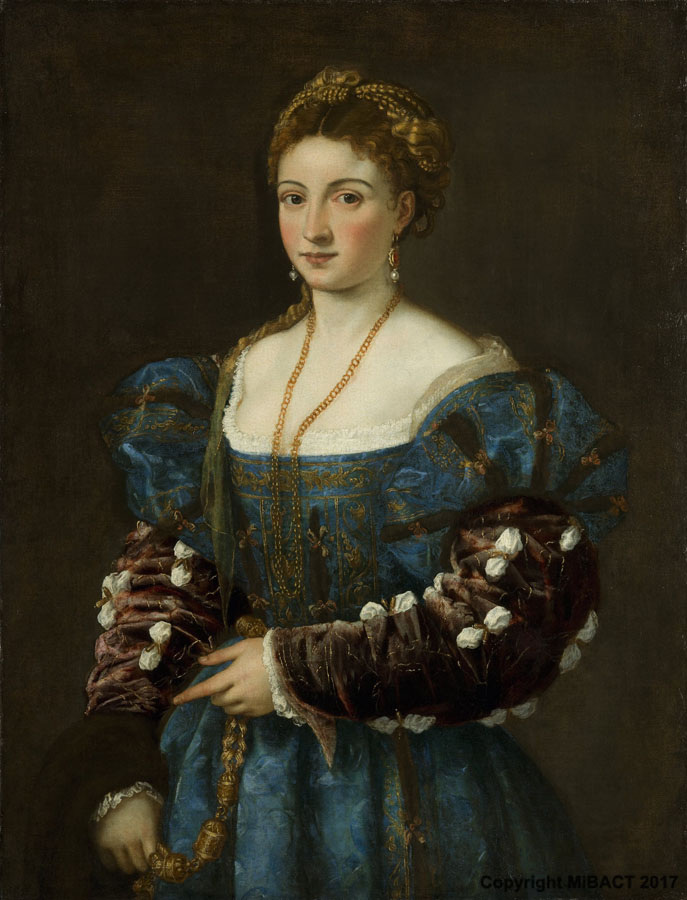
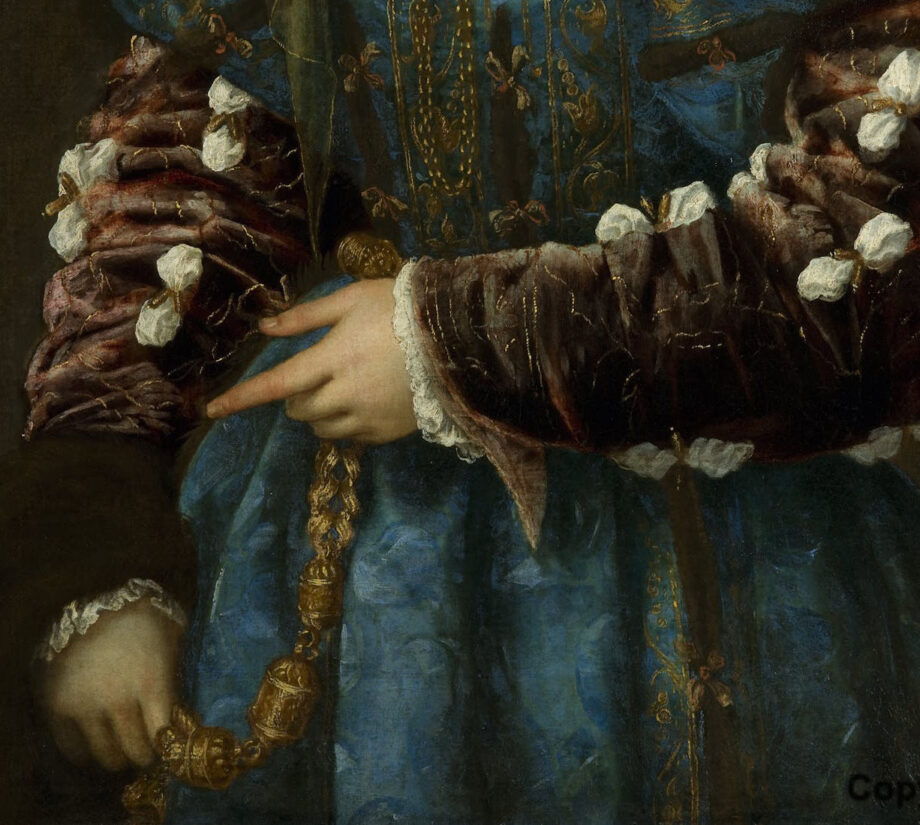
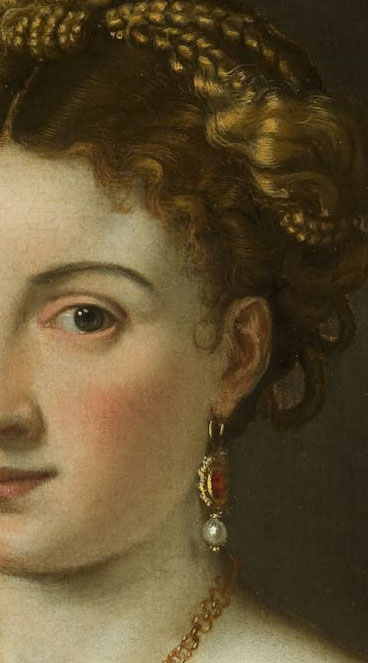
Some of the most famous paintings in the Pitti Palace include:
- Madonna of the Chair by Raphael: Madonna della Seggiola, completed in the early 16th century, is one of Raphael’s most famous depictions of the Madonna and Child. The circular painting is noted for its tender depiction of the mother and child. Uniquely presented in space, famous art has beautiful color harmony and a graceful flow of lines. There are many paintings by Raffael in the Pitti palace. I think their presentation is also very interesting with unique, elaborate golden frames, some of them suspended on the wall like the opened shutters.
- Raphael (Urbino 1483 – Rome 1520), Woman with a Veil, 82 x 60.5 cm, 1515
- Bust of Antoninus Pius, Roman Art, Mid 2nd century A.D., Greek Marble, 67.5 cm
- Bust with the Head of Aristotle, Roman Art, reek marble and onyx, 2nd century AD
- Titian (Pieve di Cadore 1488/90 – Venice 1576), Portrait of a Lady (“La Bella”), oil on canvas, 1536-1538, 89 x 75.5 cm
- Canova, Venus, marble sculpture, Height 171.5 cm, 1812. There are some really beautiful neoclassical sculptures including Venus and the bust of Napoleon besides painting at the palace.
- Judith with the Head of Holofernes, Cristofano Allori (Firenze 1577-1621)
- Martyrdom of St. Cecilia, Orazio Riminaldi (Pisa 1593- 1630), oil on canvas, 334 x 216.6 cm, 1625
- Bust of Cosimo I de’ Medici, Baccio Bandinelli (Florence 1493 – Florence 1560)
- Charity, Lorenzo Bartolini (Savignano, Prato 1777 – Firenze 1850)
- The Seven Wonders of the World, Bernard Rantwyck (Flanders, active c. 1573 – 1596),
36×47 cm,1611 - Monumental vase, Sèvres Factory, 1784, 200 cm, Porcelain painted in “blue Nouveau” and gilded; gilded bronze
- Still life with fruit and a crystal vase, Willem van Aelst (Delft 1626-27 – Amsterdam post 1683)
- St. Francis of Assisi, Jusepe de Ribera (1591-1652)
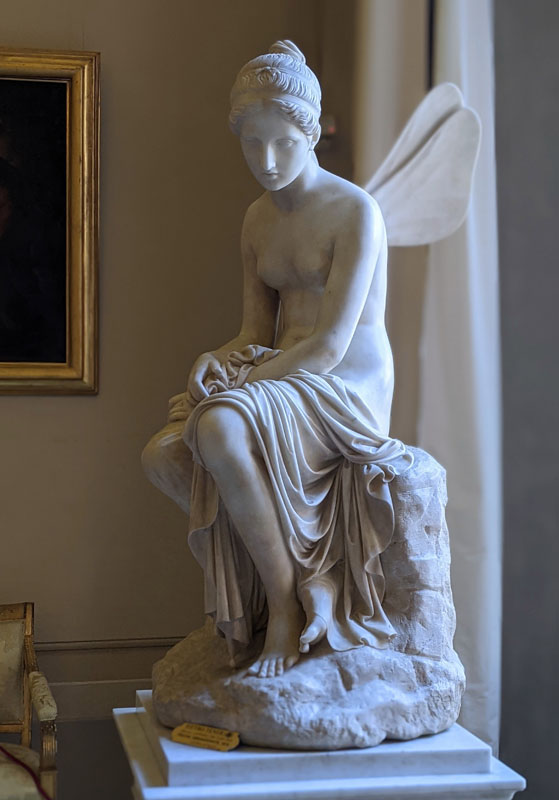
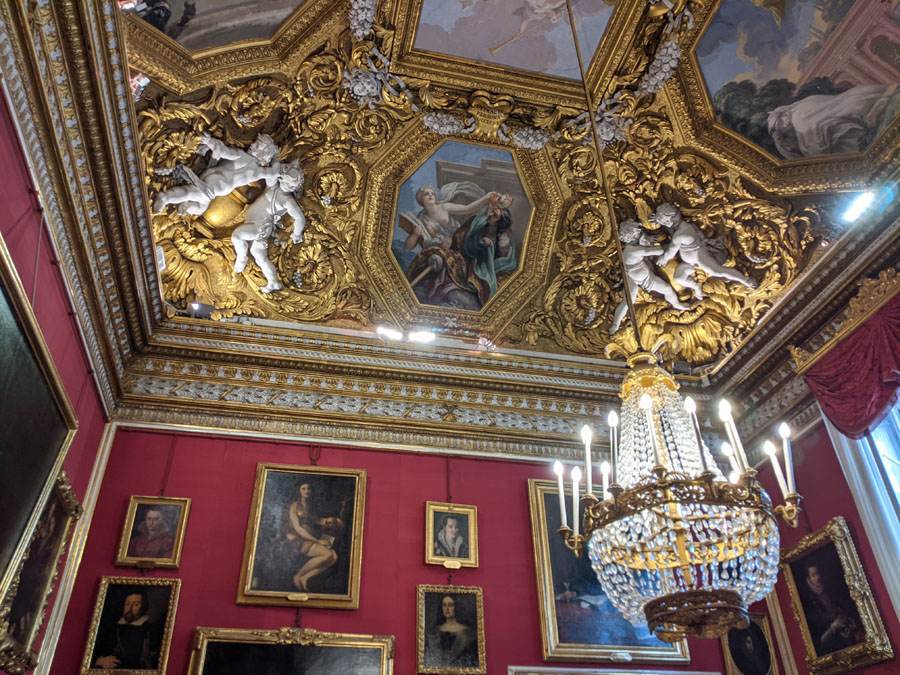
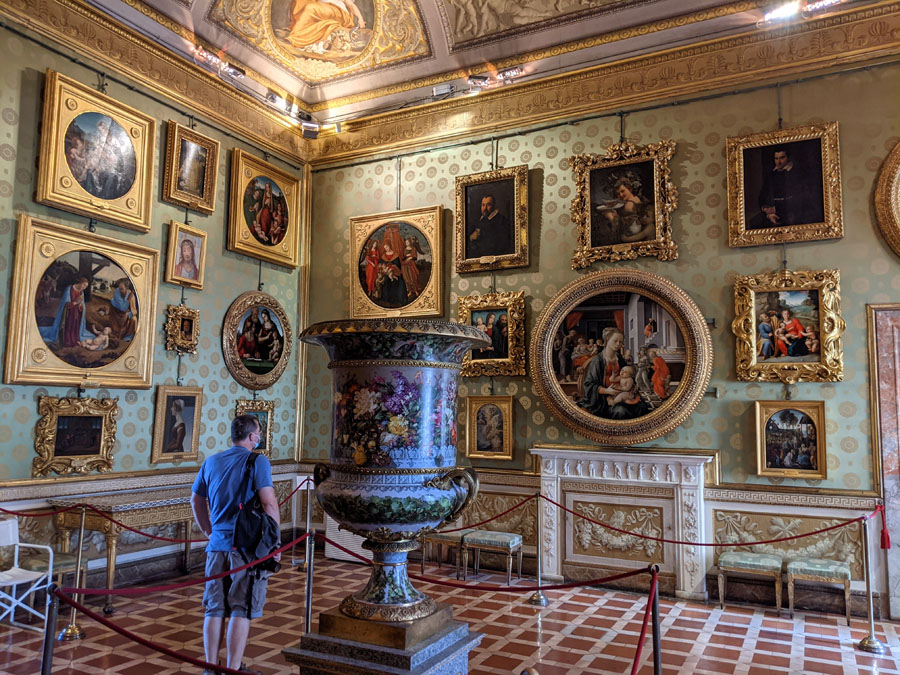
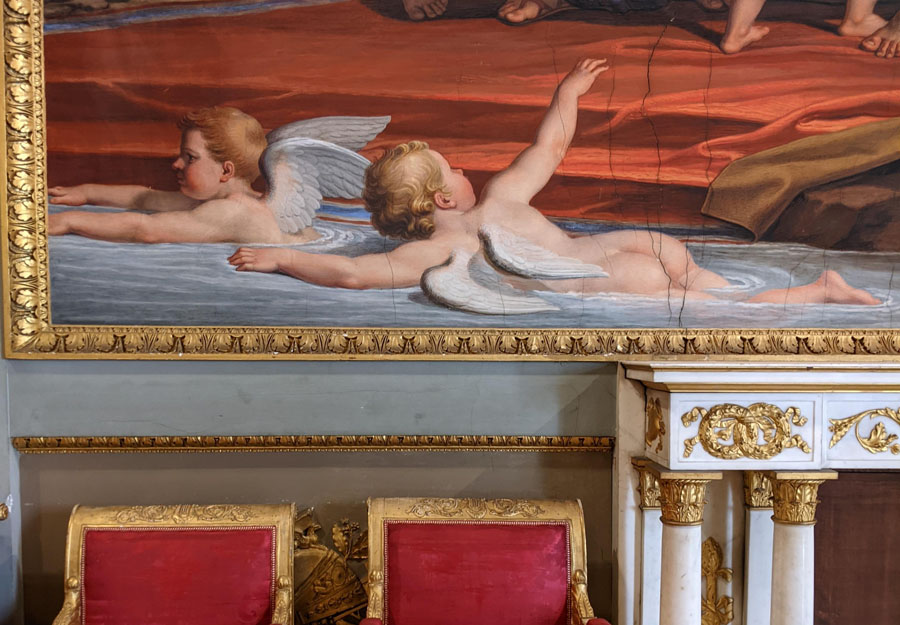
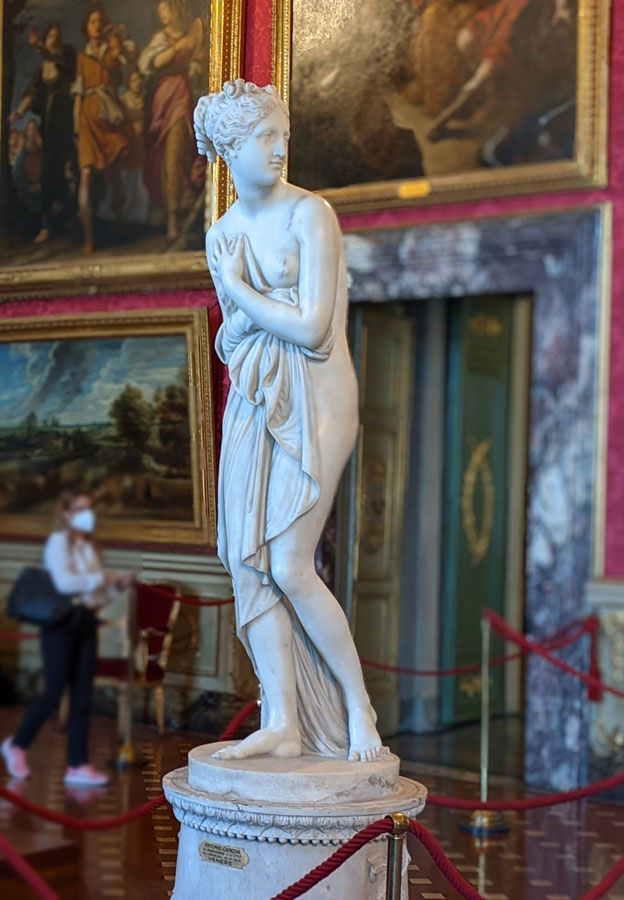
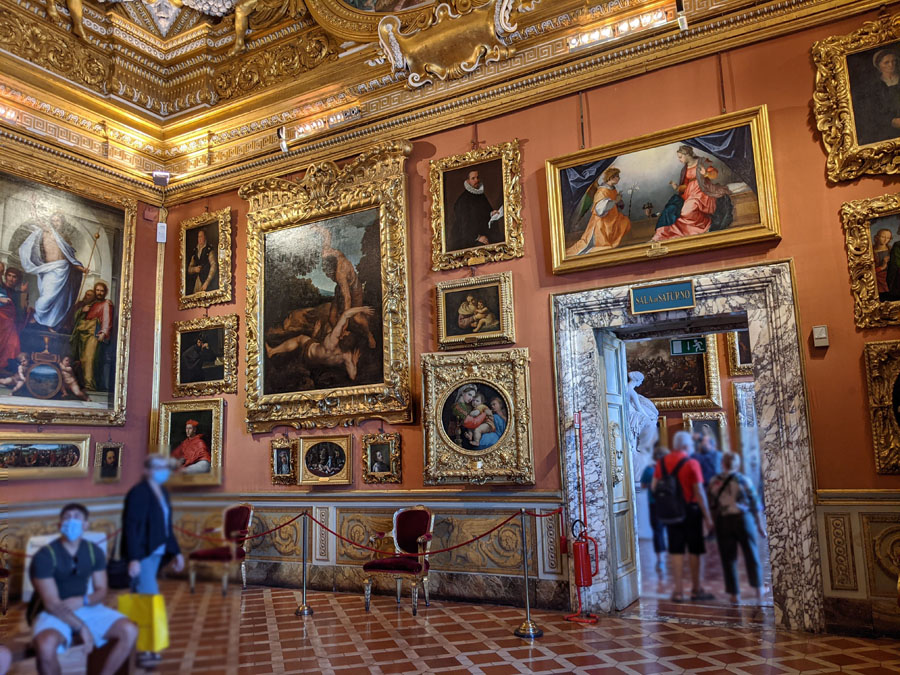
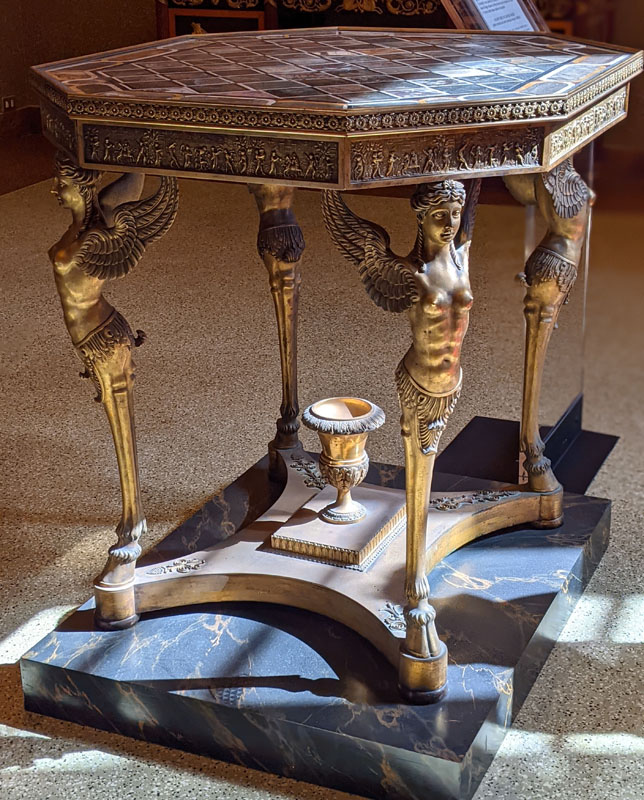
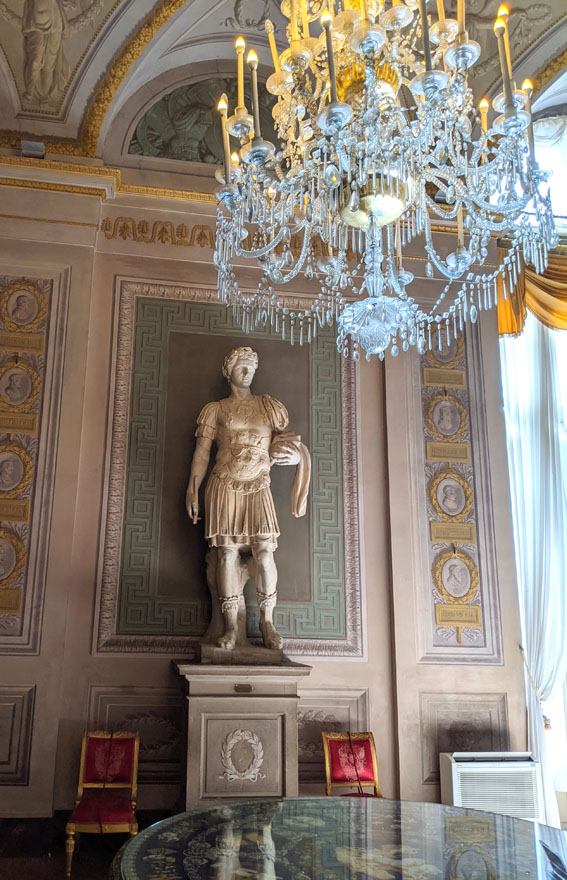
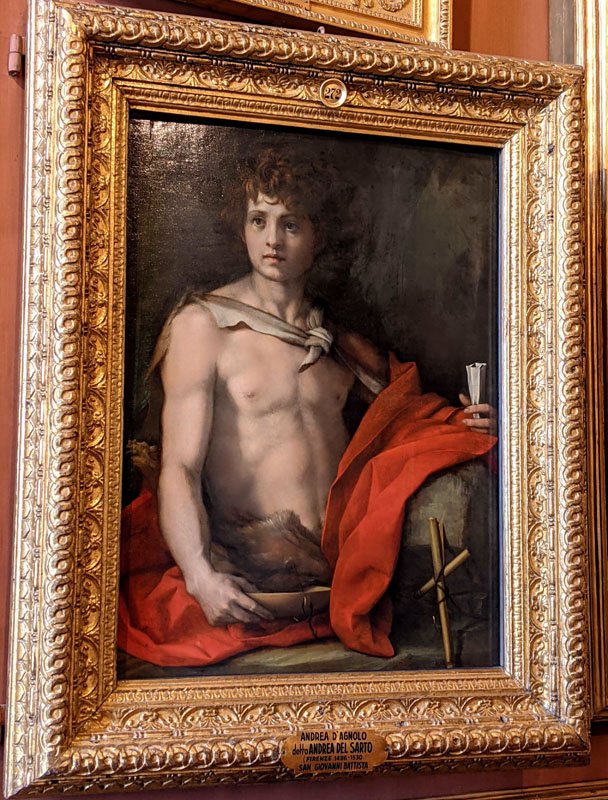
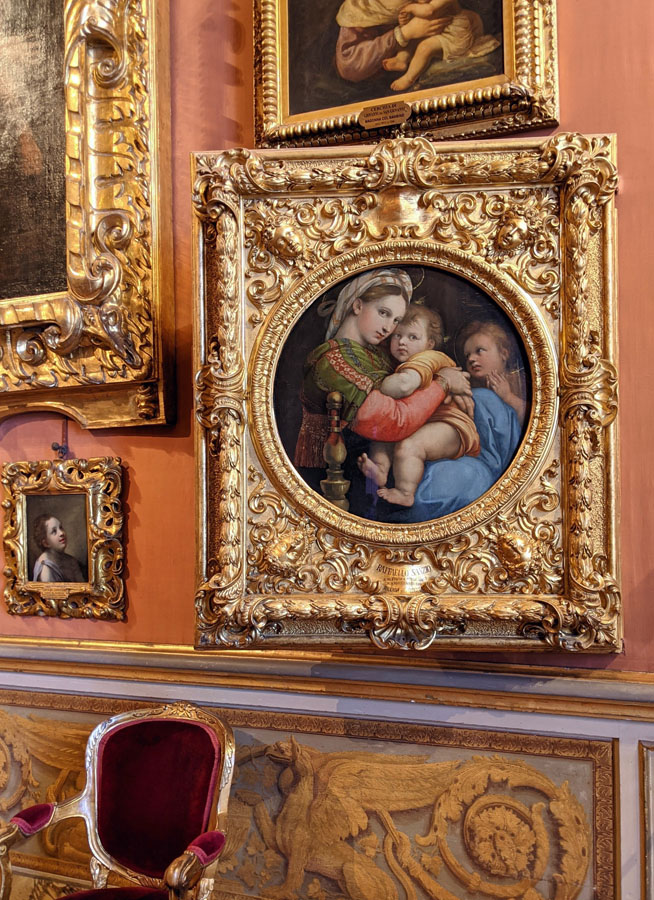
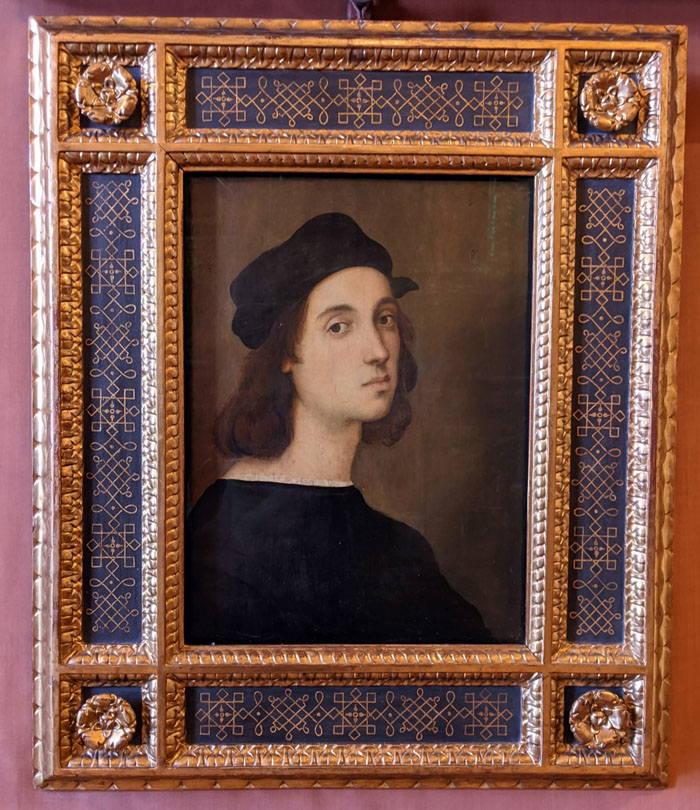
Have I convinced you to visit the Pitti palace in Florence???
#11 The Palace of Versailles
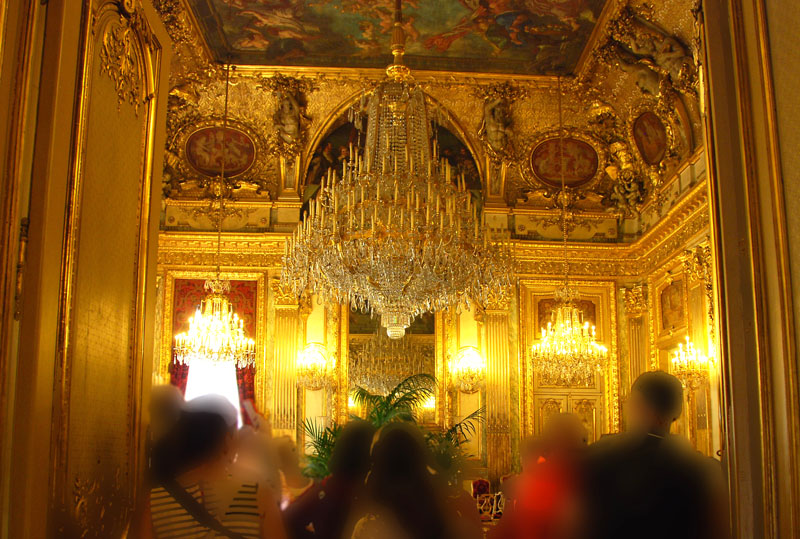
Located just outside Paris, the Palace of Versailles is a stunning French royal palace located in the town of Versailles built in the early 17th century as a hunting lodge for King Louis XIII, but it was greatly expanded and renovated by his son, King Louis XIV, who transformed it into one of the most opulent and extravagant palaces in the world. During the reign of Louis XIV, the Palace of Versailles became the center of political power in France. Consider spending most of the day in this must-see art museum walking through its opulent rooms, gardens, and furnishings containing over 60,000 works.
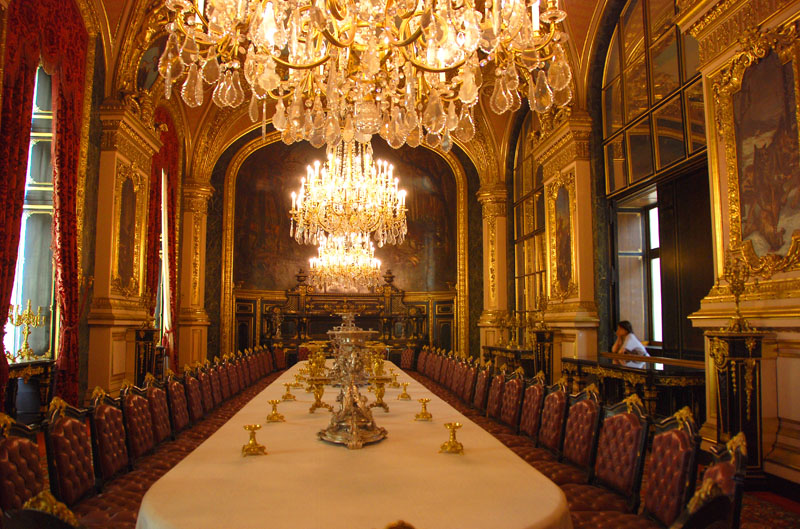
The art collection at Versailles includes decorative objects, tapestries, furniture from the 17th-18th centuries, and art by famous artists of the period, such as Jacques-Louis David, Jean-Marc Nattier, François Boucher, Elisabeth Vigée Le Brun, Ingres, Adélaïde Labille-Guiard, Jean-Marc Nattier, and Hyacinthe Rigaud. These works are primarily portraits of the royal family, as well as mythological scenes and landscapes. The palace is famous for its stunning architecture and lavish interior design, including the Hall of Mirrors, the Royal Chapel, and the Grand Apartments. It also features extensive gardens and fountains, which were designed by the famous landscape architect André Le Nôtre. The Hall of Mirrors and the garden designs were copied by other European royalty to match the grandeur of their courts. Several famous paintings of Napoleon Bonaparte can be found in the Palace of Versailles that document the life and legacy of Napoleon Bonaparte, who was one of the most significant figures in French history.
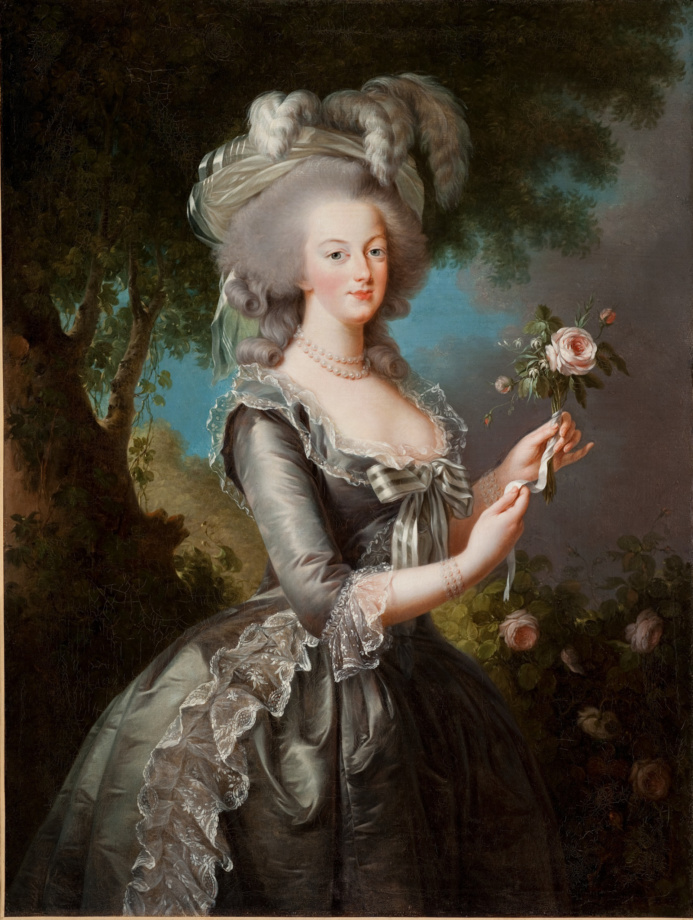
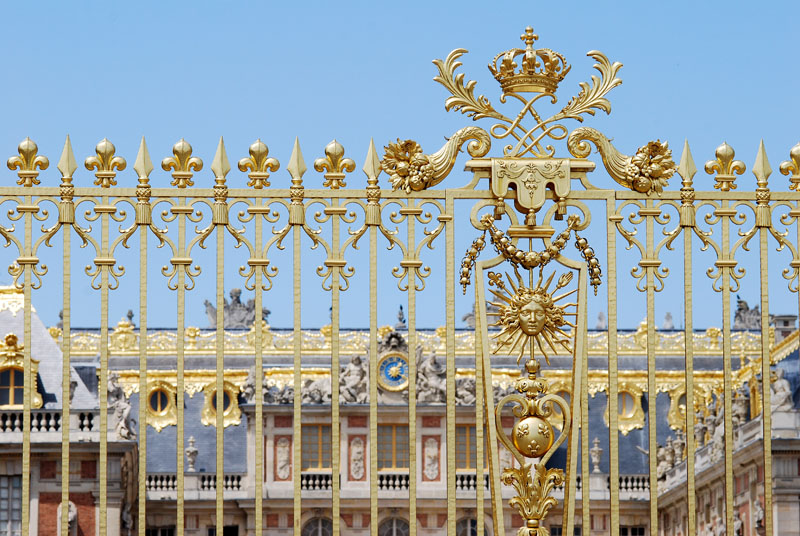
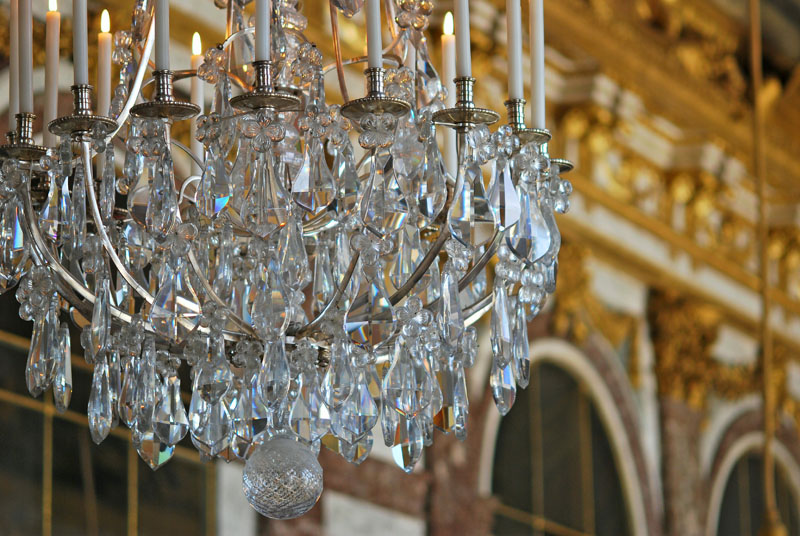
- The Hall of Mirrors – This is perhaps the most famous feature of the Palace of Versailles, with its 17 mirrored arches that reflect the sunlight streaming in through the windows. The hall is also adorned with beautiful ceiling paintings by Charles Le Brun.
- The Royal Chapel – This stunning chapel features marble floors and walls, a vaulted ceiling, and elaborate stained glass windows. It is also home to a famous sculpture of the Assumption of the Virgin Mary by Antoine Coysevox.
- The Grand Apartments – These apartments were once used by the king and queen and are adorned with beautiful frescoes and gilded furnishings. One of the most famous rooms is the Queen’s Bedchamber, which features a magnificent bed decorated with carvings, gold leaf, and richly colored textiles.
- The Gallery of Battles – This gallery features paintings depicting the most significant battles in French history, from the Battle of Tolbiac in 496 to the Battle of Wagram in 1809.
- The Gardens – The gardens of Versailles are a work of art in themselves, with fountains, sculptures, and geometrically designed paths. They are also home to many statues and other works of art, including the famous sculpture of Apollo by Jean-Baptiste Tuby.
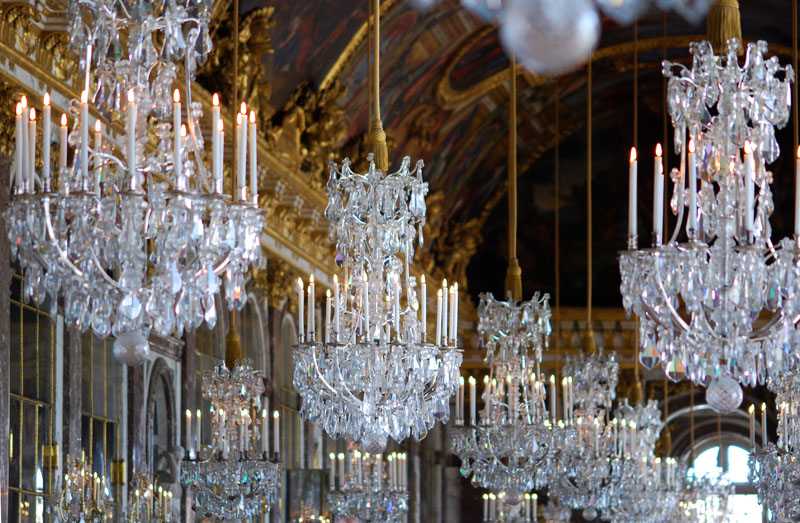
The Catherine Palace has a ‘copy” of the Versailles Hall of Mirrors in St. Petersburg, Russia. The Hall of Mirrors in the Catherine Palace was designed in the late 18th century by the architect Francesco Bartolomeo Rastrelli, who also designed many other rooms in the palace. The Hall of Mirrors in the Summer Palace is a large ballroom with a series of large mirrors along one wall, similar to the Hall of Mirrors in Versailles. However, unlike the French version, the mirrors in the Summer’s Hall of Mirrors are not arched, but rectangular in shape. The mirrors are surrounded by gilded woodwork and decorative paintings on the ceiling and walls. The Hall of Mirrors in St. Petersburg was used for grand receptions, balls and treaty signings during the reign of the Russian tsars.
#12 The National Museum of China, Beijing
While I’ve never been to China, I’d like to list the National Museum of China because it’s also one of the largest art museums in the world, showcasing the country’s rich history and culture through art, artifacts, and exhibitions. It includes works from ancient Chinese dynasties, modern art, and calligraphy. National Museum of China, Beijing: The National Museum of China is the largest in the country, featuring an extensive collection of Chinese art and artifacts dating back over 5,000 years. It is located in Beijing, on the eastern side of Tiananmen Square. The NMC has a permanent collection of over 1.4 million objects, covering various aspects of Chinese history and culture.
#13 National Museum of Anthropology, Mexico City
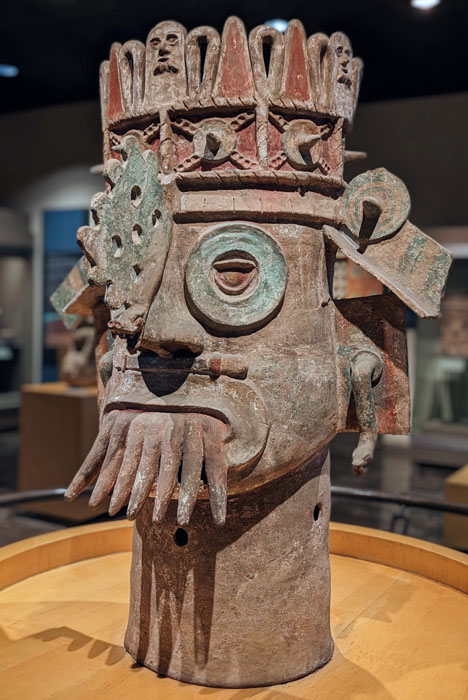
Museo Nacional de Antropología is located in Mexico City. While it’s not an art museum per se, you can’t skip it if you’re in town! I spent almost all day there walking from one gallery to the next. This is one of the best art museums for archeology lovers that consists of 23 permanent archeology exhibit halls with each culture presented in a separate gallery organized in chronological order. The further you go, the more interesting it gets. After visiting this archeological museum I got a much better overview of the tribes, gods, ancient culture, and art of the Mexico region. The Oaxaca, Maya, and Aztec rooms impress with rich archeological collections, including the pyramid’s design and decorum, and the most famous Aztec Calendar, commonly known as the “Sun Stone,” which turns out to be the sacrifice stone to rip the hearts out from people’s chests!!
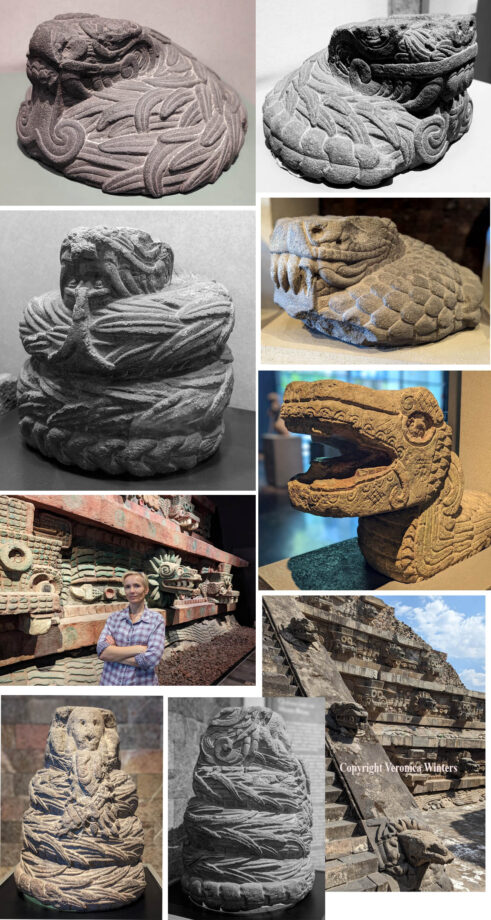
In recent excavations, archeologists have found mass-burials of sacrificed people dressed as warriors buried inside the pyramid in the Teotihuacan -the most important political and religious center erected in 150-200 AD (now about 30 km away from Mexico City). The number of victims and the symmetrical arrangement of sacrificed bodies indicate that the building and the rituals were in direct relationship to the culture’s astronomy, agriculture, and calendar.
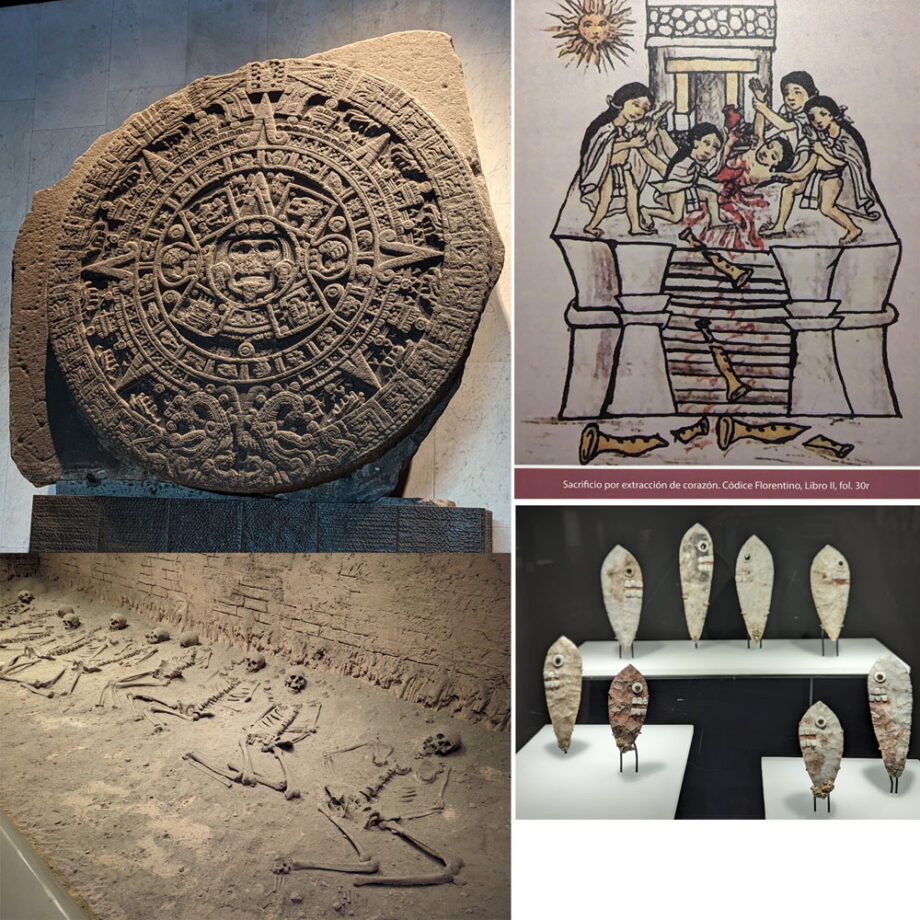
#14 Moscow Kremlin Museums, Moscow, Russia

I was torn on this one. Although the Uffizi Gallery in Florence does have a great collection of Italian art so does the State Russian Museum in St. Petersburg, which has a wonderful collection of Russian art. Also, the Great Peterhof Palace with its golden fountains is a must-see art museum. And the Catherine’s Summer Palace in St. Petersburg is another art marvel. So I decided to list a historic site here that’s not an art gallery per se. However, it offers a unique cultural experience that’s very different from the rest of Western Europe.

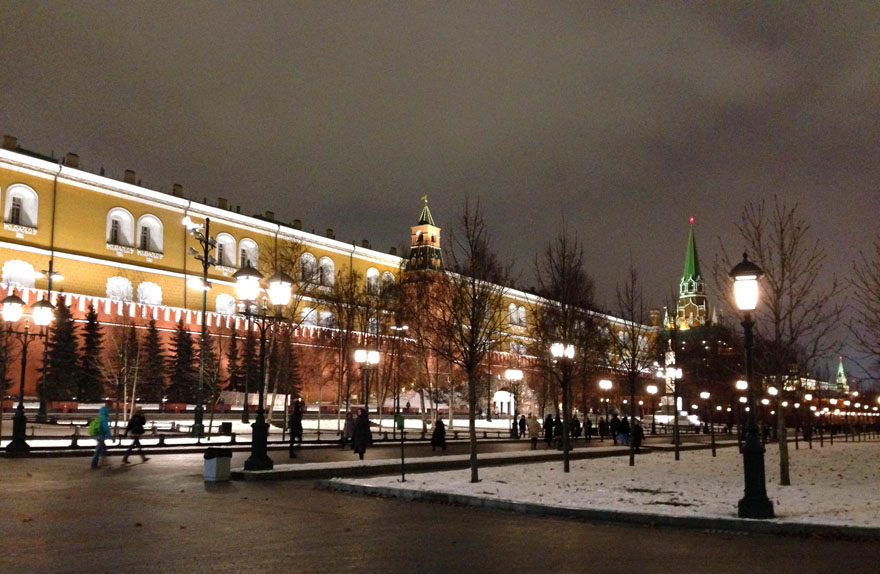
Every nation has its historic center. The Kremlin is a historic fortress located in the heart of Moscow and is a UNESCO World Heritage site and a symbol of Russian statehood. It is a complex of buildings that includes the Armoury Chamber and the architectural ensemble of the Cathedral Square, consisting of the Assumption, Archangel, and Annunciation cathedrals, the Church of Laying Our Lady’s Holy Robe, the Patriarch’s Palace with the Twelve Apostles Church and the ‘Ivan the Great’ Bell Tower complex, as well as the exhibition halls in the Assumption Belfry and in the One-Pillar Chamber of the Patriarch’s Palace. Reserve several hours to visit everything and be aware that the must-see diamond fund may have a separate entry ticket. Some of the top attractions to see within the Kremlin complex are:
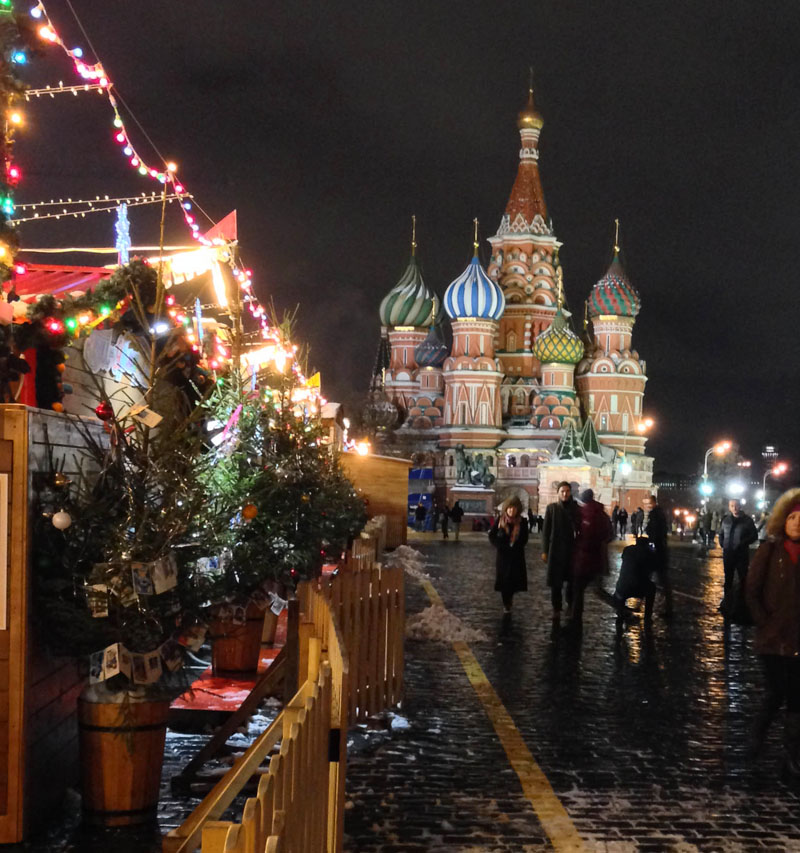
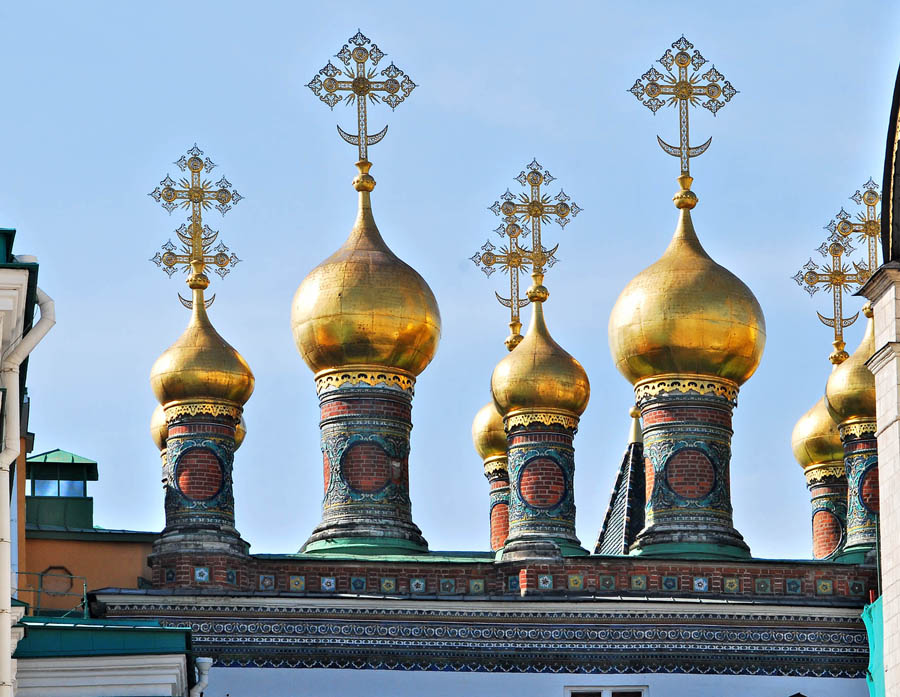
The Armoury Chamber: This museum houses an impressive collection of royal treasures, including Fabergé eggs, carriages, and ceremonial weapons.
The State Kremlin Palace: This grand concert hall is one of the largest in Russia and is used for major events and performances.
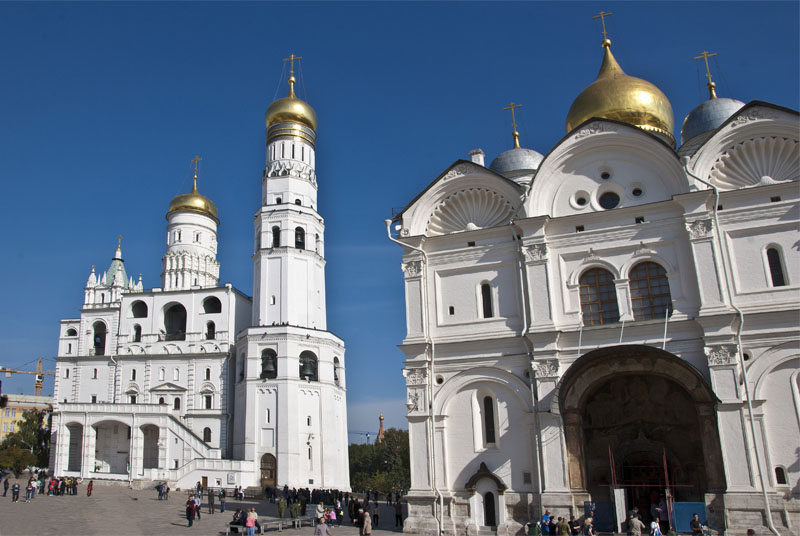
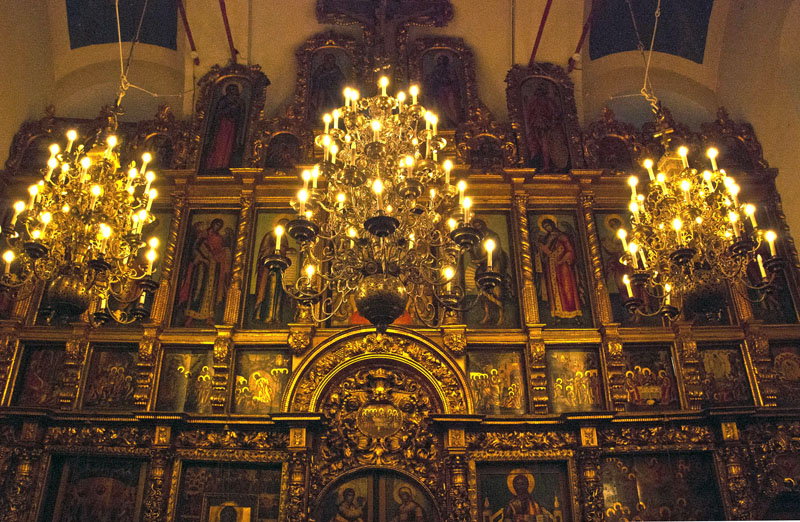
The Cathedral of the Assumption: This cathedral was the main church of the Russian Orthodox Church and was used for the coronation of Russian tsars.
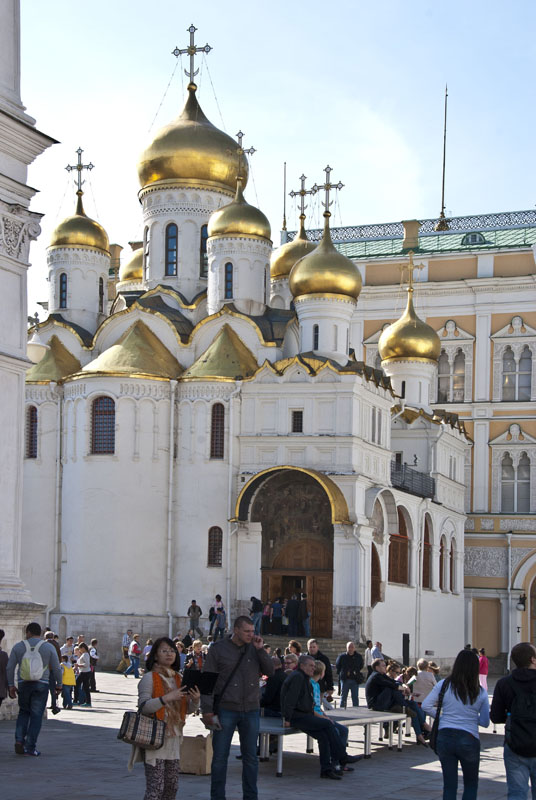
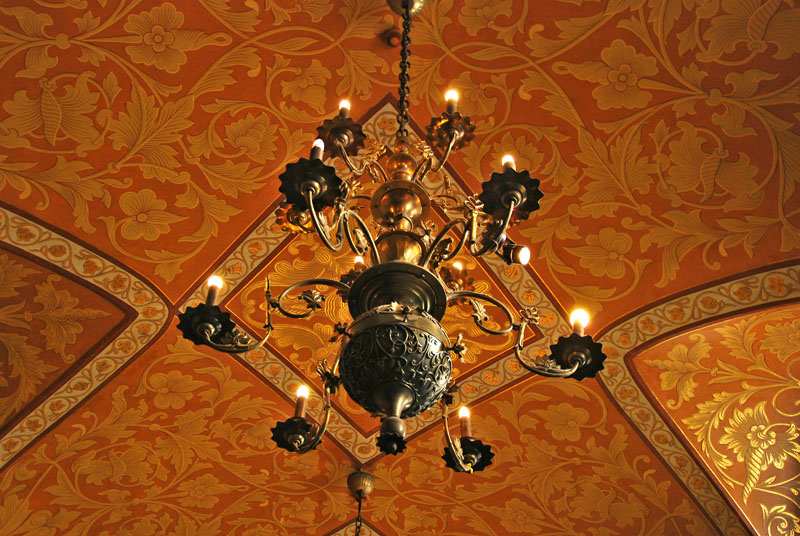
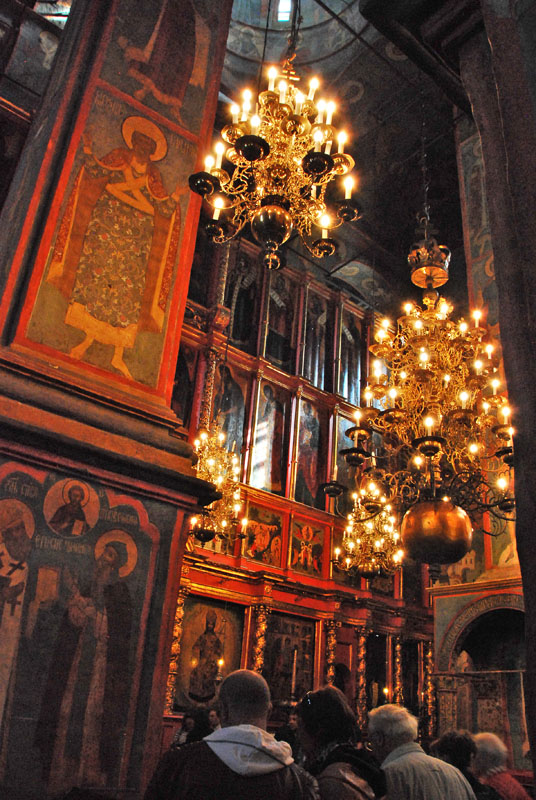
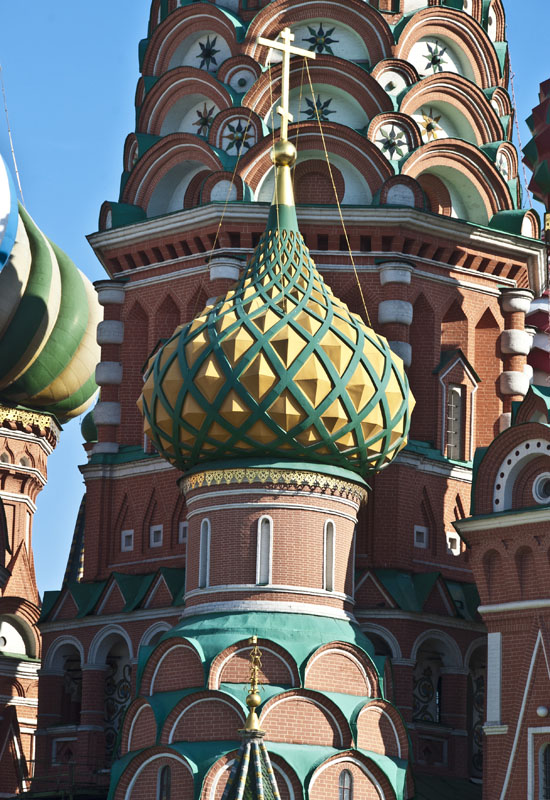
The Grand Kremlin Palace: This palace was built in the 19th century and was used as the residence of Russian tsars and later Soviet leaders.
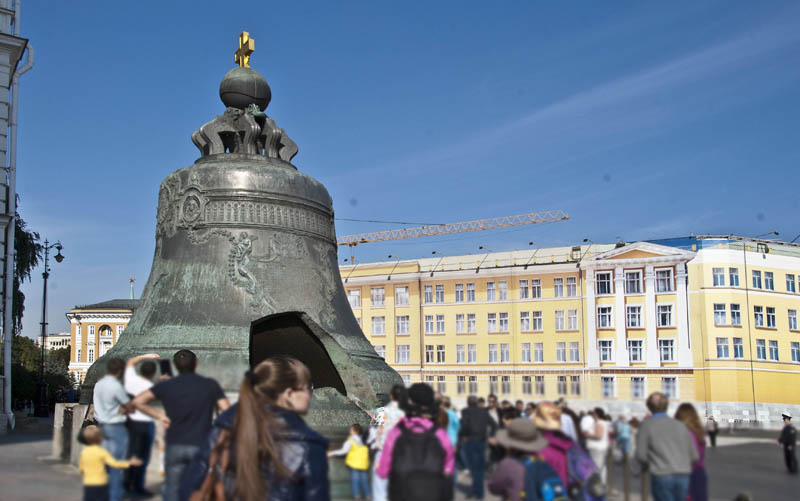
The State Historical Museum: This museum contains a vast collection of artifacts and exhibits that tell the story of Russia’s rich history.
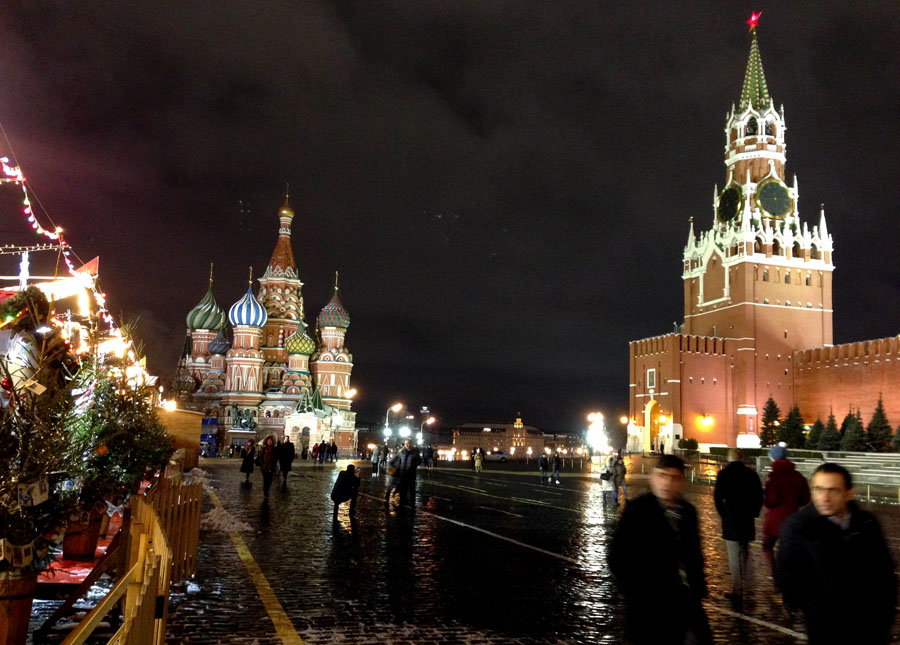
The Diamond Fund:
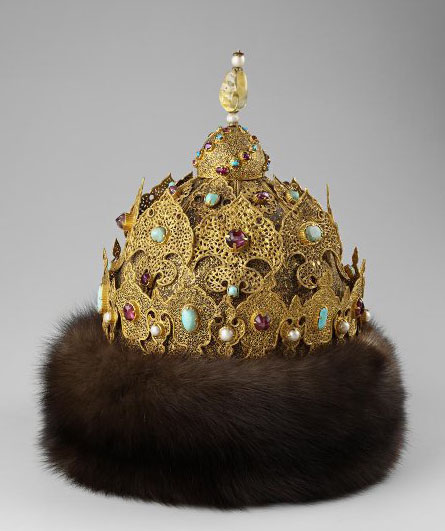
The Diamond Fund: is a museum located within the Kremlin complex in Moscow, Russia. It contains an impressive collection of jewels, precious stones, and artifacts related to the Russian royal family and nobility in Russian history. Some of the items on display at the Diamond Fund include:
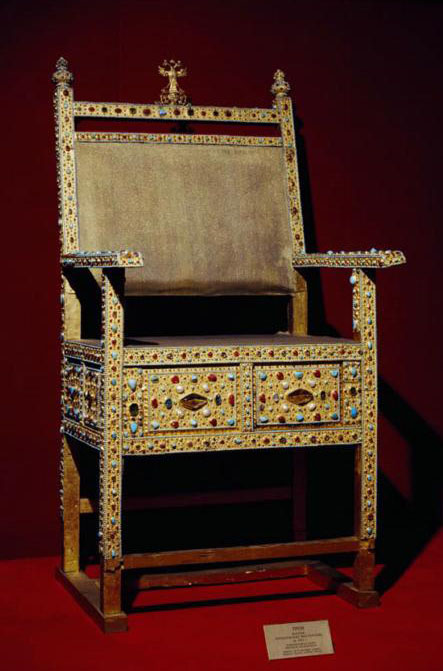
Gold, precious stones, pearls, wood, velvet, brocade; embossing, flat chasing
- The Imperial Crown of Russia: This crown was made in 1762 for the coronation of Catherine the Great and contains more than 4,000 diamonds, including the famous Orlov diamond.
- The Orlov Diamond: This diamond is one of the largest and most famous in the world, weighing 189.62 carats. It is said to have belonged to the Mughal Emperor Shah Jahan before being acquired by Catherine the Great.
- The Shah Diamond: This diamond weighs 88.7 carats and is said to have been owned by the Persian ruler Nadir Shah.
- The Imperial Sceptre: This scepter was made in 1741 for the coronation of Empress Elizabeth and is adorned with a large diamond known as the Great Imperial Crown Diamond.
- The Imperial Sword: This sword was made in 1801 for the coronation of Tsar Alexander I and is adorned with more than 1,000 diamonds.
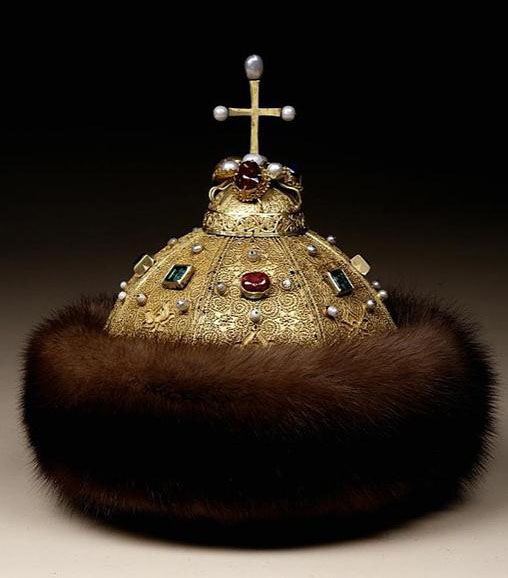
Barmy (regalia collar) of Tsar Alexey Mikhailovich, Istanbul, 1660-1662, gold, diamonds, rubies, emeralds, sapphires, fabric; chasing, enamel, carving
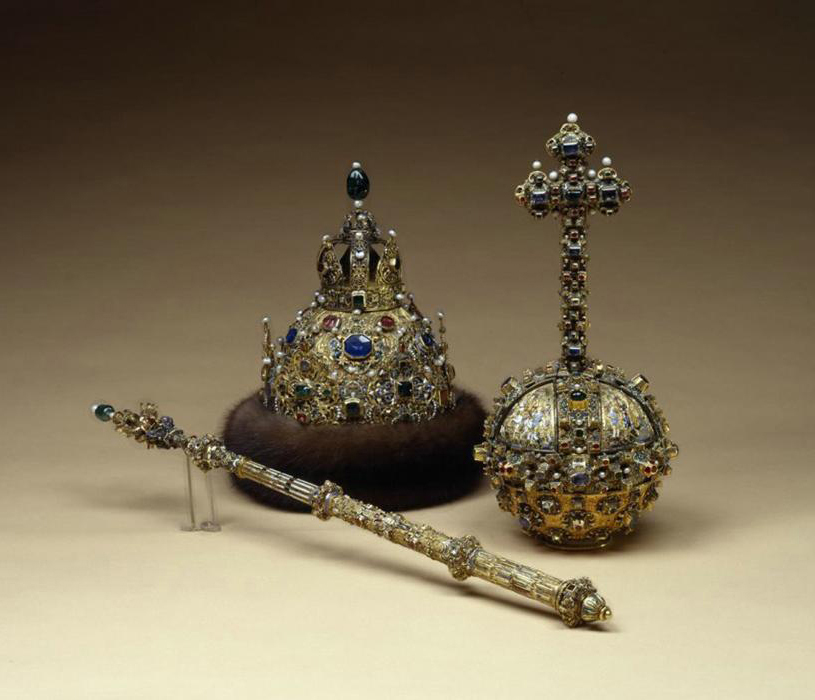
Gold Chain of Tsar Mikhail Fyodorovich, The Moscow Kremlin Workshops, 1613-1626, gold, chasing, carving, flat chasing, riveting.
The Crown of the Tsarina Alexandra: This crown was made in 1900 for the coronation of Tsar Nicholas II and is adorned with diamonds, sapphires, and other precious stones.
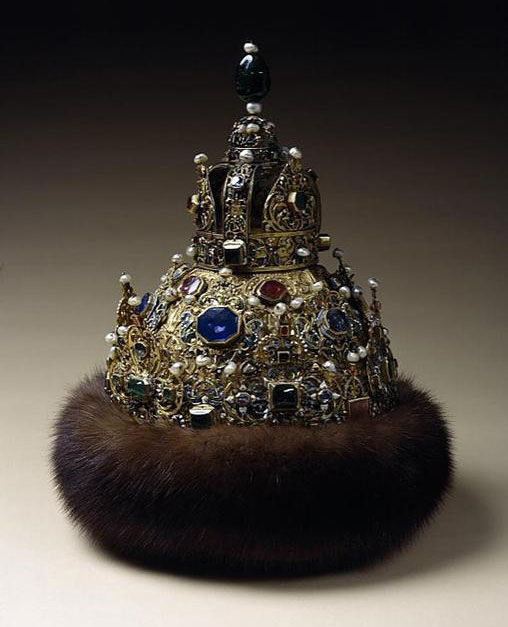
Gold, silver, precious stones, pearls, fur; casting, embossing, engraving, enamel.
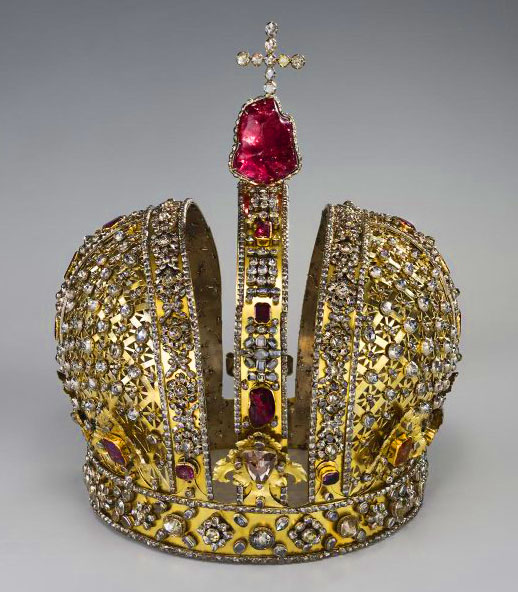
Casting, chasing, engraving, gilding, Height: 31,3 cm; circumference: 68,0 cm. Photo of the museum.

#15 The British Museum – London, UK
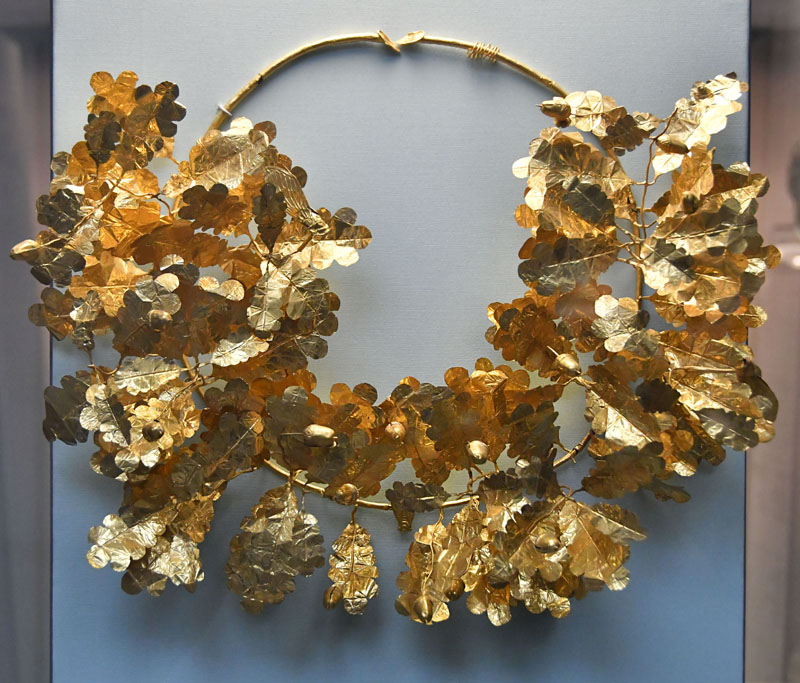
The British Museum is one of the best art museums in the world that has over 8 million works in its collection, covering the history of human civilization from the beginning of time. It is also home to some of the most impressive pieces of art from ancient Egypt and Greece, including the Rosetta Stone, the Parthenon sculptures, and the Elgin Marbles. I think your desire to visit this museum will depend on your interests because if you don’t care about history and archeology, this museum might not be great for you. Some of the most popular and significant areas of the museum’s collection include:
Greek and Roman antiquities: The must-see art museum has an extensive collection of ancient Greek and Roman artifacts, including the Parthenon sculptures (also known as the Elgin Marbles) and the Rosetta Stone.
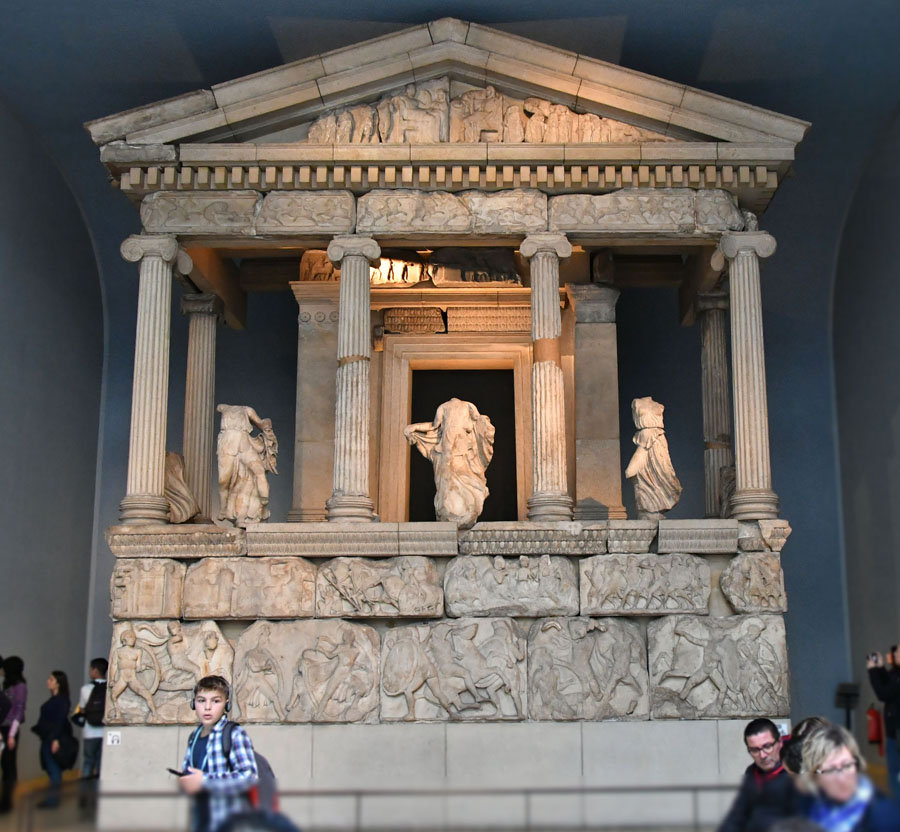
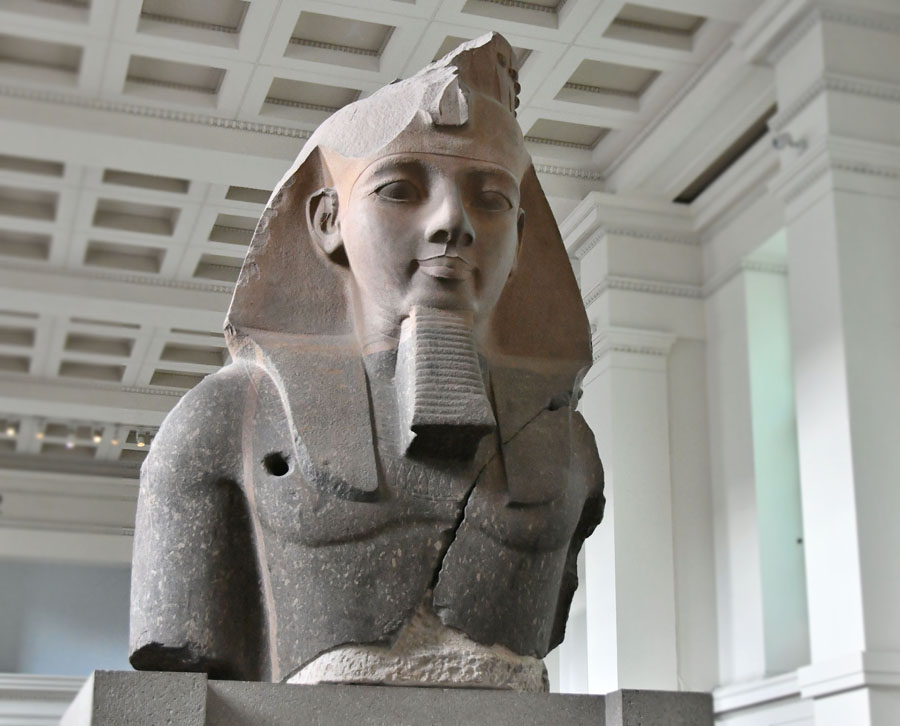
I must say that if you go to the British museum for ancient Egyptian art, travel to Florence and visit their archeological museum that has an amazing art collection of well-preserved Egyptian art and artifacts.
Ancient Egypt: The British Museum’s collection of ancient Egyptian artifacts is one of the largest in the world, with over 100,000 objects ranging from mummies and sarcophagi to sculptures and hieroglyphic inscriptions. You’ll see coffins from 240 BC, the wall paintings from Nebamun’s tomb chapel from 1350BC, Book of the Dead of Hunefer papyrus from 1450BC and many more other exciting artifacts that are fun for the kids to learn about.
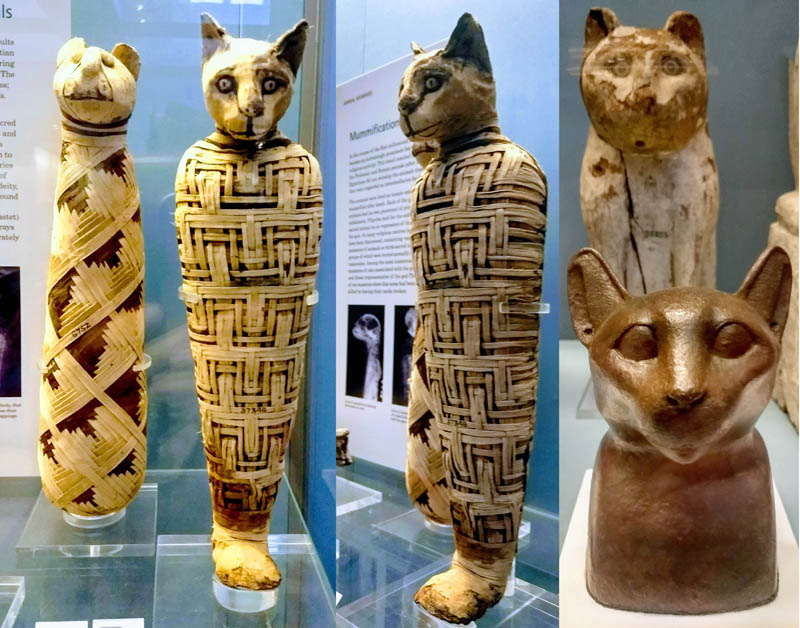
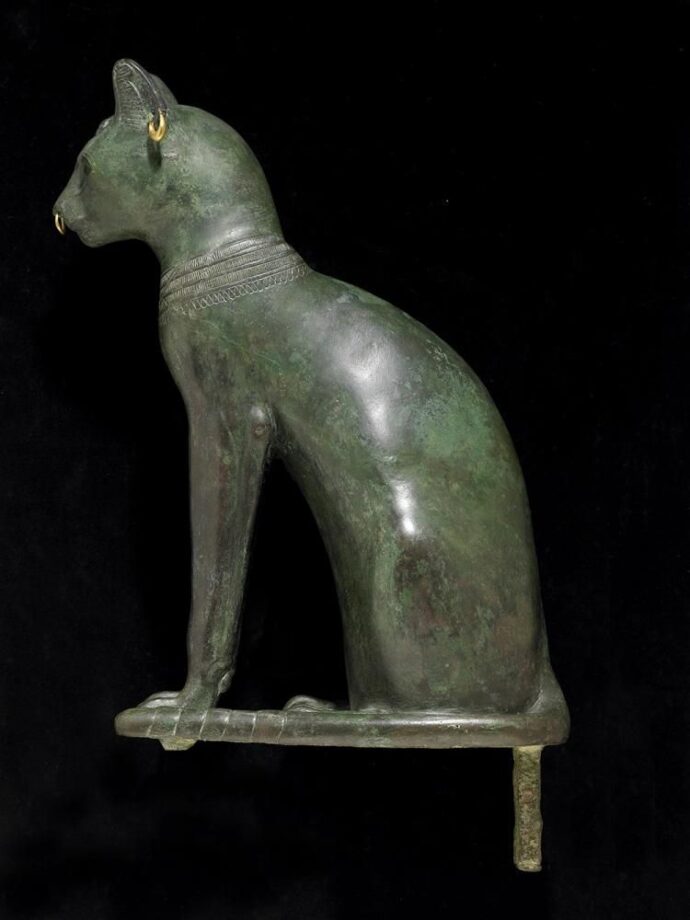
The Gayer-Anderson cat is a beautifully crafted piece, with intricate detailing on the fur and a regal expression on its face. It is also notable for its inscriptions, which include the name of a high-ranking priest named Udjahorresnet, who served during the reign of the pharaoh Psamtik I. The statue has become famous for its association with Gayer-Anderson, who was an eccentric collector and scholar of Middle Eastern art and architecture. He acquired the statue during his time in Egypt in the 1920s and 1930s, and it became one of his most prized possessions. You can find it here: https://www.britishmuseum.org/collection/animals/gayer-anderson-cat
The Rosetta Stone is a large slab of black basalt inscribed with a decree issued at Memphis, Egypt in 196 BC. The decree is written in three scripts: ancient Greek, demotic (a form of Egyptian script used by ordinary people), and hieroglyphics (a script used by priests and nobles). The stone was discovered by a French soldier during Napoleon’s campaign in Egypt in 1799 and eventually ended up in the possession of the British after the defeat of Napoleon’s forces. The Rosetta Stone was a breakthrough in the decipherment of Egyptian hieroglyphs. The Greek text was relatively easy to translate, and by comparing it to Egyptian texts, scholars were able to begin to understand the meaning of the hieroglyphs. The decipherment of the hieroglyphics on the Rosetta Stone was a breakthrough in the understanding of ancient Egyptian culture and language. It allowed scholars to translate many other Egyptian texts and provided important insights into the culture, religion, and history of ancient Egypt. It’s on permanent display in the Egyptian Sculpture Gallery. Despite its historical significance, the stone looks quite boring in comparison to other Egyptian statues. It’s 1 meter in length and 70 centimeters in height and weights around 760 kg. However, its role in unlocking the secrets of ancient Egypt has made it one of the most important artifacts in the world.
Middle Eastern civilizations: The museum has an impressive collection of artifacts from the Middle East, including the Cyrus Cylinder, which is considered the world’s first declaration of human rights.
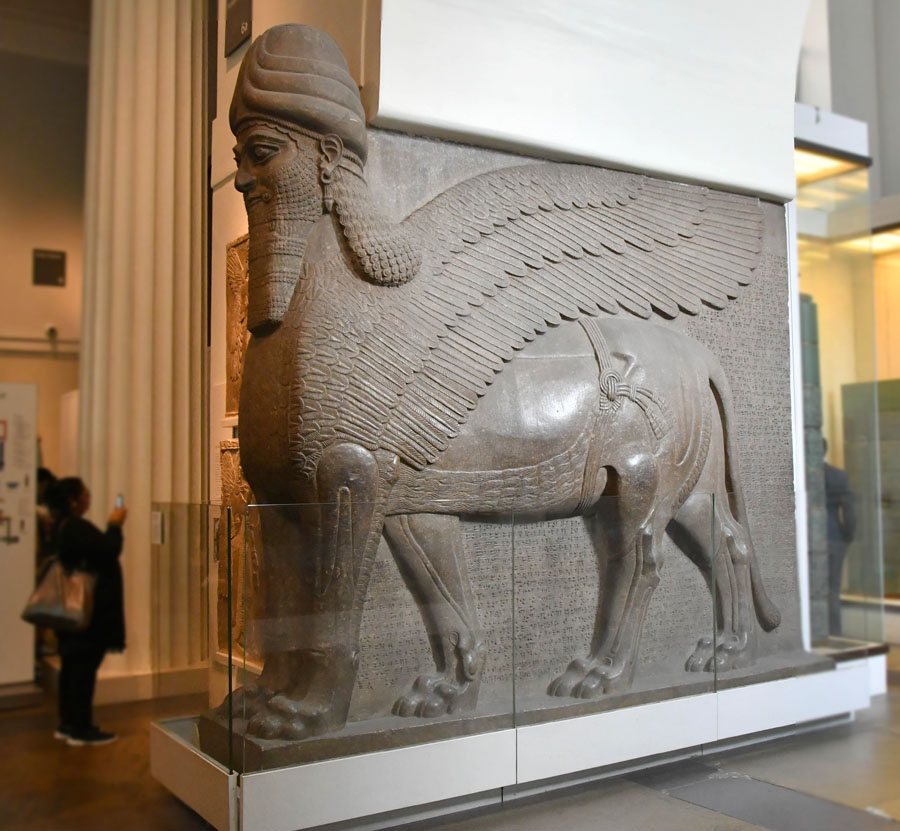
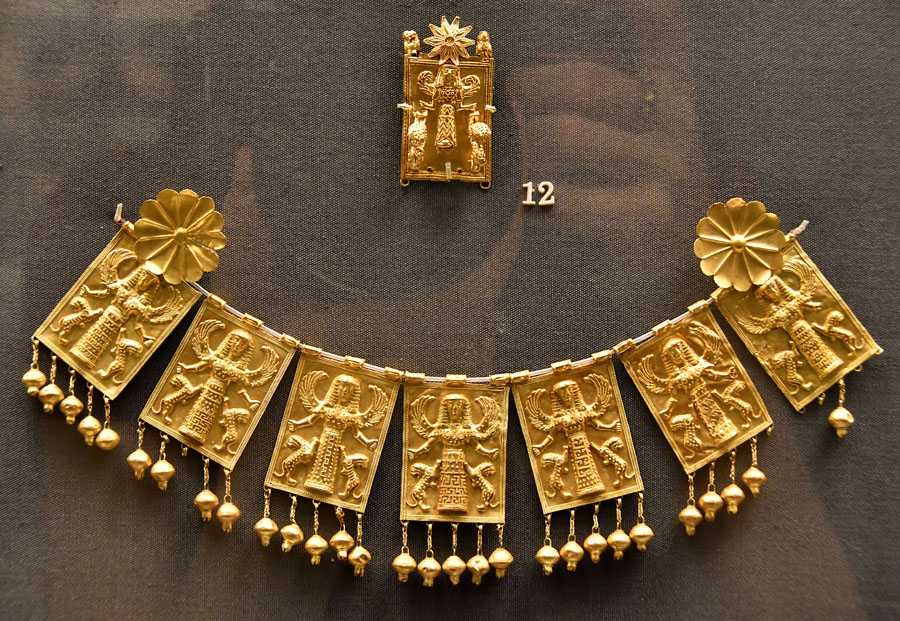
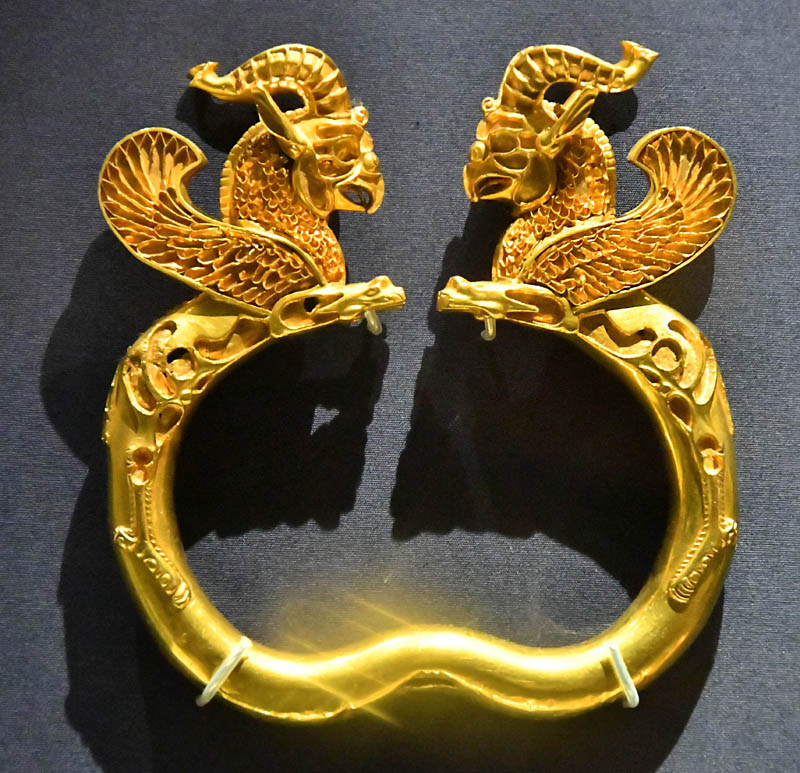
The Standard of Ur: This is a Sumerian artifact from ancient Mesopotamia, dating back to around 2500 BCE. It is a wooden box that is decorated with inlaid panels of shell, lapis lazuli, and red limestone and is thought to have been used as a military standard.
Asia: The museum’s collection of Asian art and artifacts is also significant, with highlights including the Admonitions Scroll, a Chinese painting from the 6th century, and the Amaravati sculptures, which date back to the 2nd century BC.
Contemporary art: In addition to its historical collections, the British Museum also has a collection of contemporary art, including works by famous artists such as Damien Hirst and Ai Weiwei.
The Middle East
While Thailand has unbelievably rich and beautiful palaces and Japan offers peaceful temples, big art museums are not there. I’ve never been to India, the Middle East, or China, so it’s difficult for me to make a comparison although I wish to see the Indian temples in situ one day. Several excellent art museums in the Middle East showcase the region’s rich artistic and cultural heritage.
- The Museum of Islamic Art, Doha, Qatar: This museum, located in the heart of Doha, is dedicated to Islamic art and culture from across the Islamic world, including North Africa, the Middle East, and Central Asia. The museum’s collection includes ceramics, textiles, jewelry, calligraphy, and other works of art, dating from the 7th to the 19th centuries.
- Louvre Abu Dhabi, United Arab Emirates: Opened in 2017, the Louvre Abu Dhabi is the first outpost of the famous Parisian museum outside of France. The museum features a collection of art and artifacts from around the world, with a particular focus on bridging the gap between Eastern and Western art. The collection includes ancient artifacts, contemporary art, and everything in between.
- The Sharjah Art Museum, Sharjah, UAE: This museum, located in the emirate of Sharjah, is one of the largest art museums in the Middle East, featuring a collection of contemporary art from across the region and beyond. The museum regularly hosts exhibitions and events that showcase the work of emerging and established artists.
Rome
I also want to make a special note about Rome because it’s the center of so much ancient Greco-Roman art! More ancient architecture is being discovered underground or meshed between the modern apartments in central Rome even today. Here are some of the top art museums in Rome (in addition to the Vatican museums):
Galleria Borghese
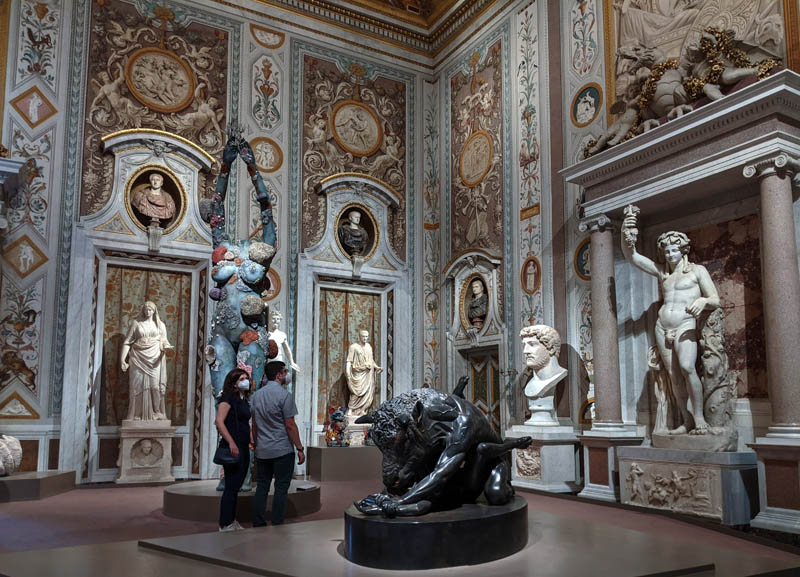
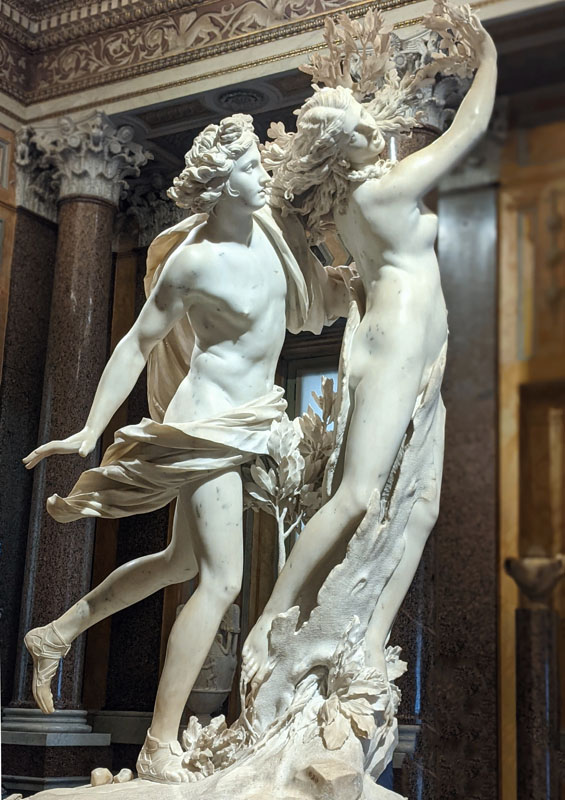
The Galleria Borghese is a stunning 17th-century palace-turned-museum that houses a collection of masterpieces by renowned Italian artists commissioned by Cardinal Borghese. Its collection includes sculptures, paintings, and decorative arts, all displayed in opulent rooms that evoke the grandeur of Baroque Rome. While some rooms are going overboard decorated with art, they house very famous Baroque sculptures by Bernini like Apollo and Daphne, David, and the rape of Proserpina. There’s an entire wall dedicated to the Caravaggio’s art. And you can find Raphael and Titian there too. You can see pictures here: https://veronicasart.com/damien-hirst-genius-or-imposter-solo-show-at-villa-borghese-in-rome/
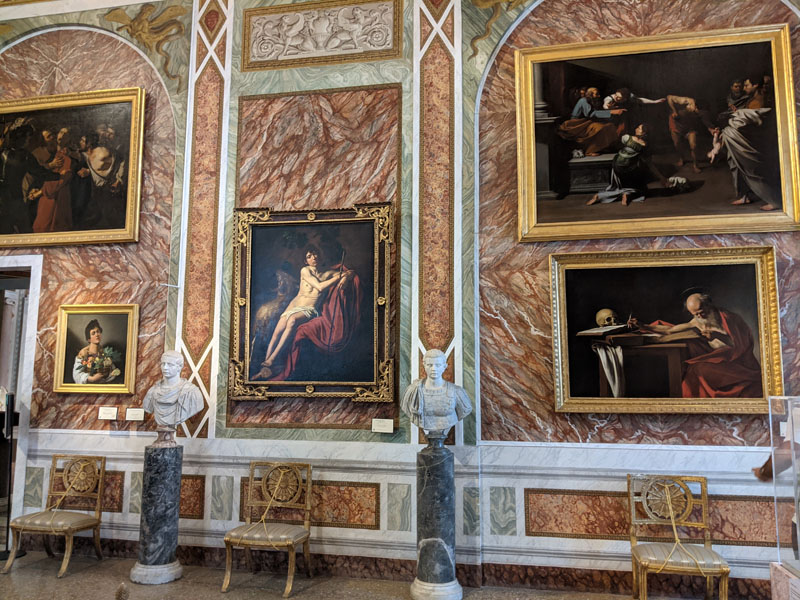
Capitoline Museums are a group of art and archaeological museums located on Capitoline Hill in Rome. They feature an impressive collection of ancient Roman sculptures, as well as Renaissance and Baroque paintings, including works by Caravaggio and Titian. And National Roman Museum is a network of four museums in Rome that focus on the ancient Roman world. Its collections include ancient Roman sculptures, mosaics, and frescoes, as well as other artifacts from ancient Greece and the Near East.
Galleria Nazionale d’Arte Antica at Palazzo Barberini, Rome is a fairly modest gallery that displays some of the most famous paintings like Caravaggio’s Judith Beheading Holofernes, 1602.
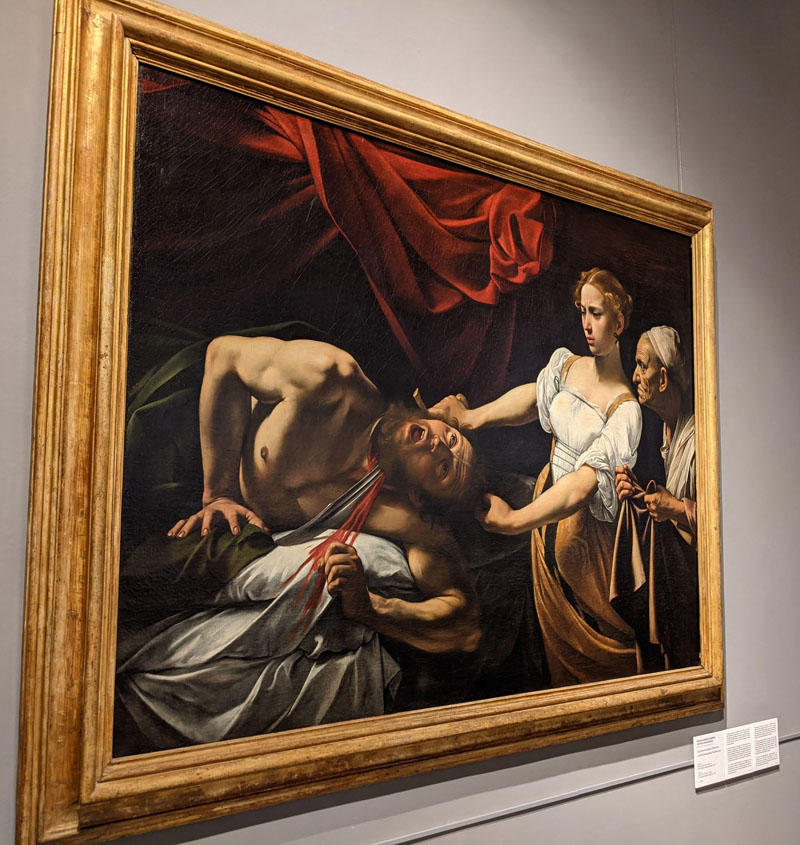
I hope you enjoyed traveling across the world and visiting the best art museums in the world virtually. If you have a chance, visit each one in the near future. Subscribe to my monthly VIP email list. 🙂 And share this article with your friends!!!
What are your favorite? Let me know! Connect with me here:
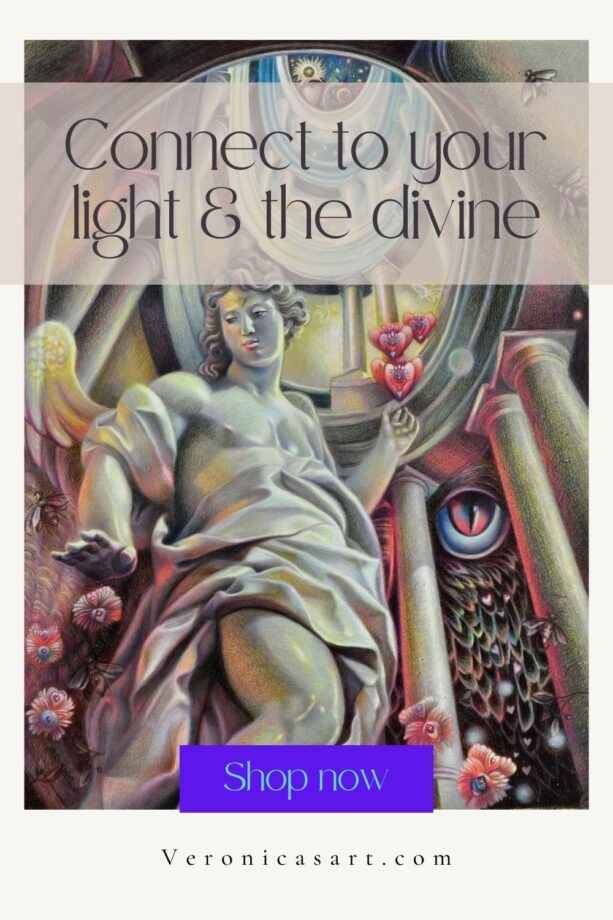
Start Shopping!
Check out other art museums and residencies:
https://veronicasart.com/vizcaya-museum-and-gardens-floridas-best-mansion-to-see/